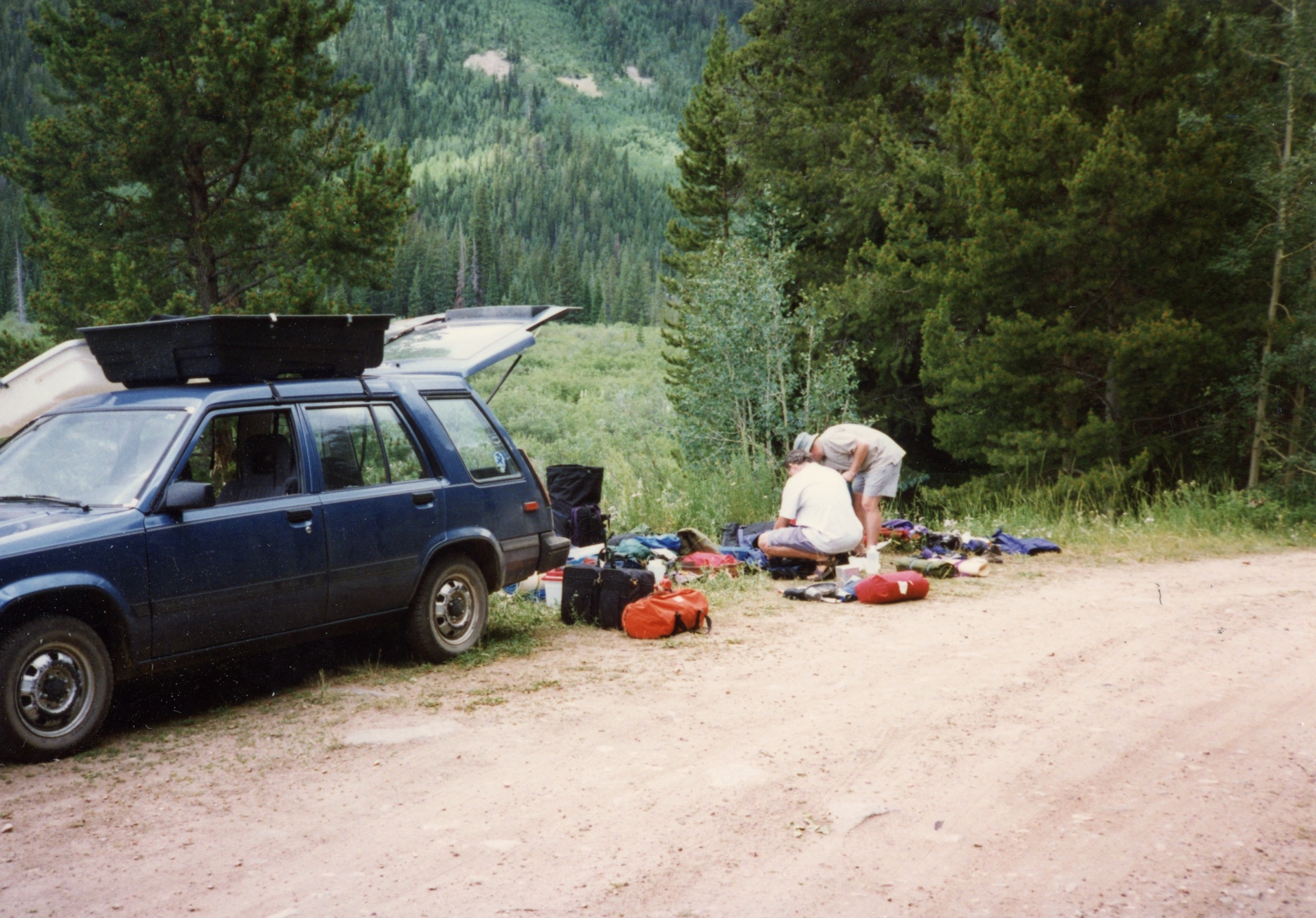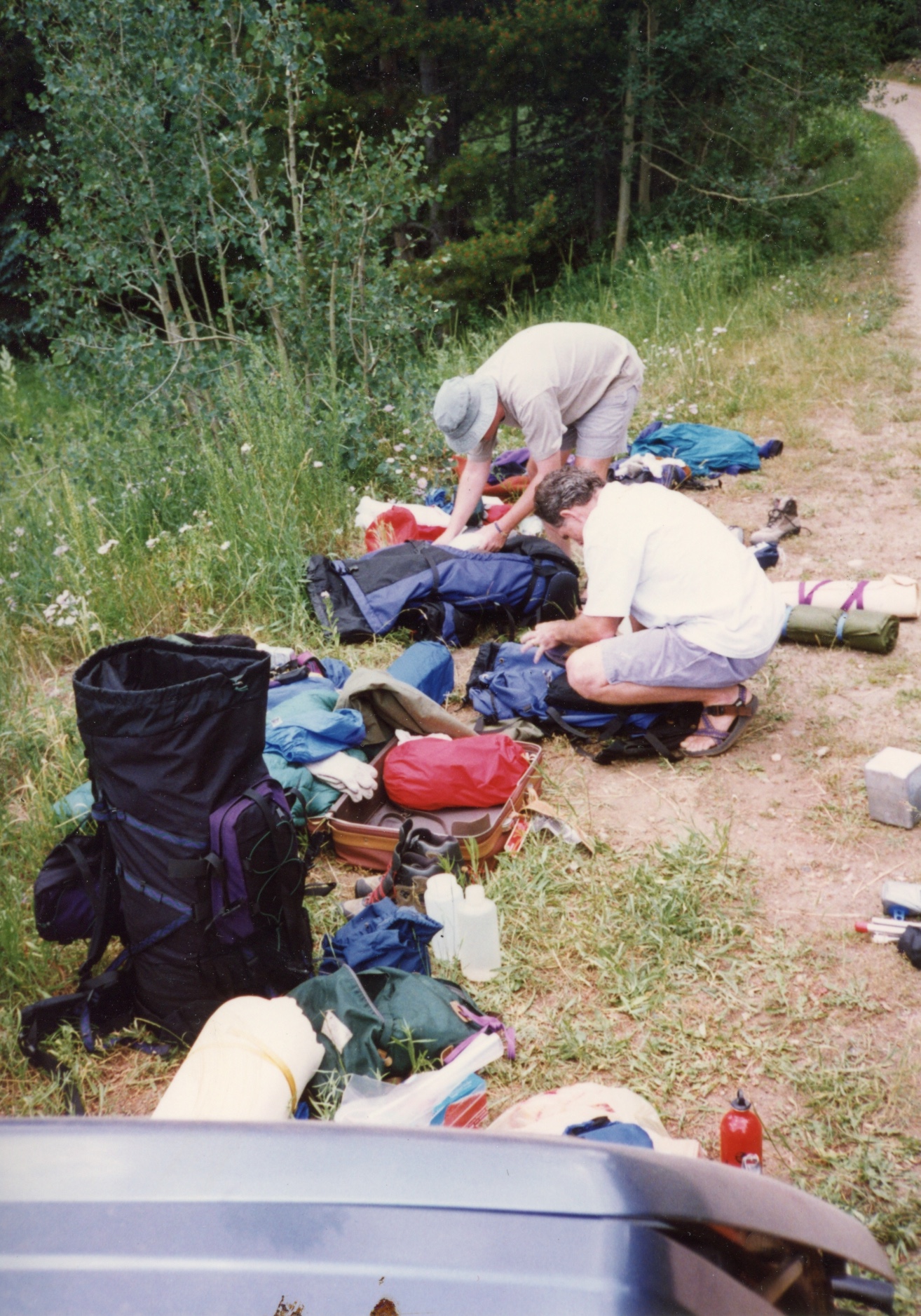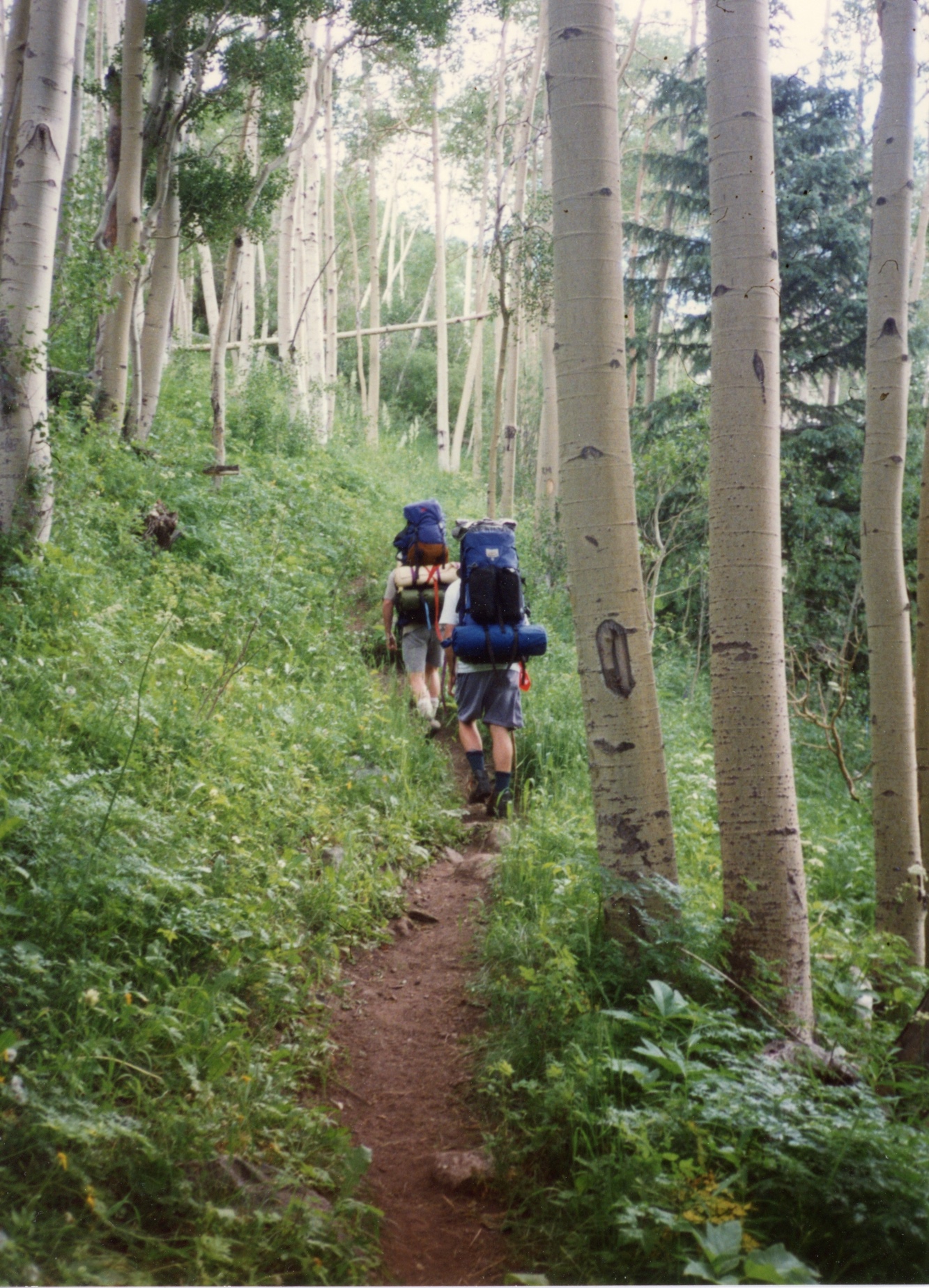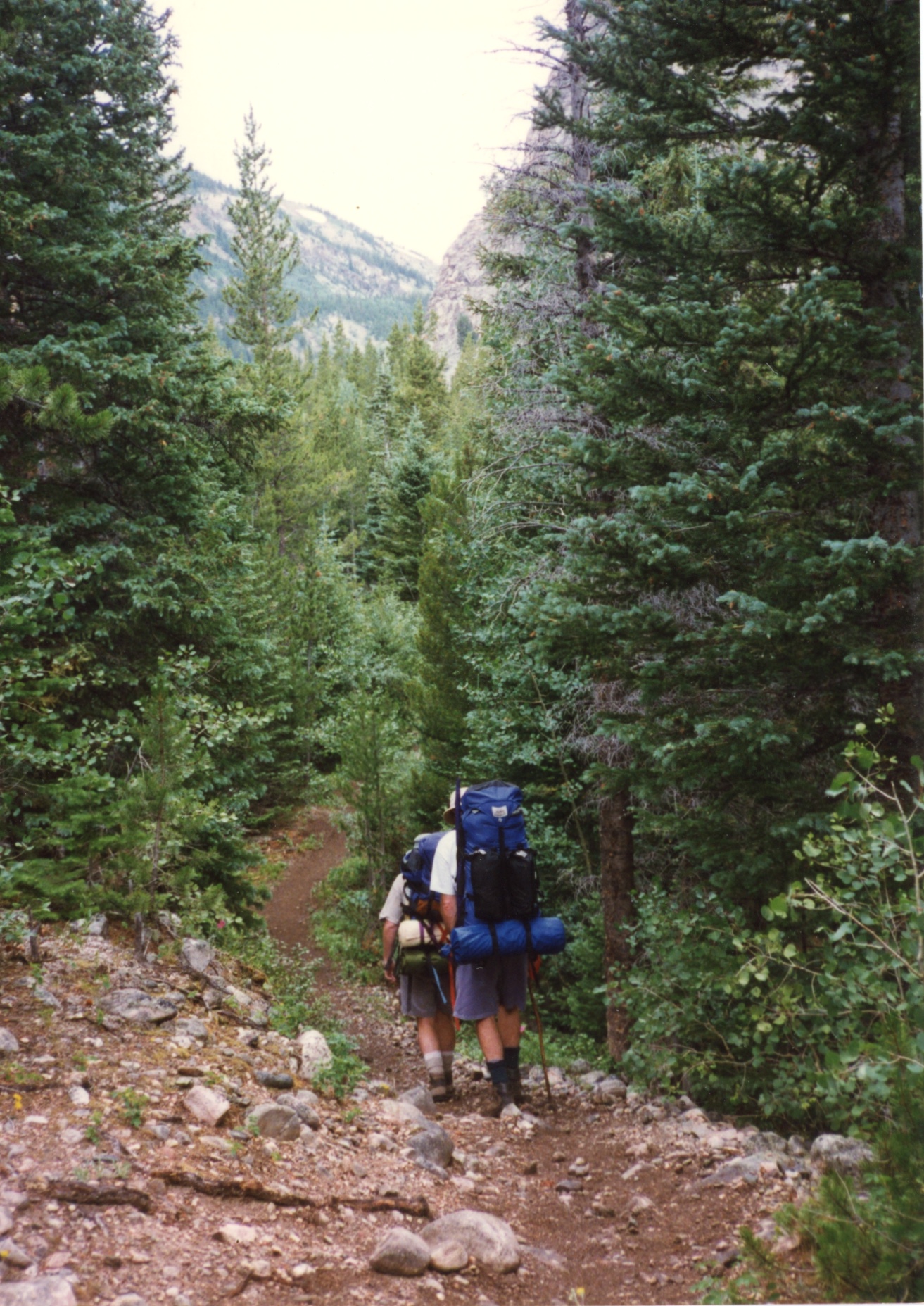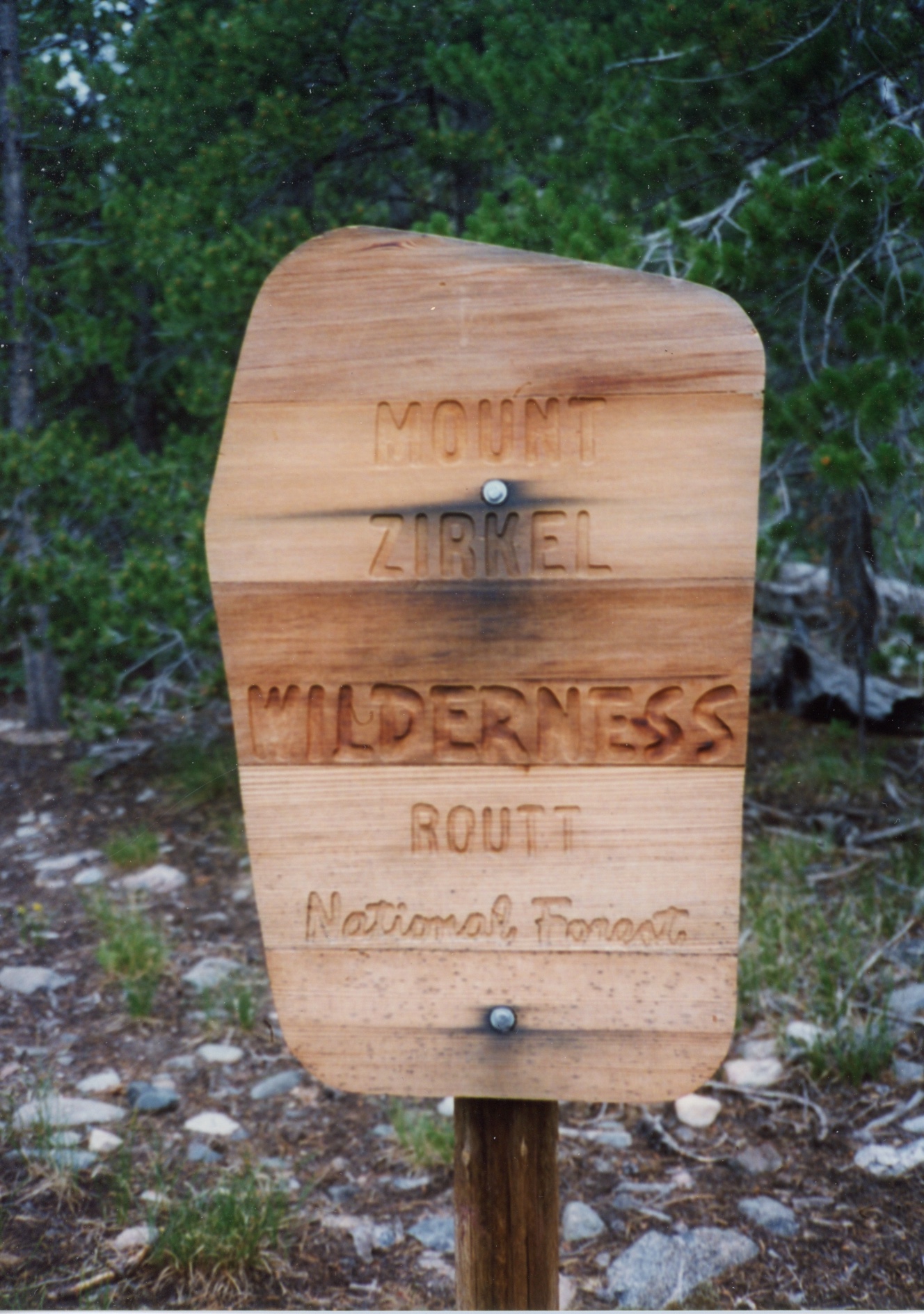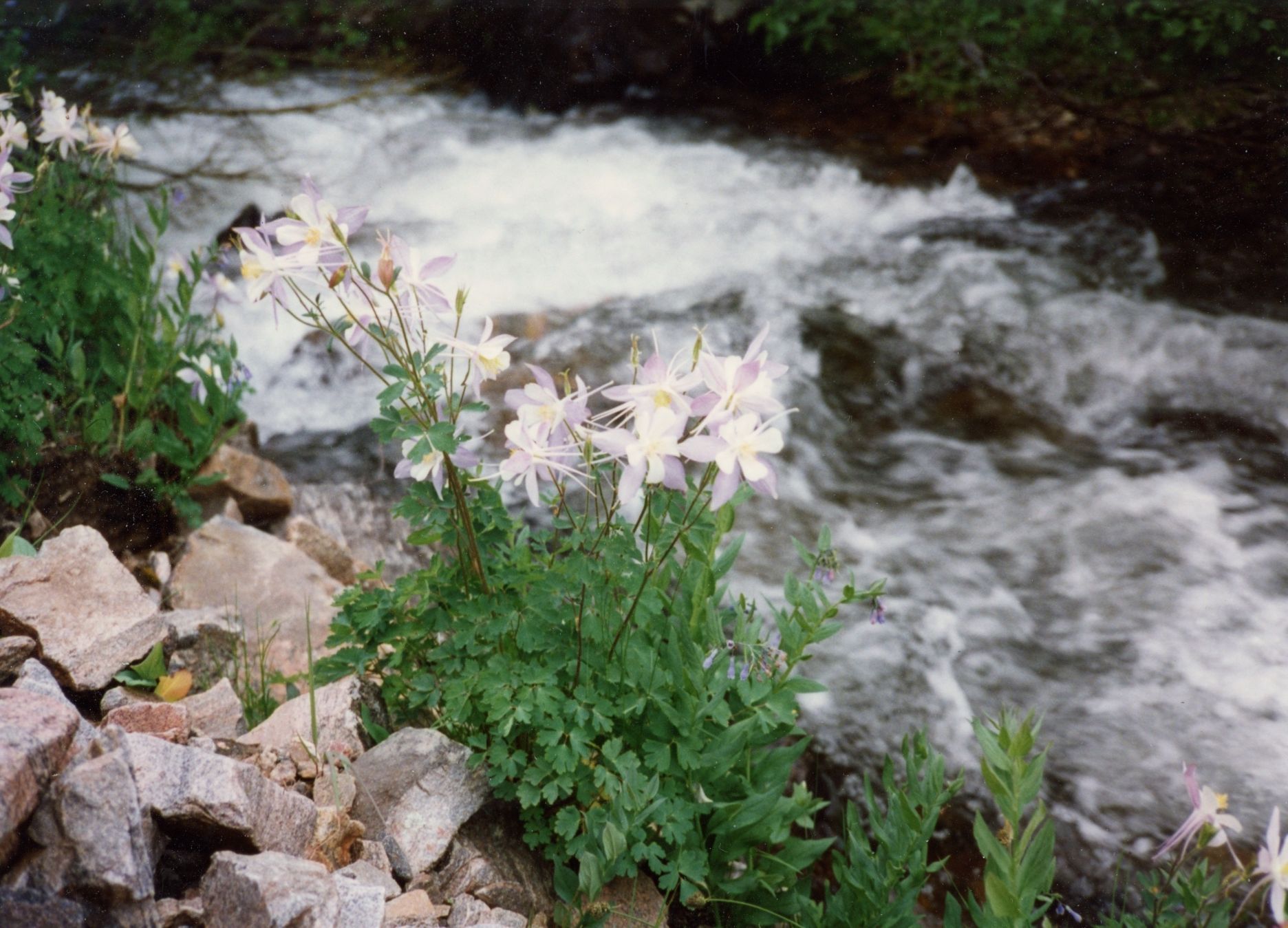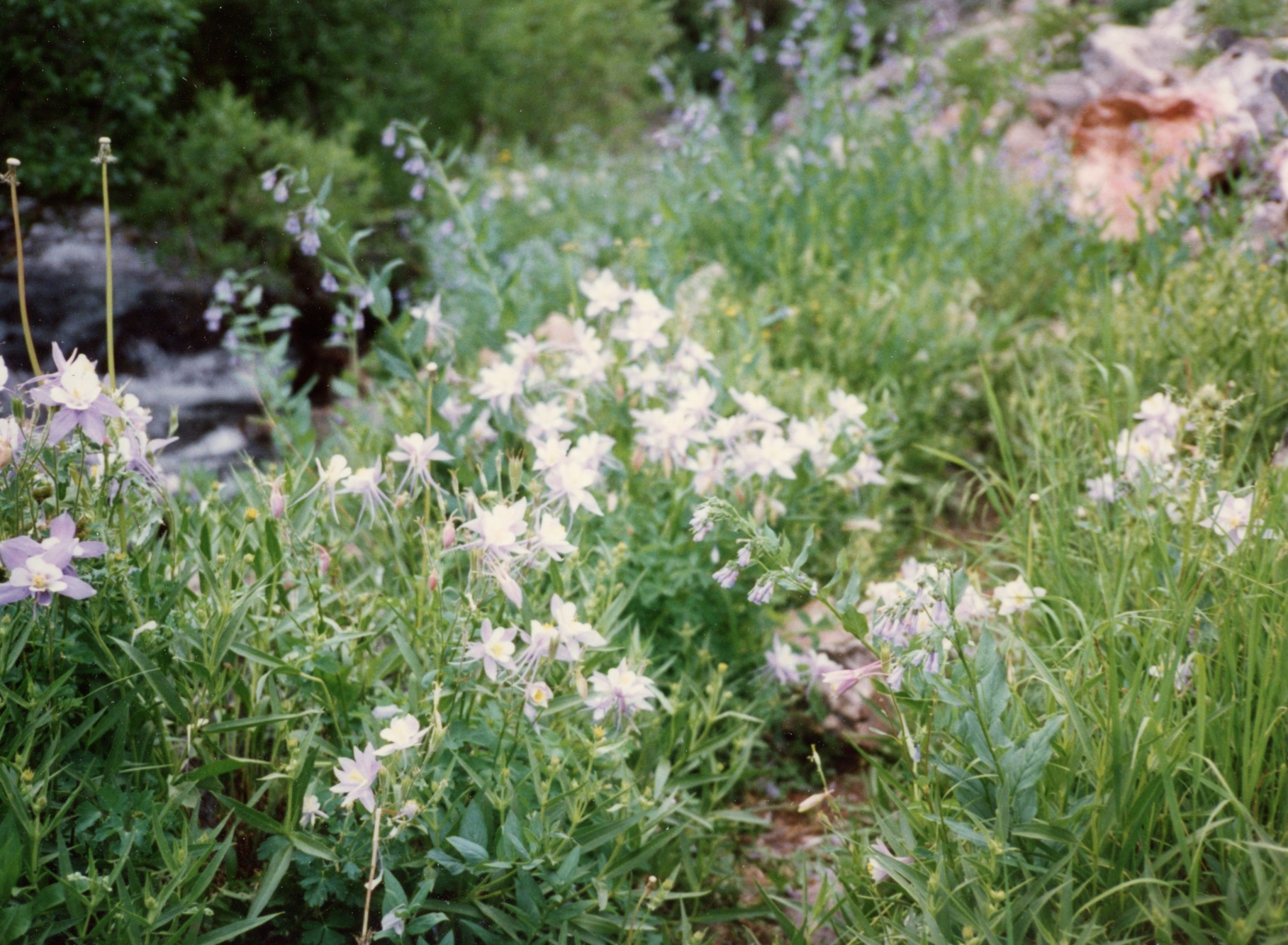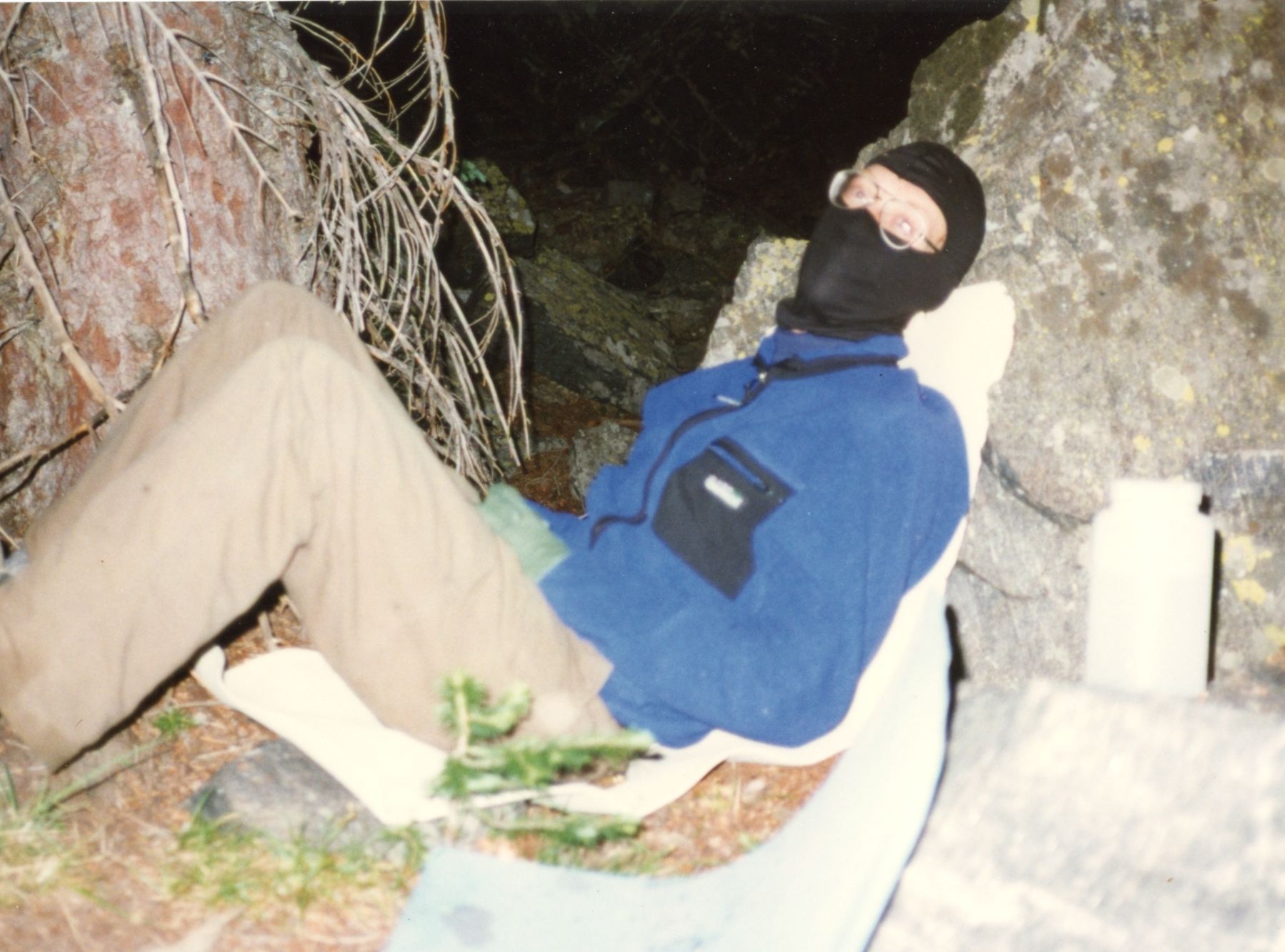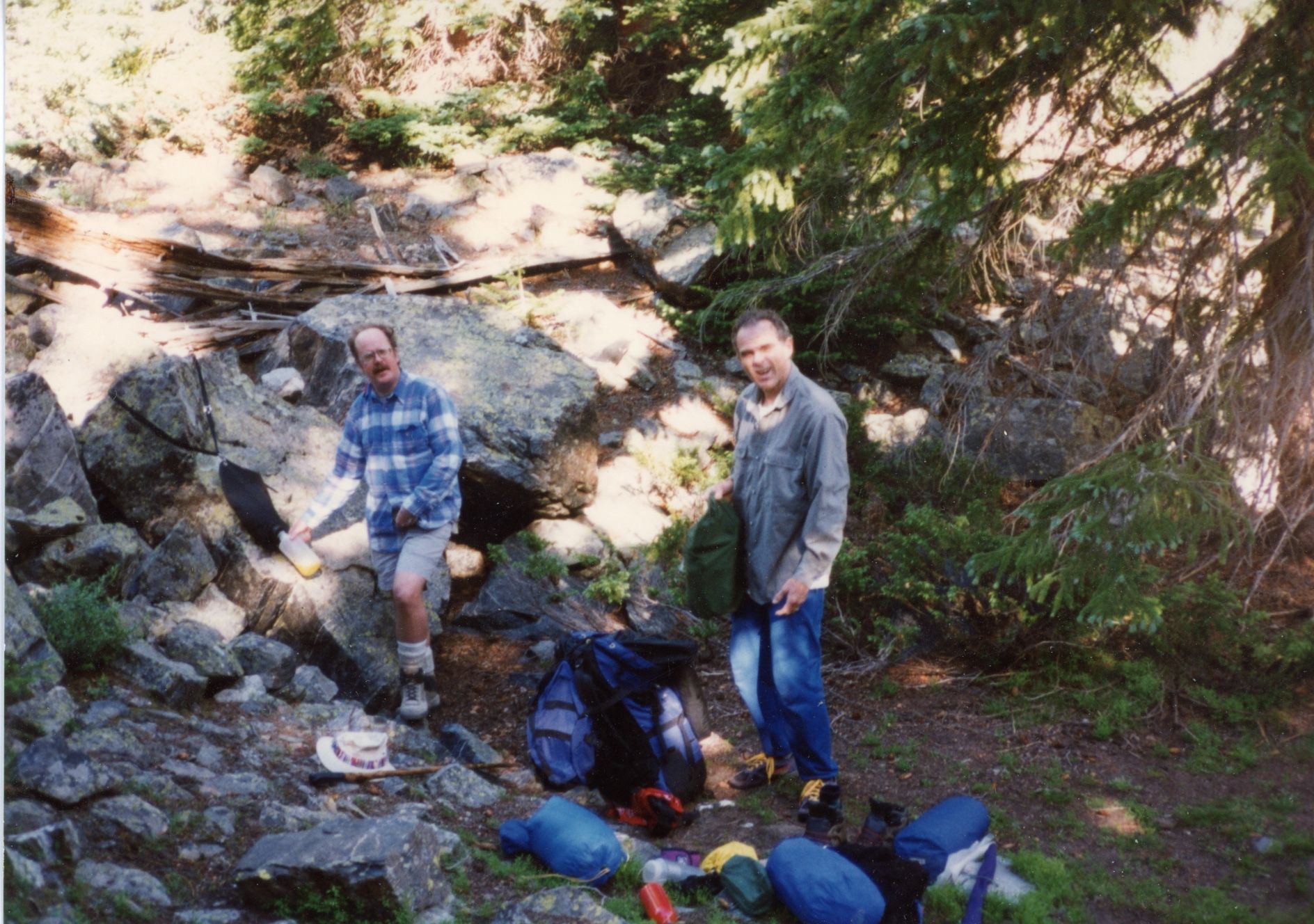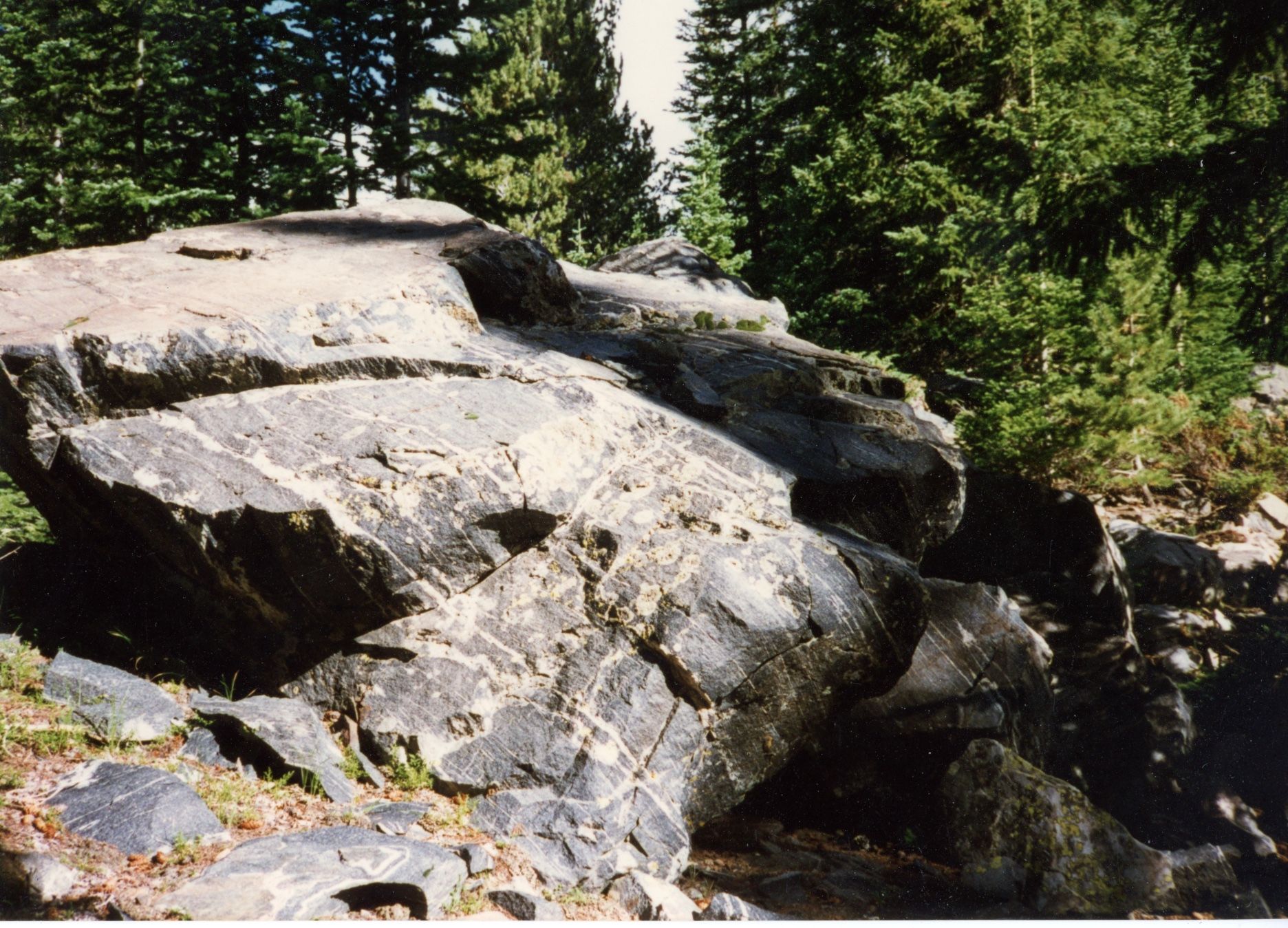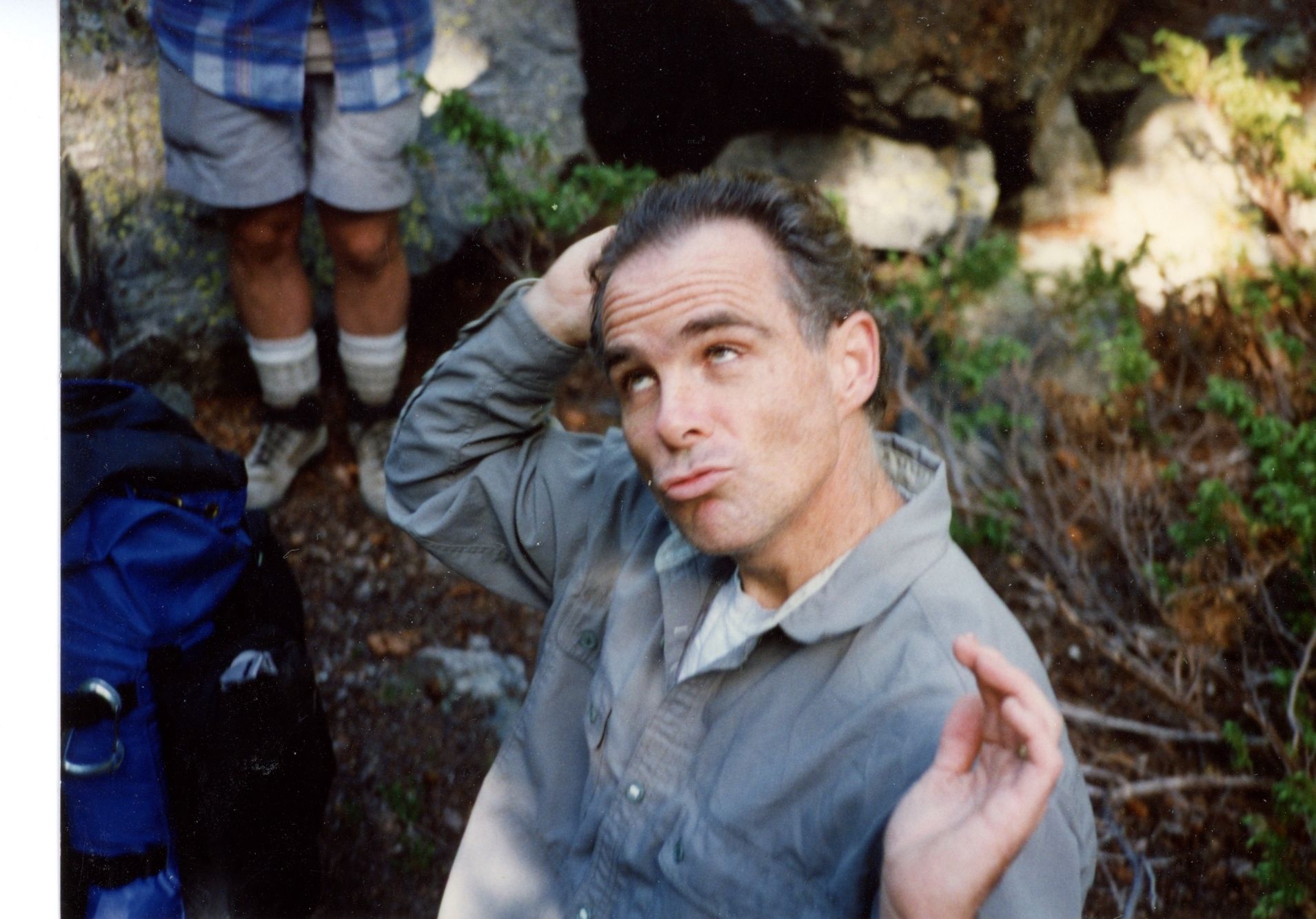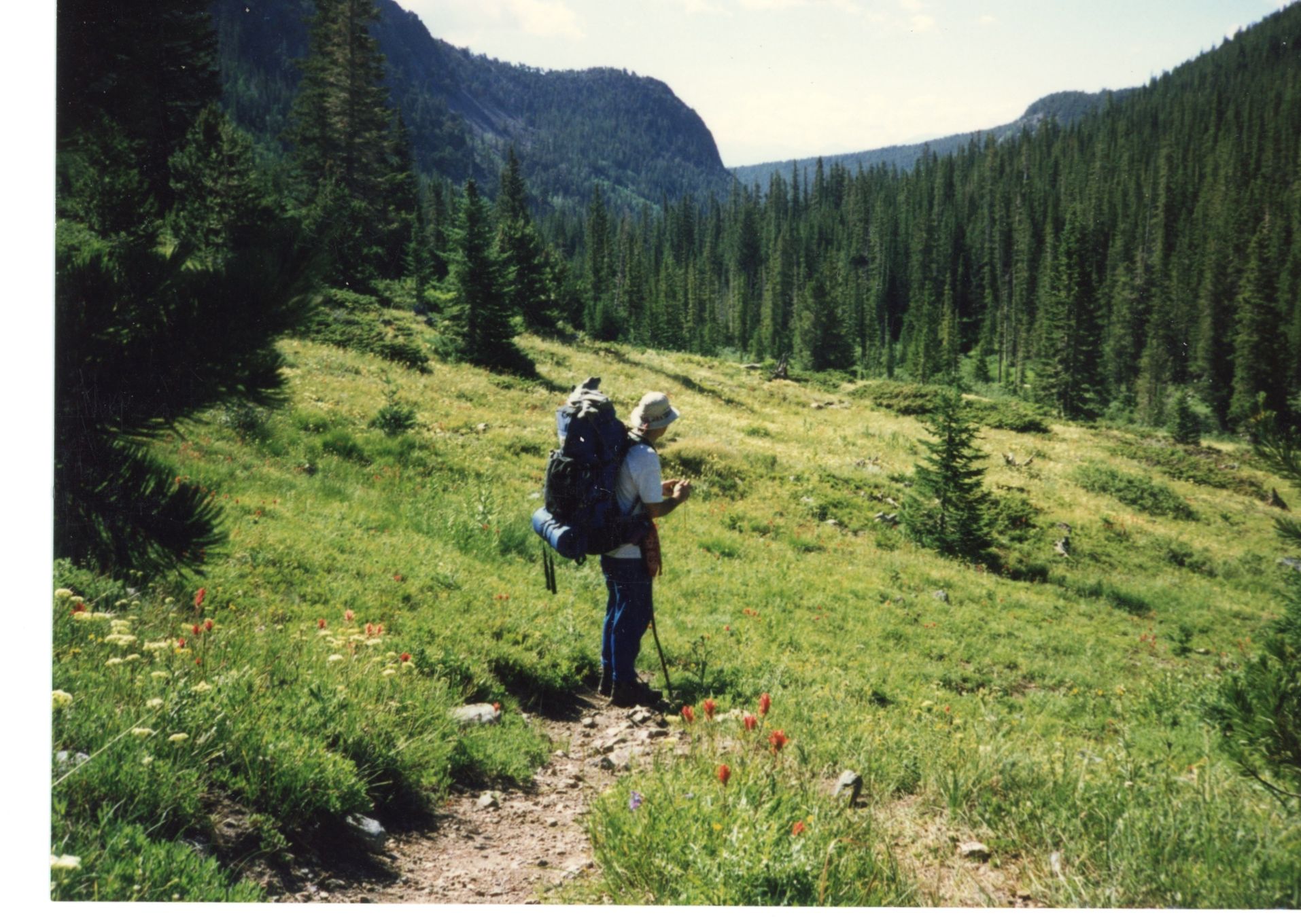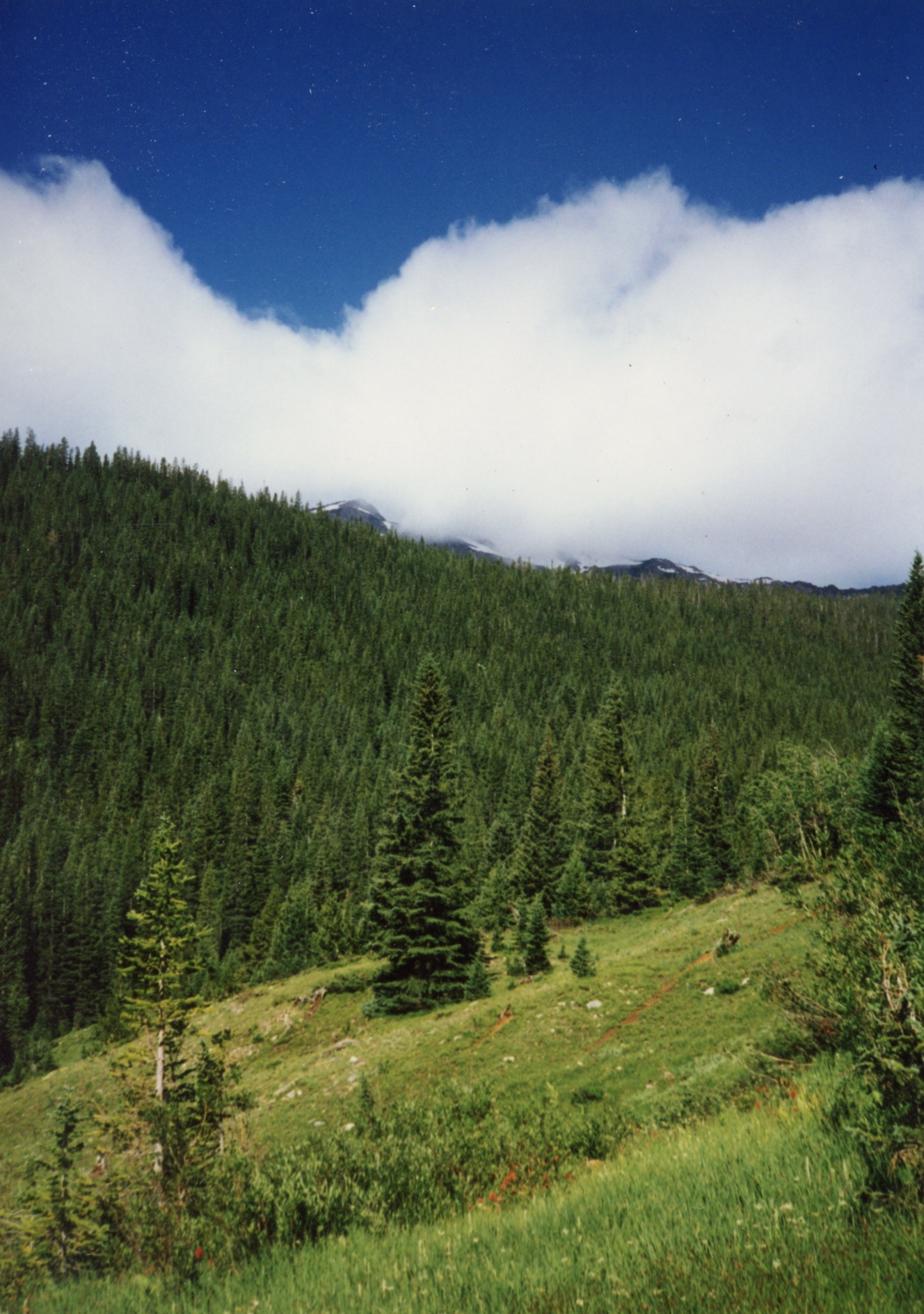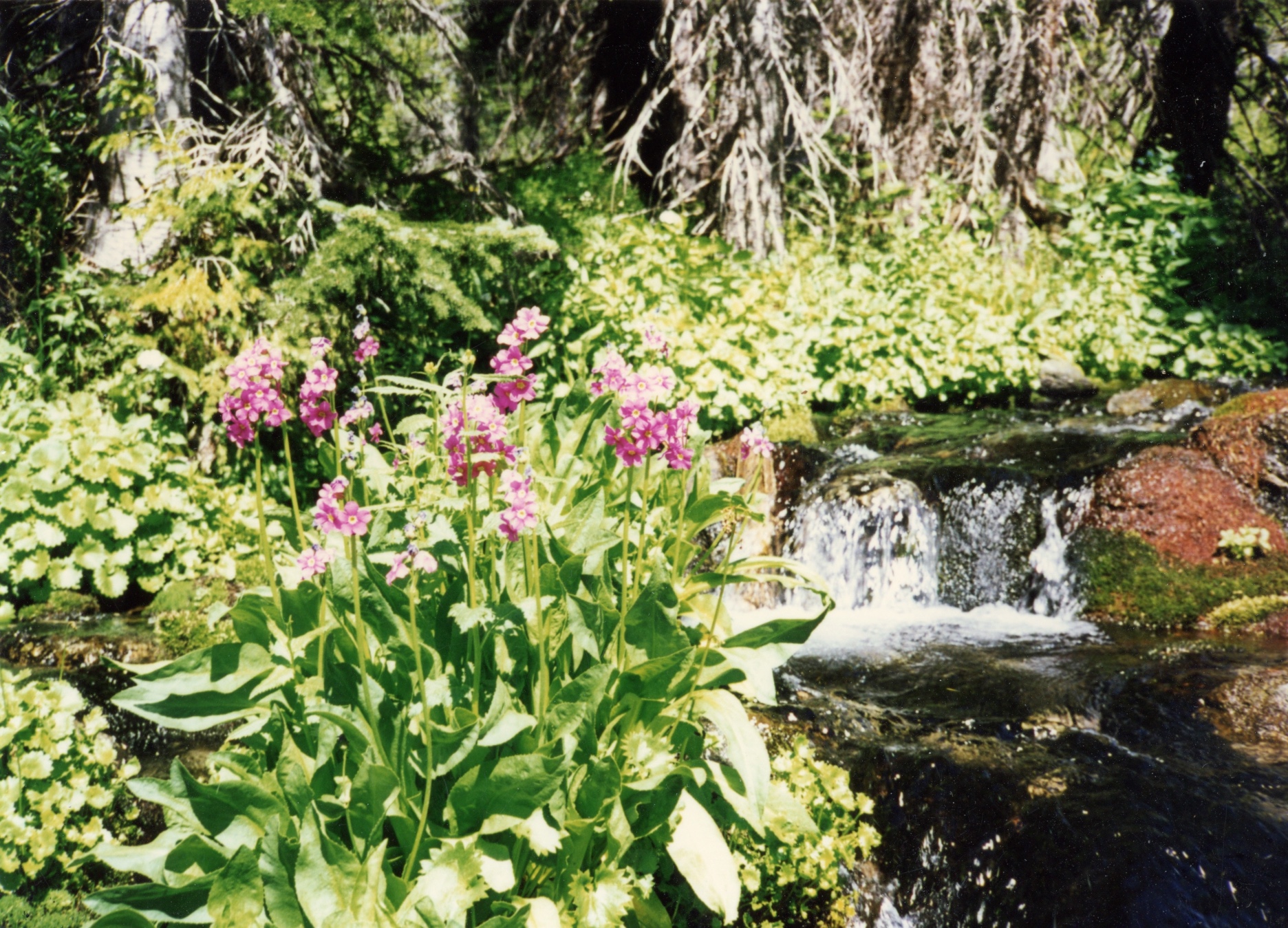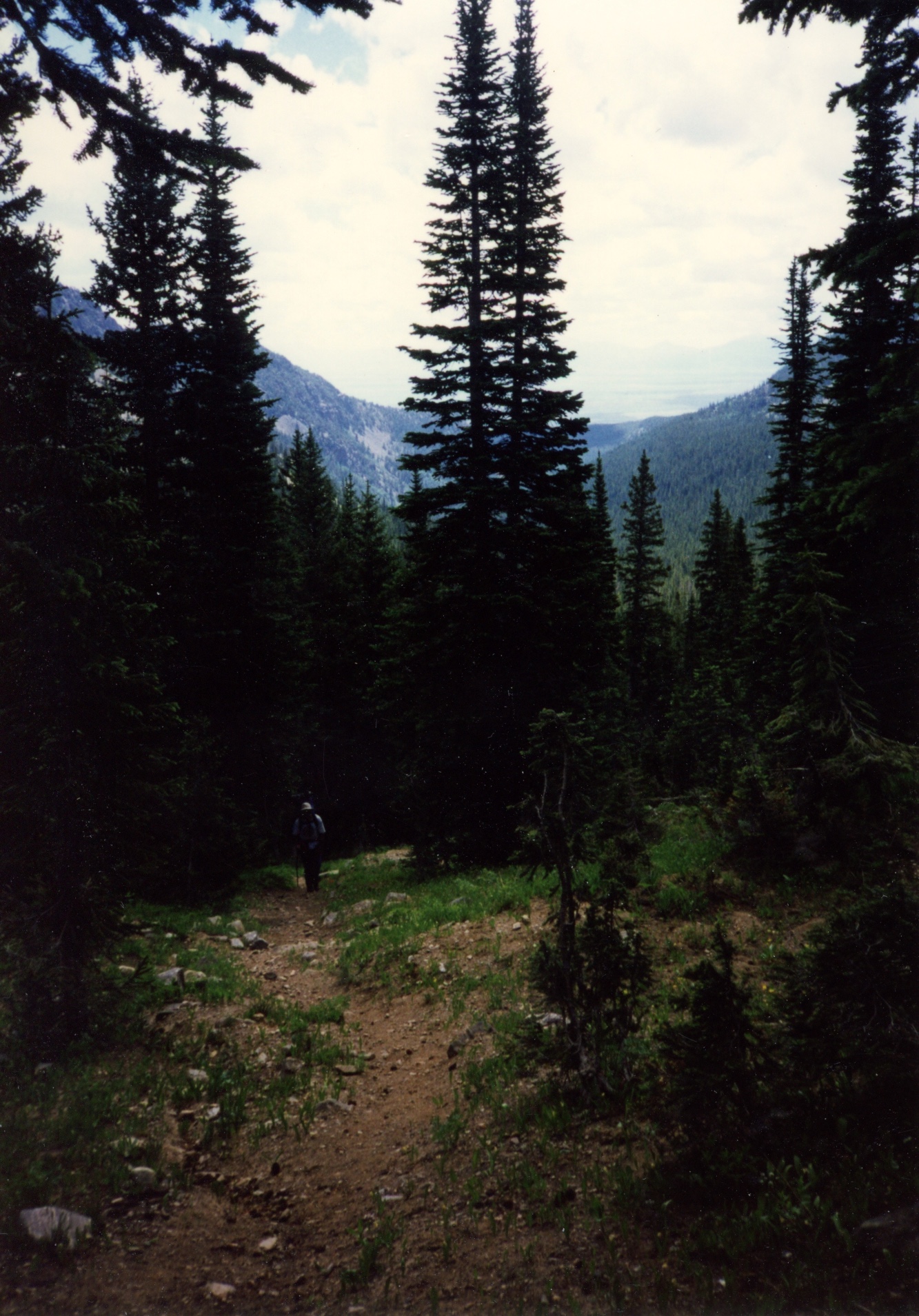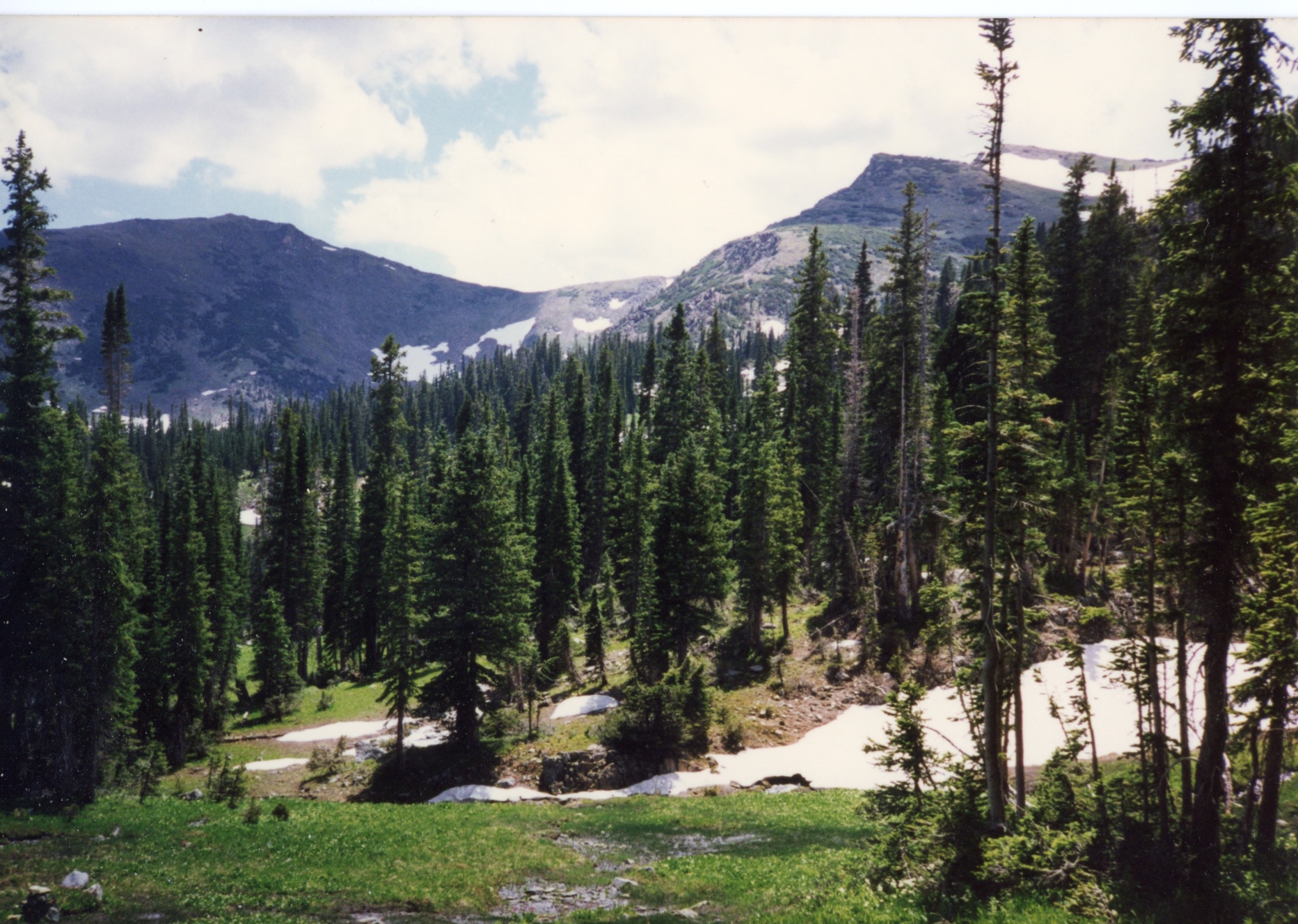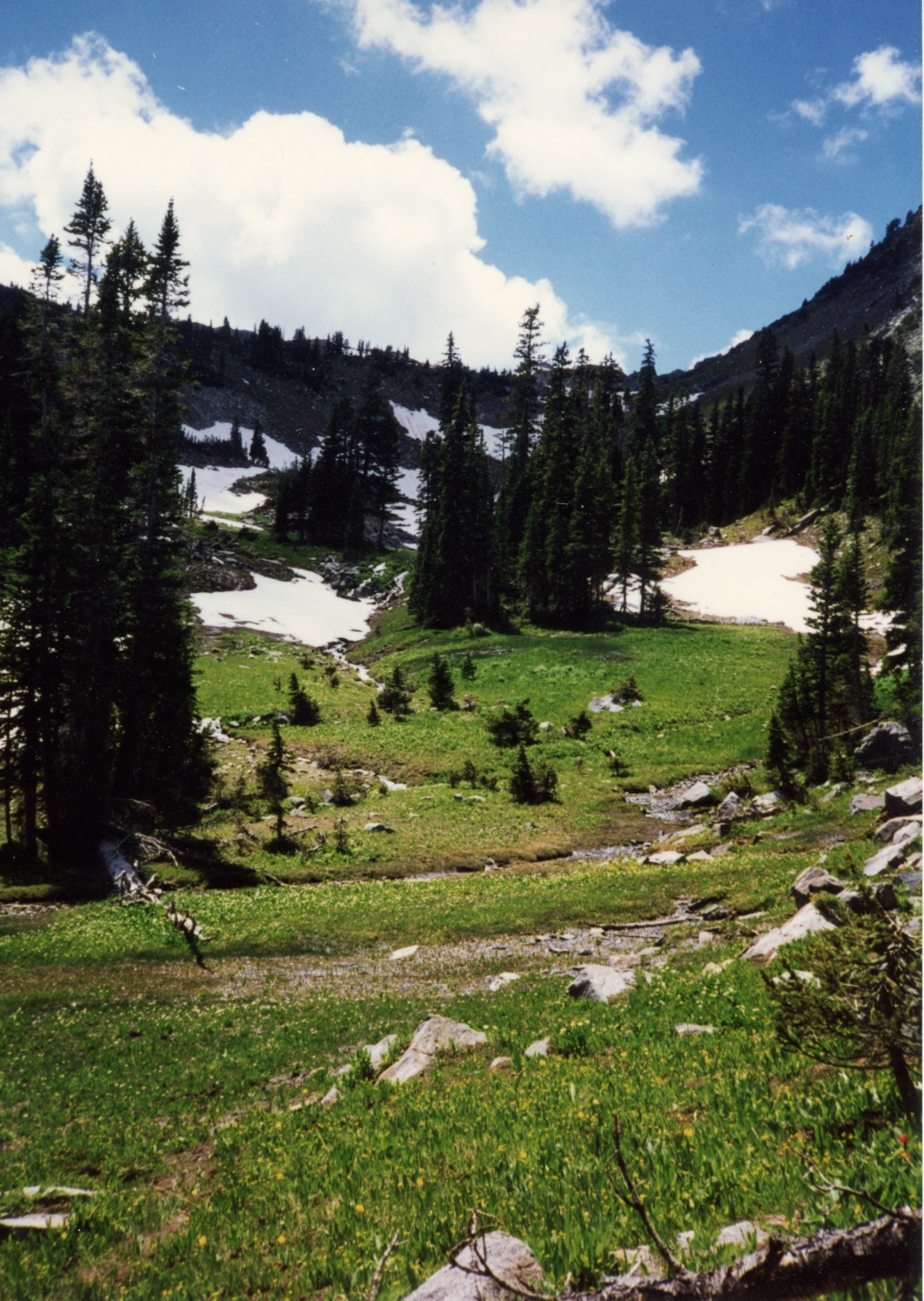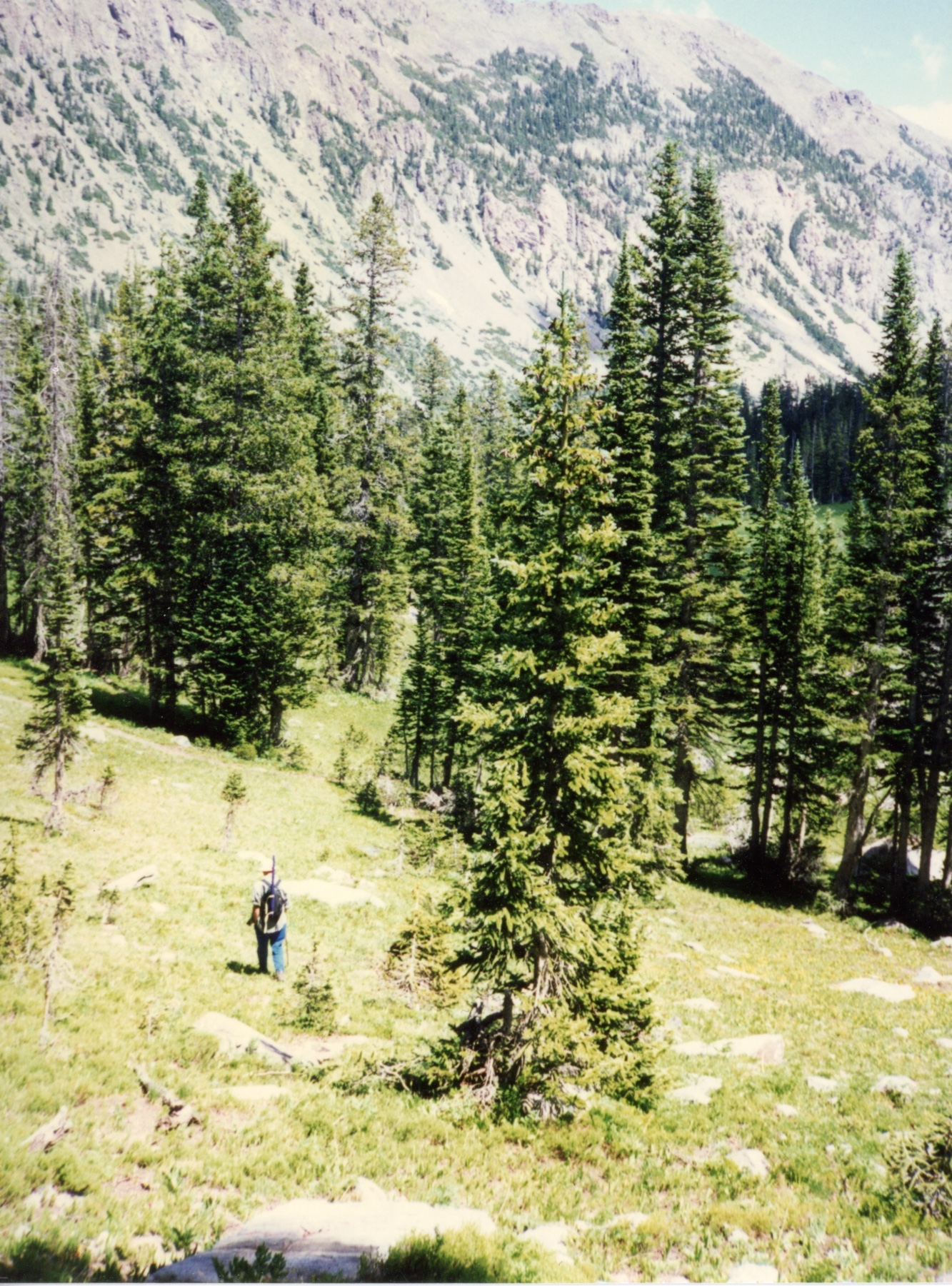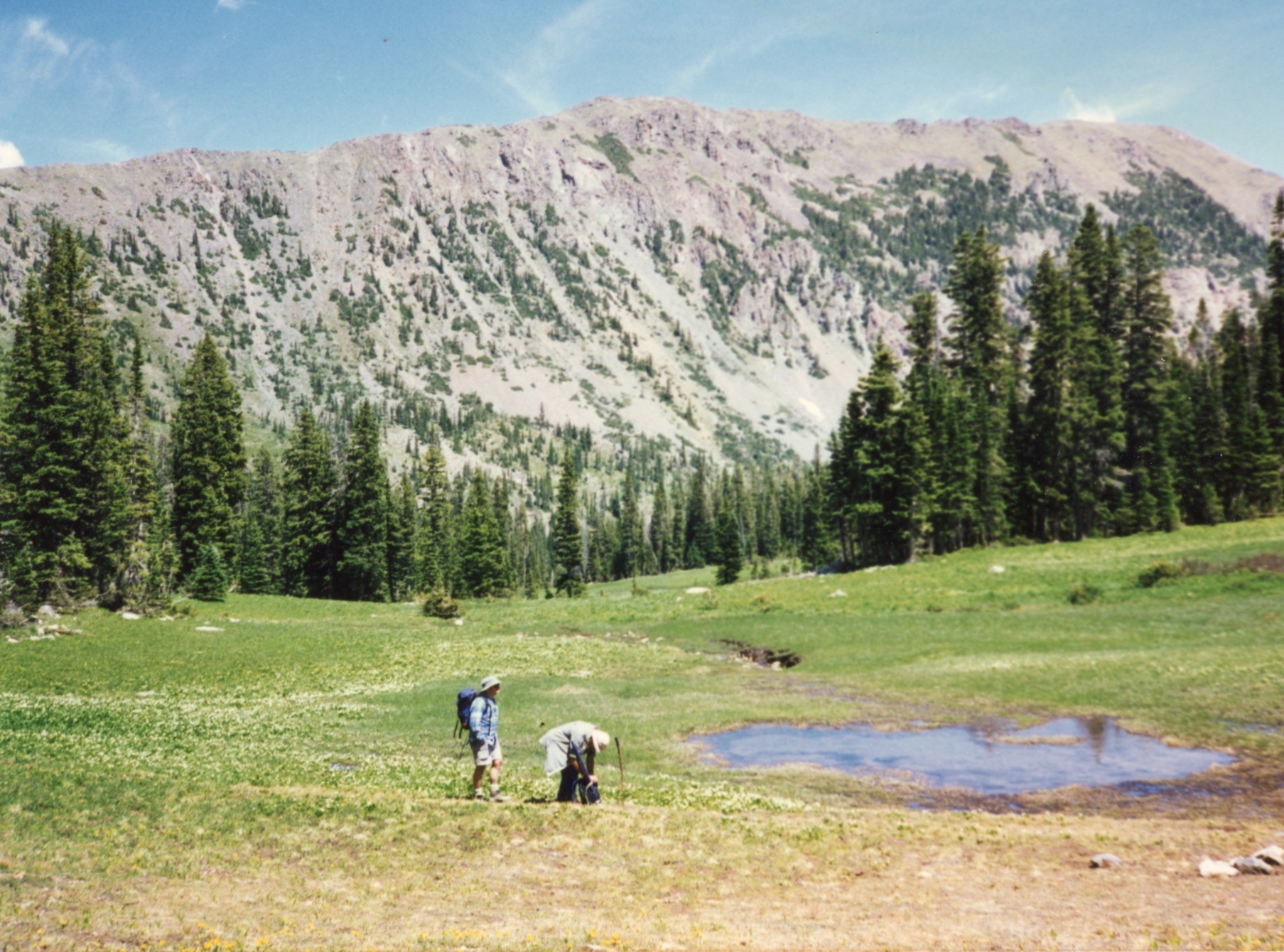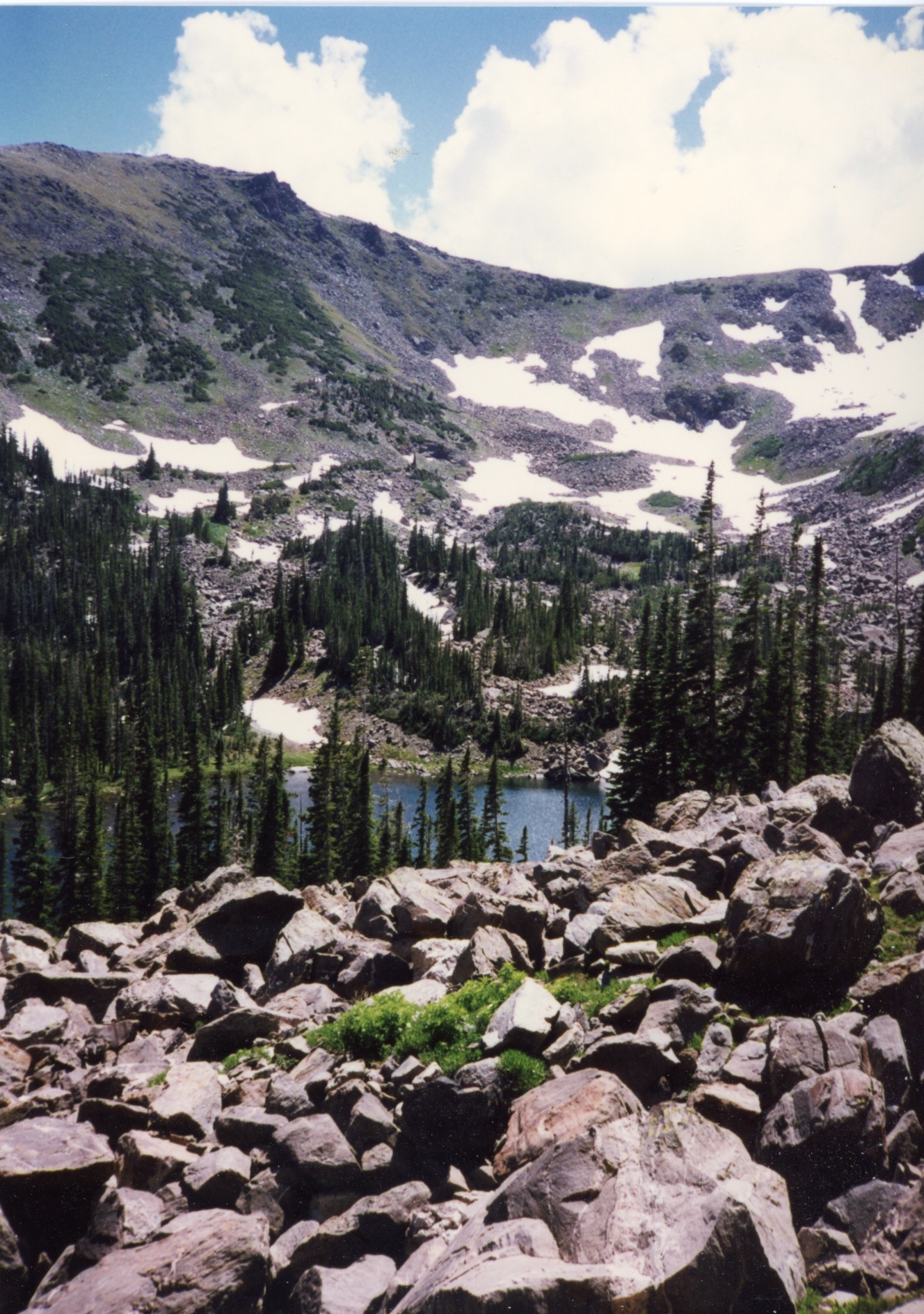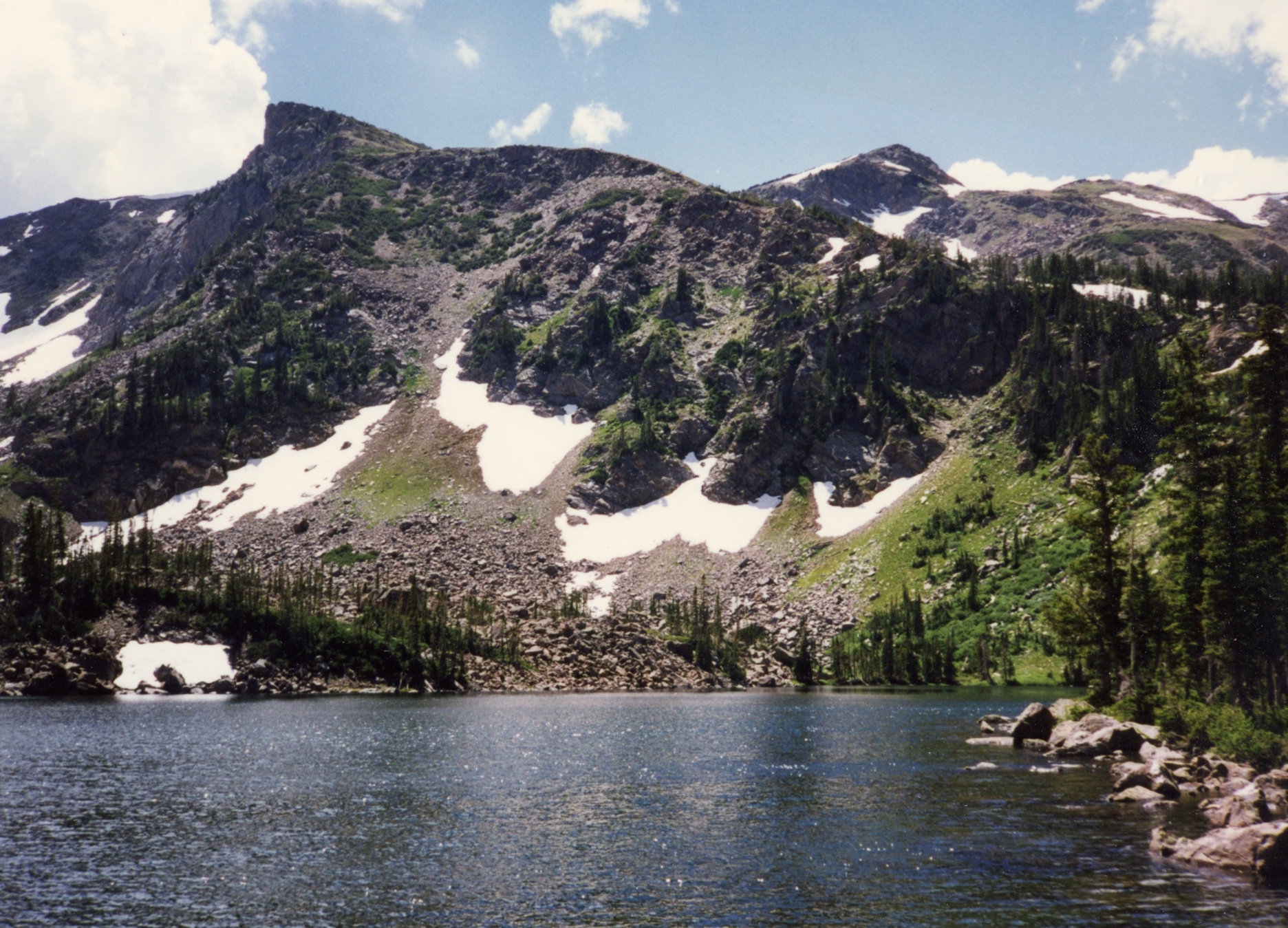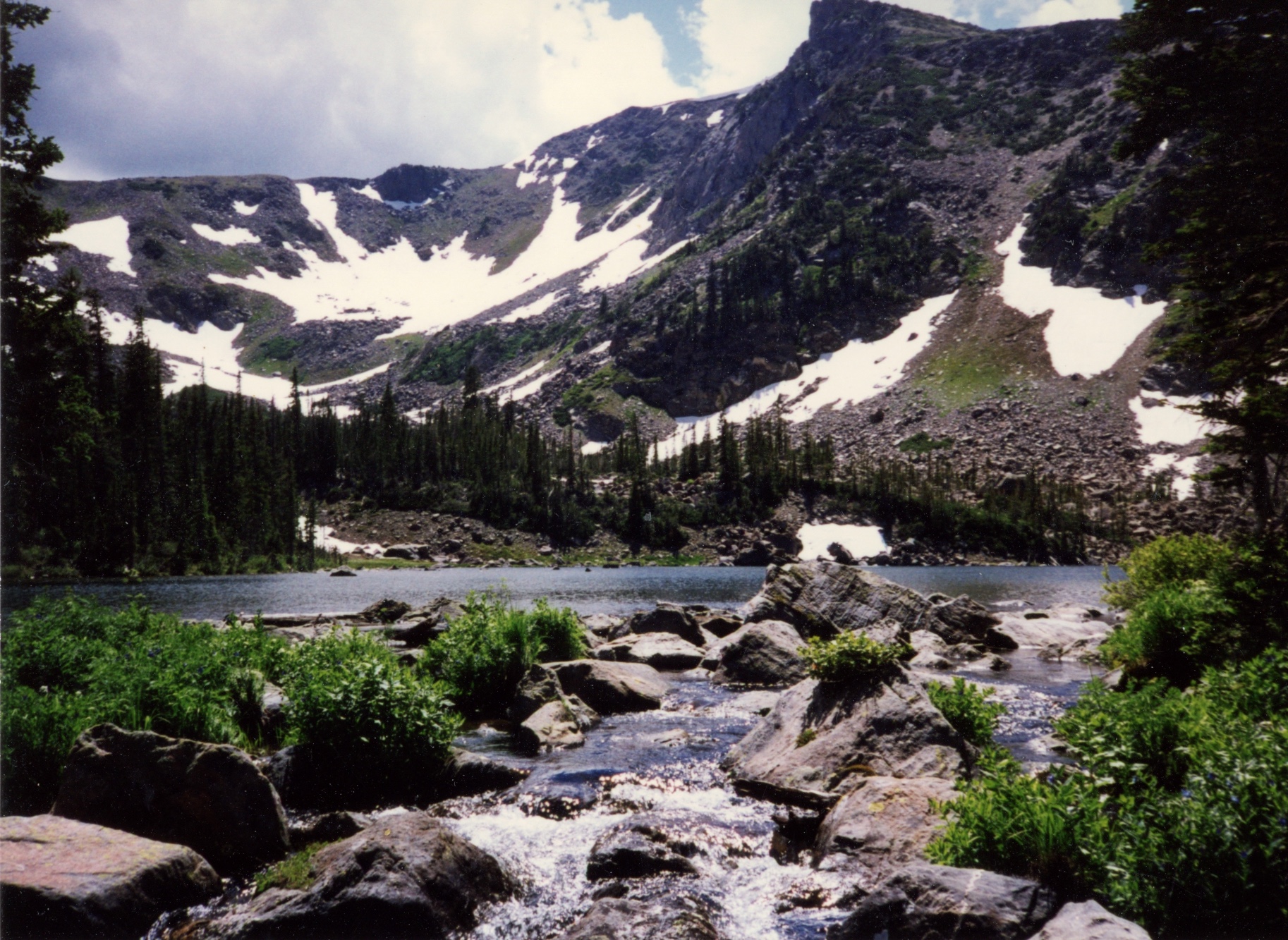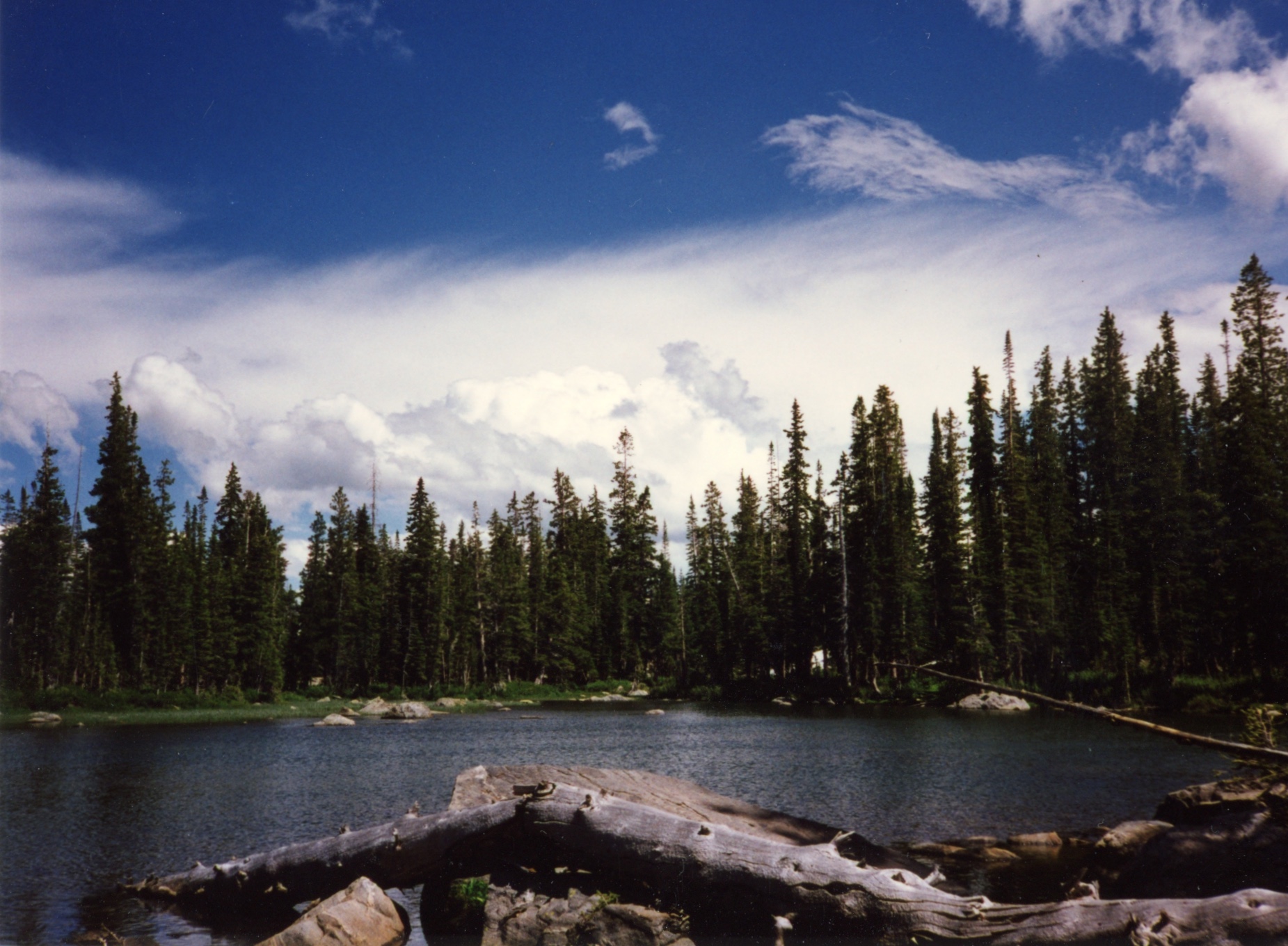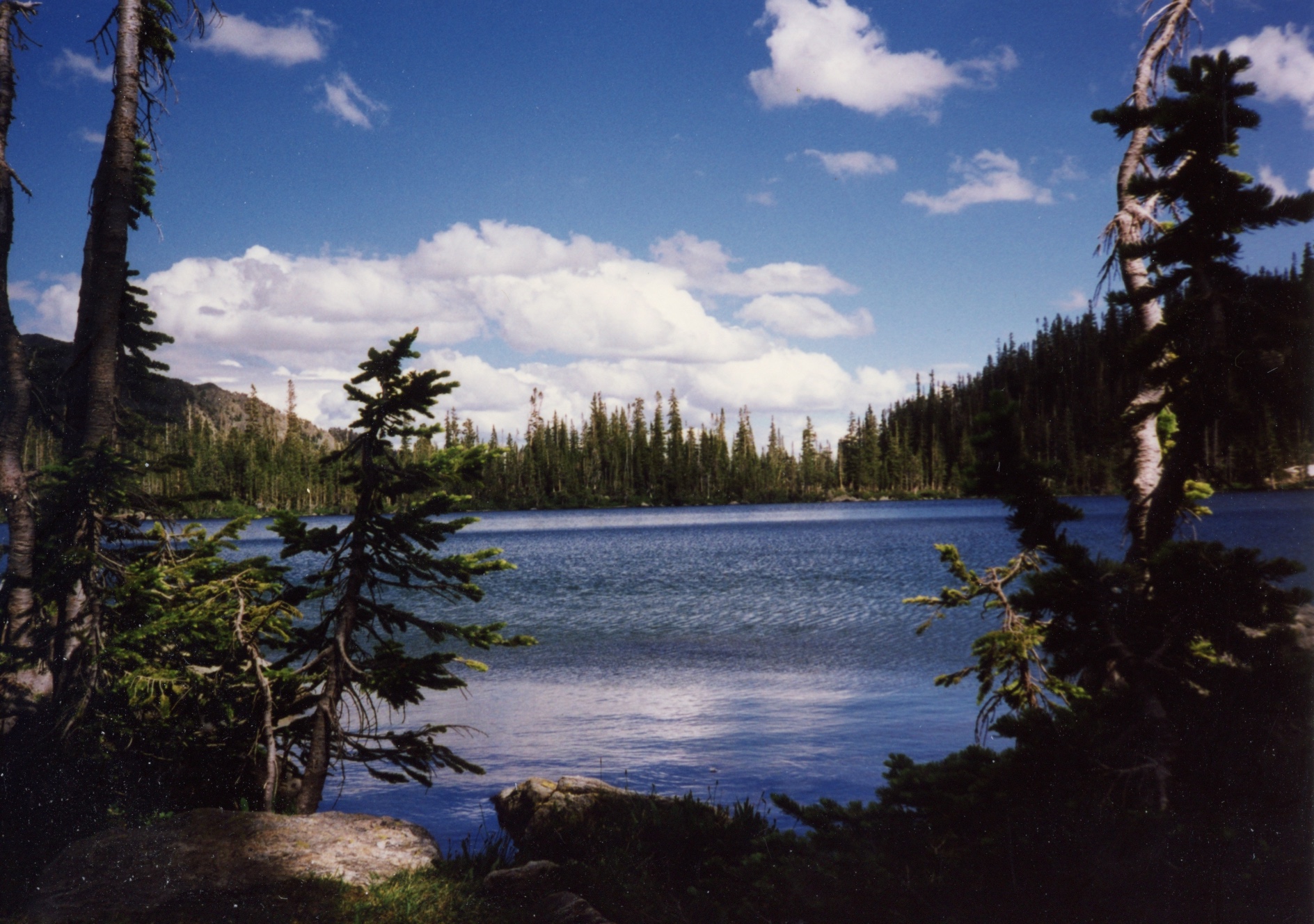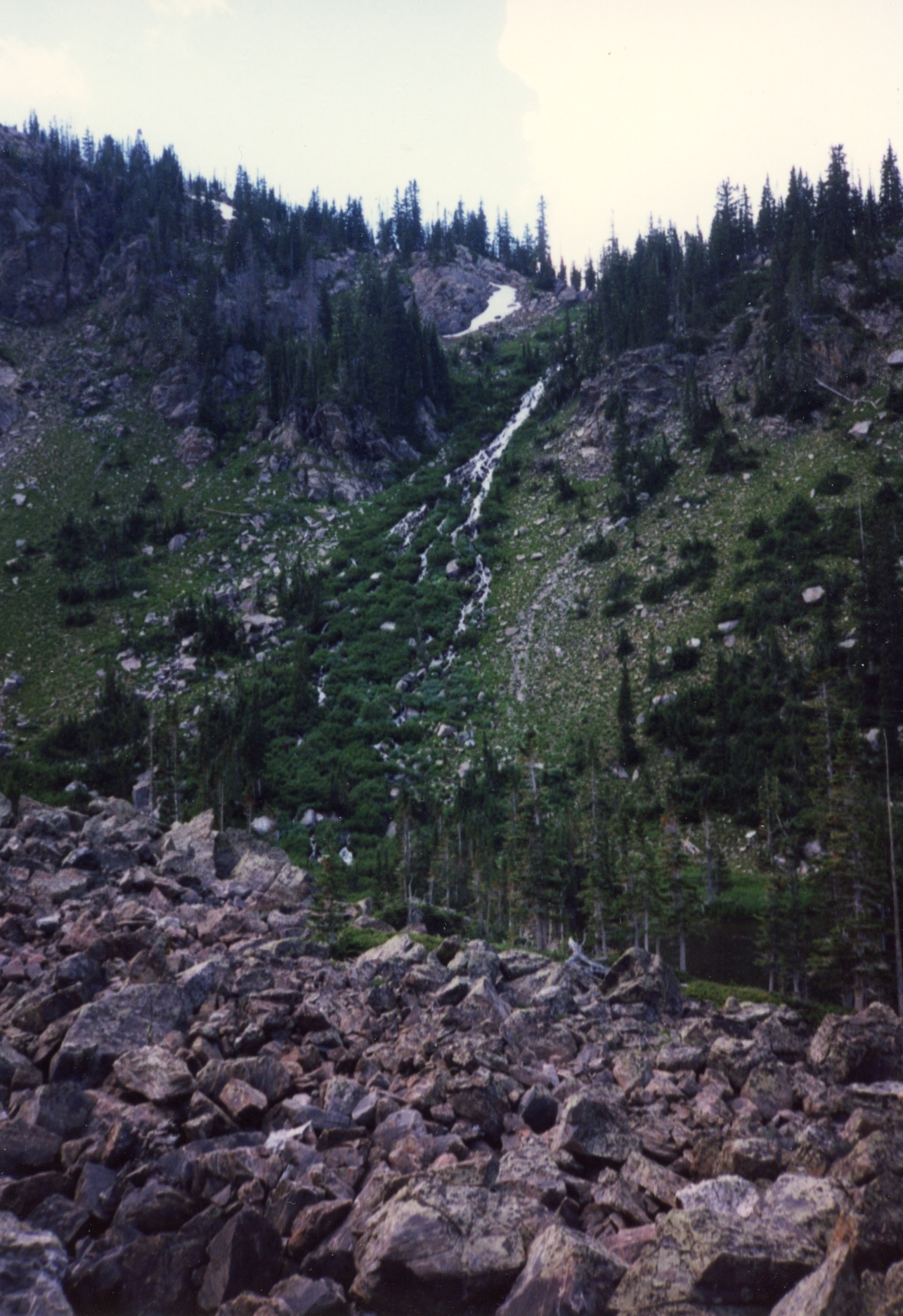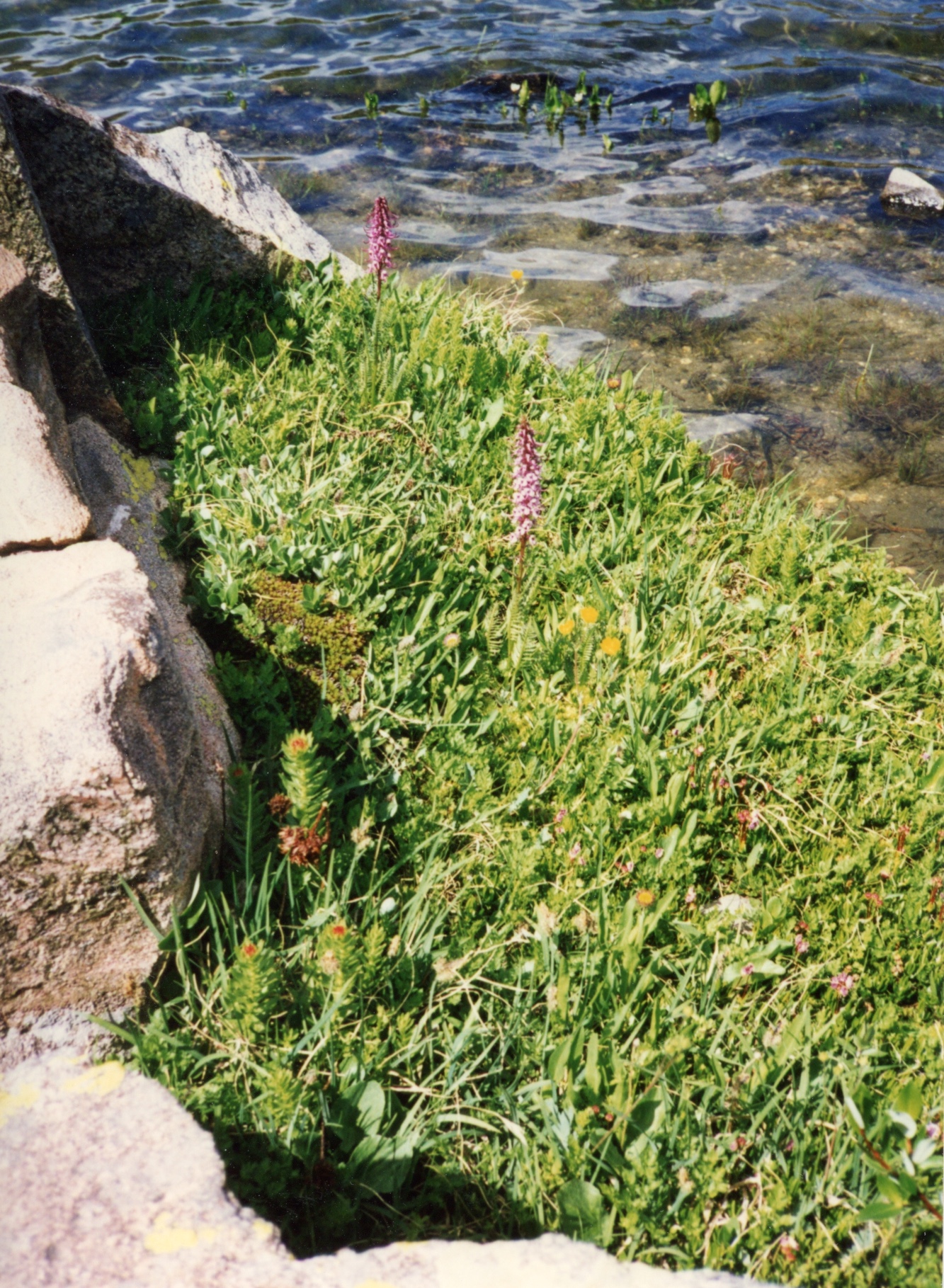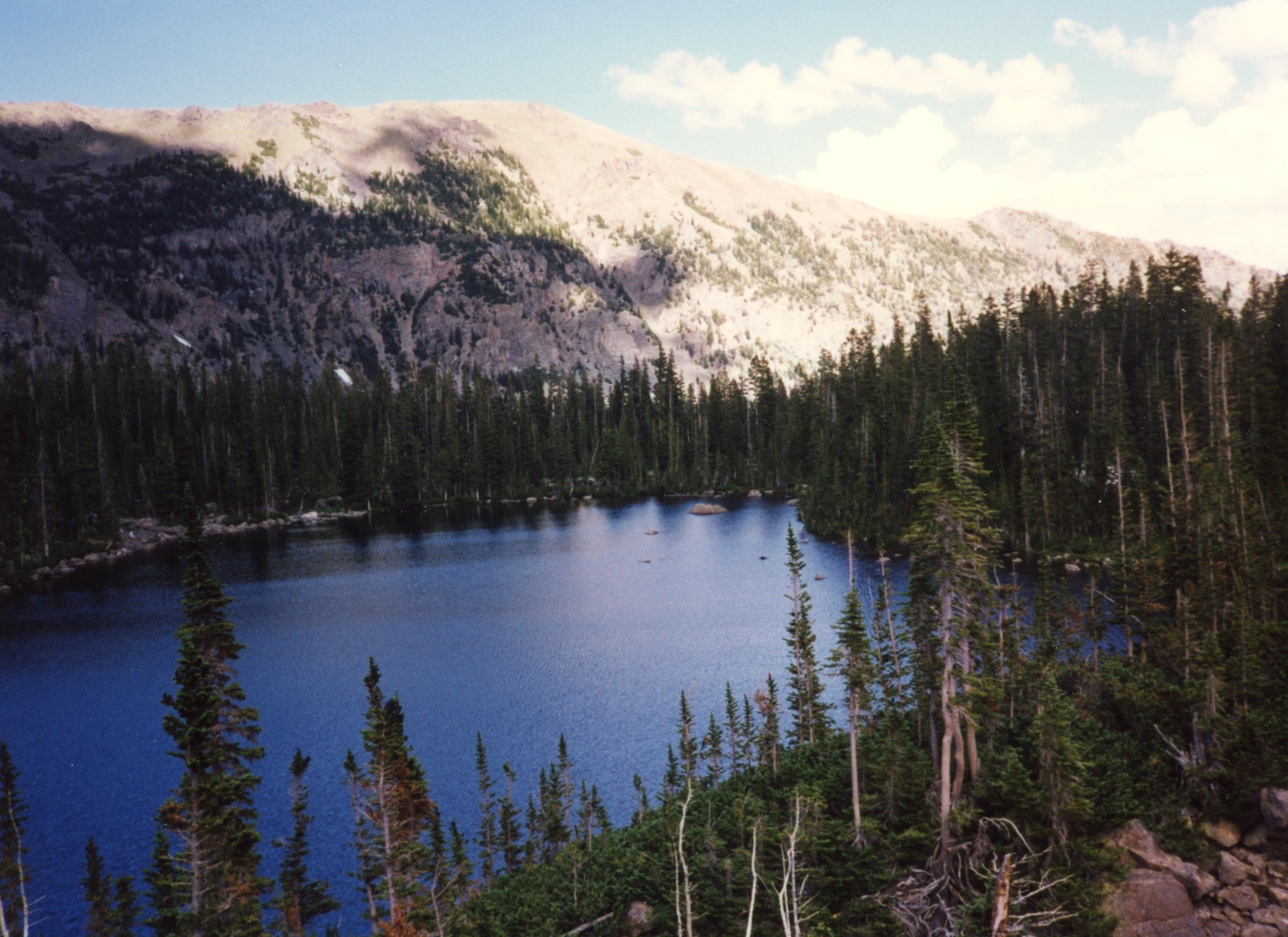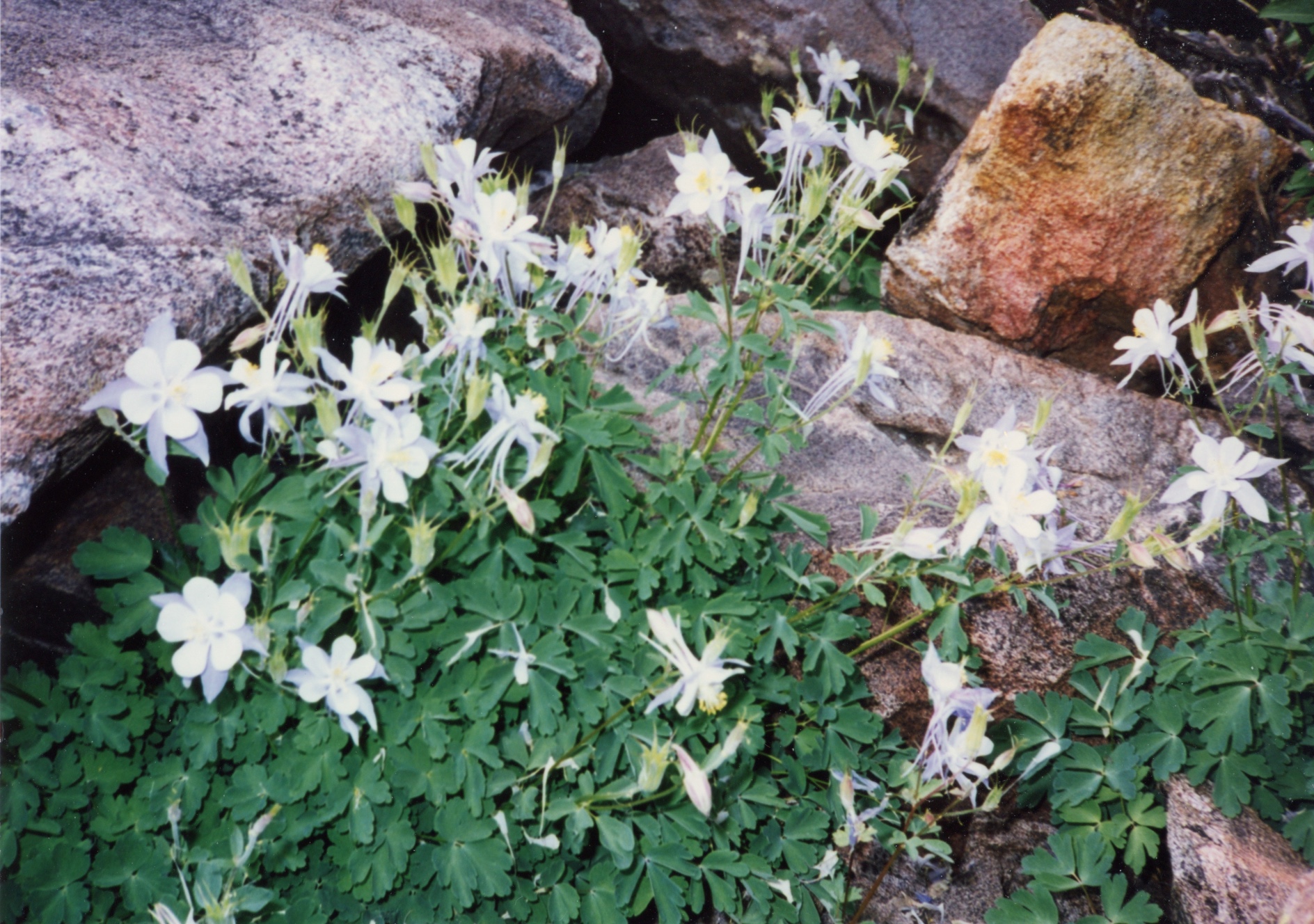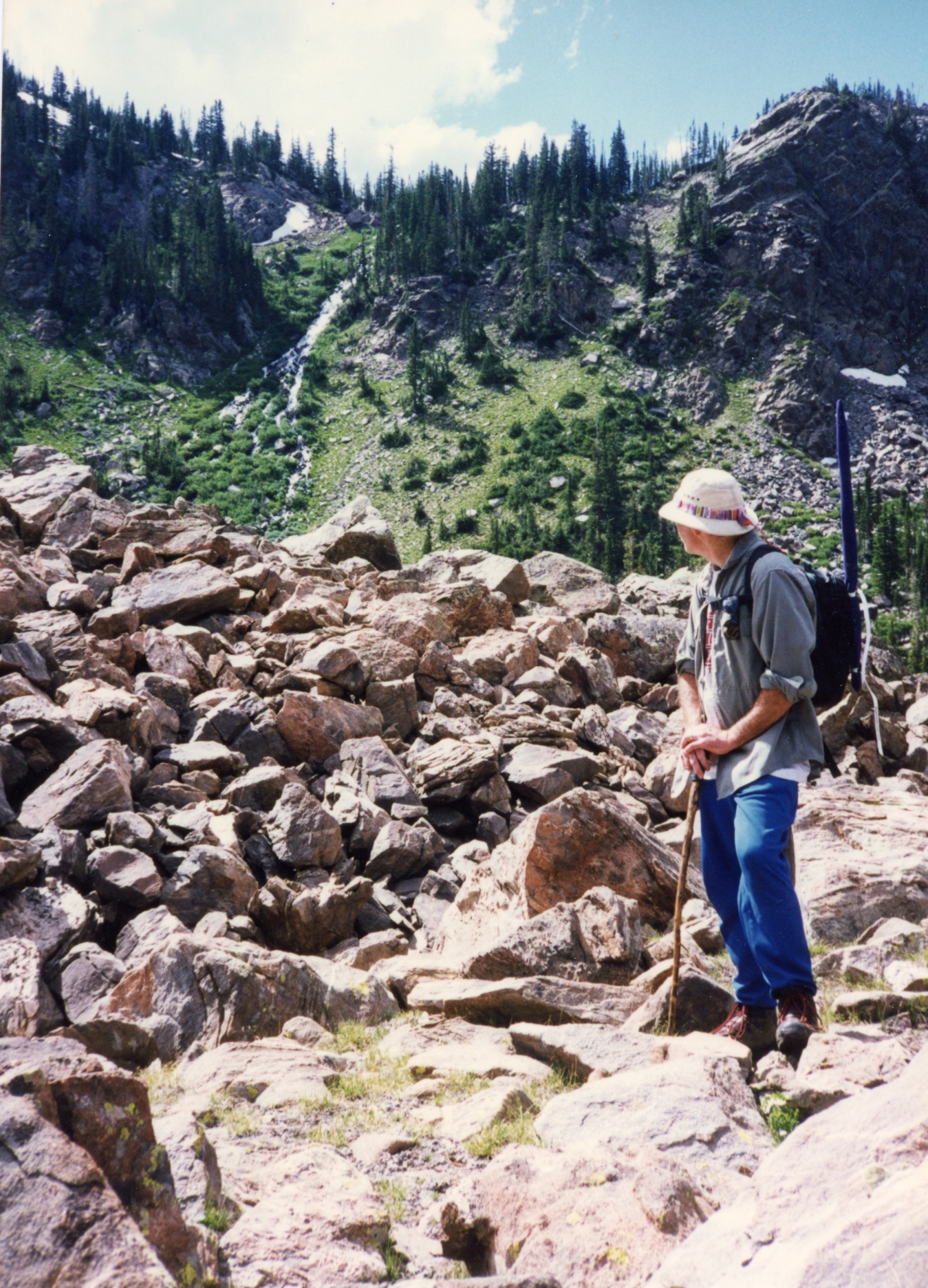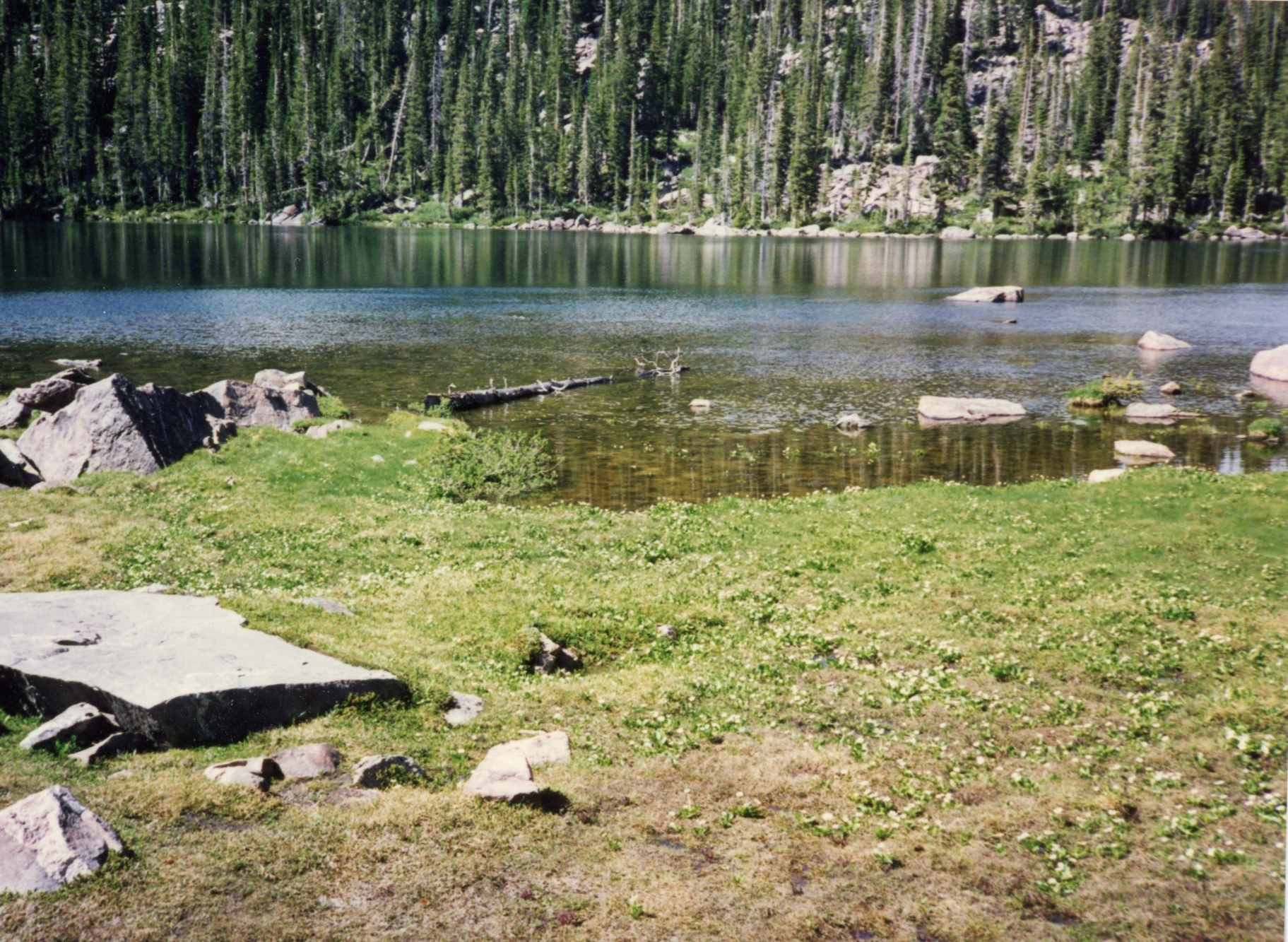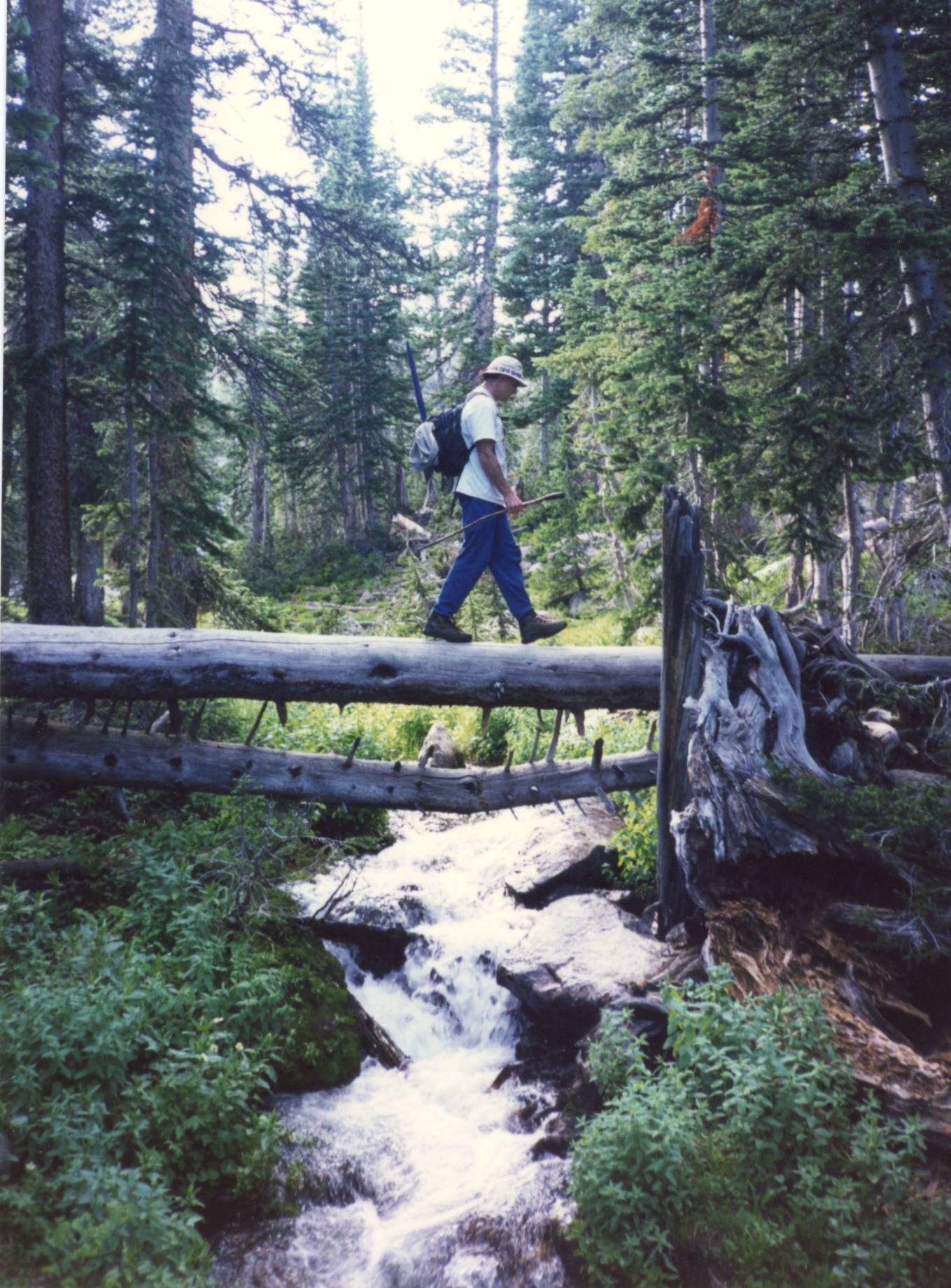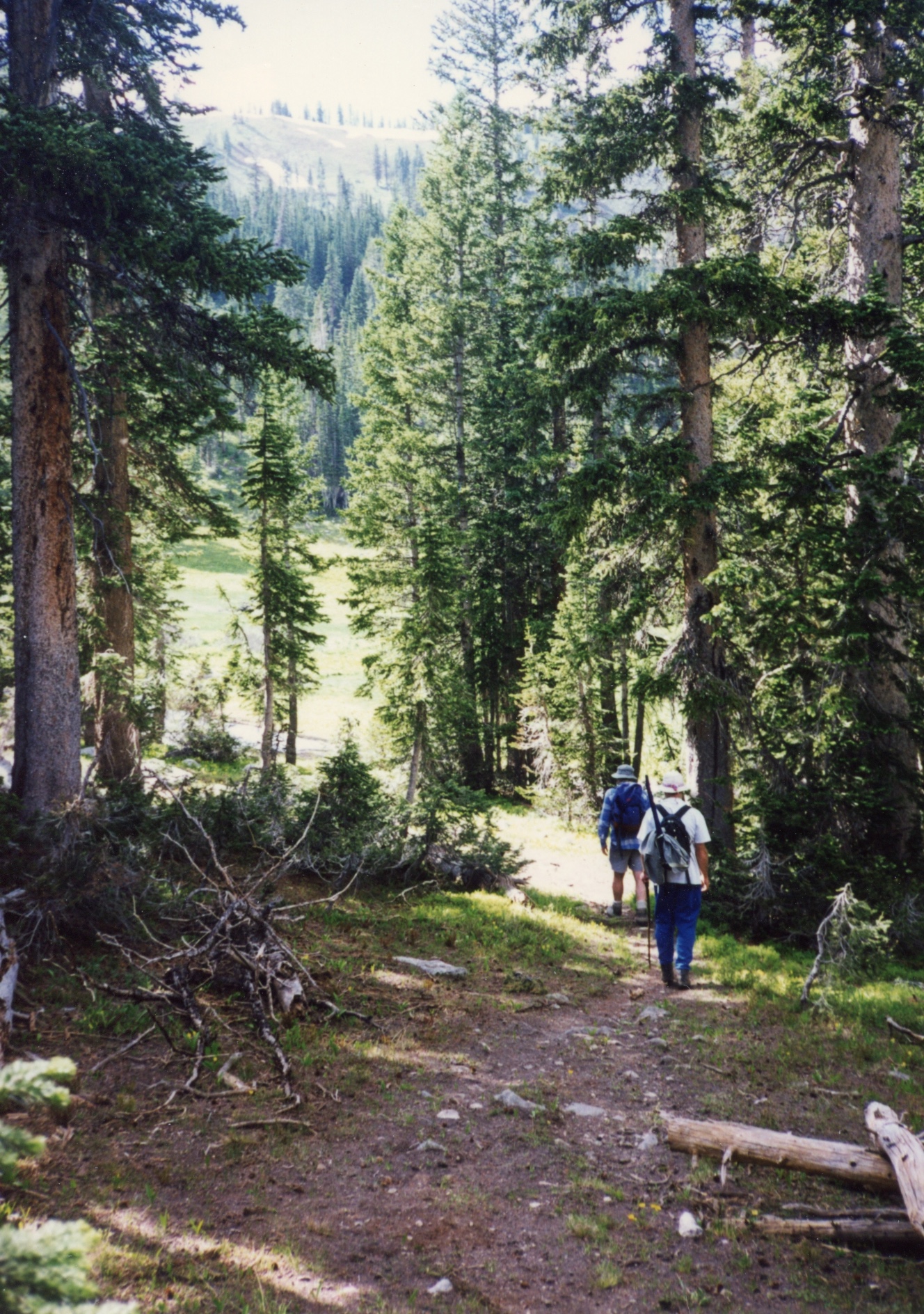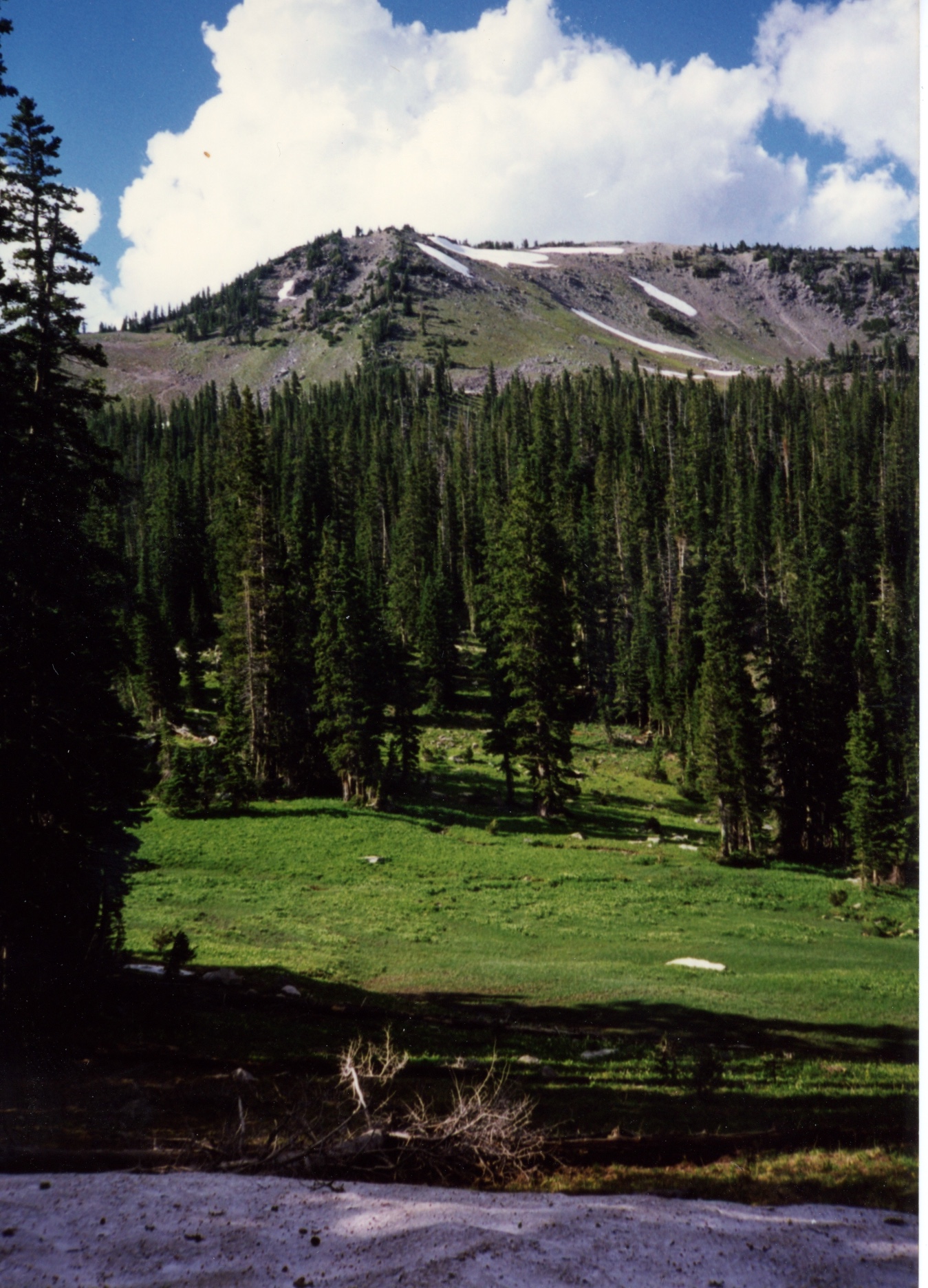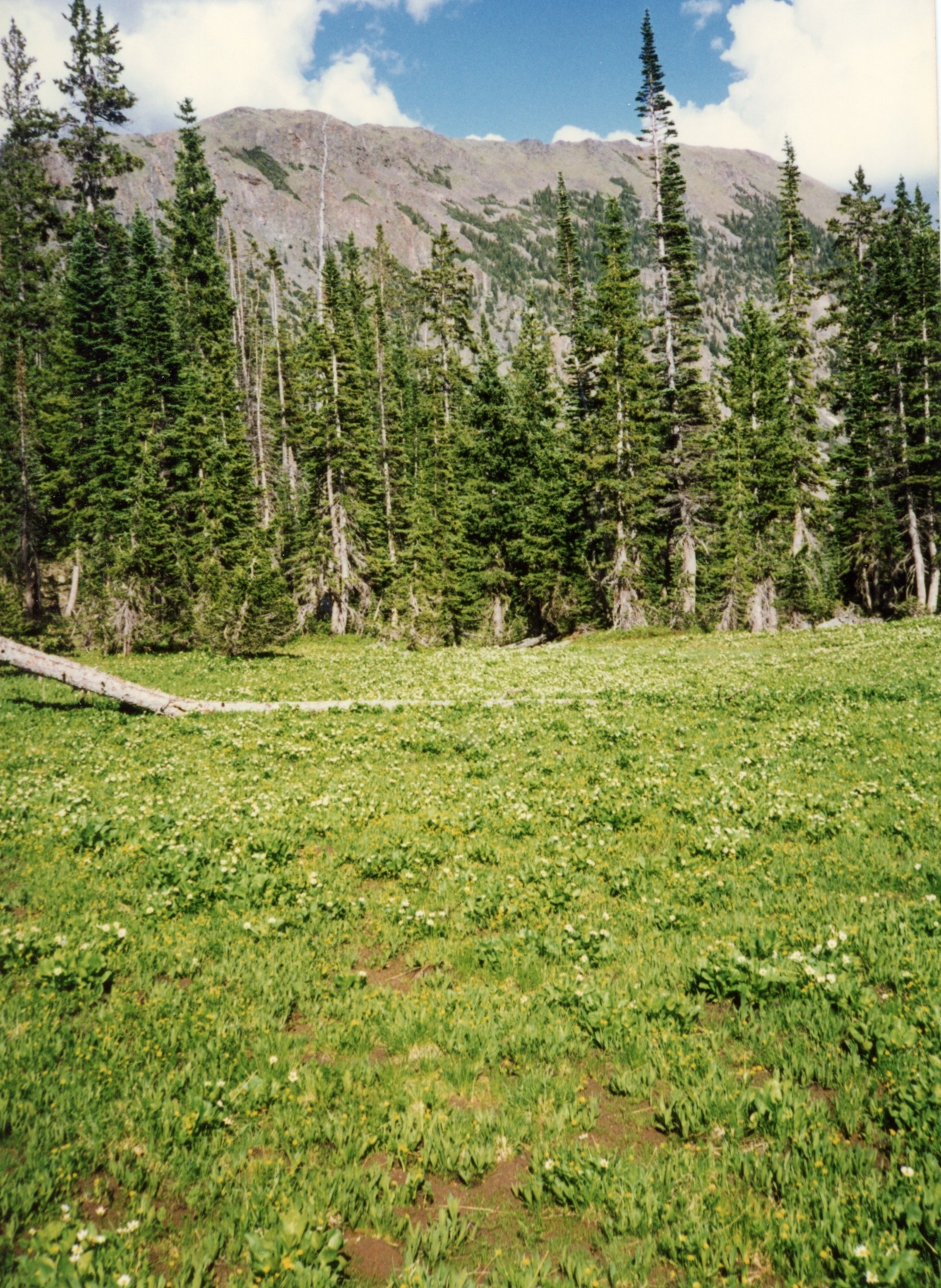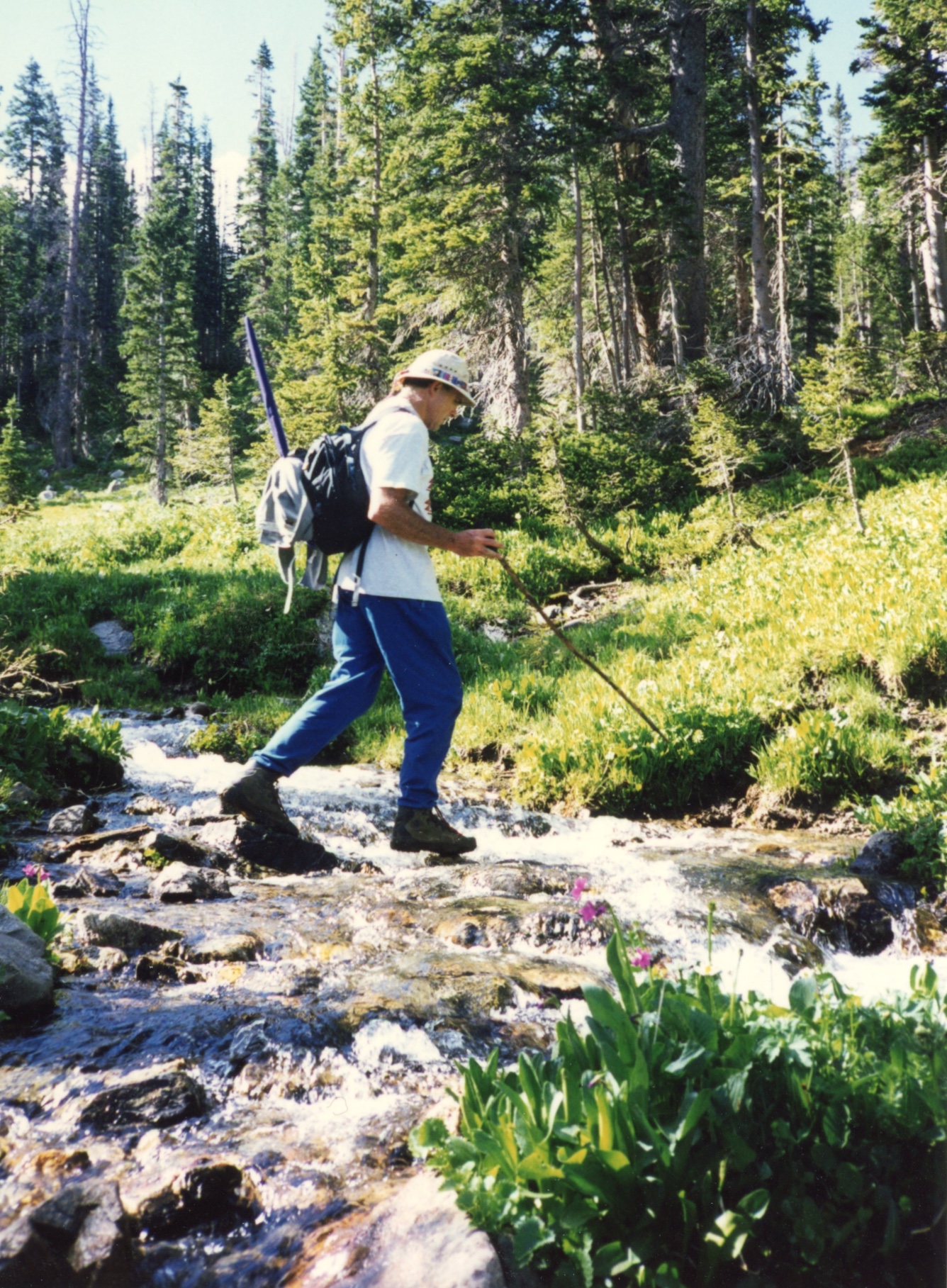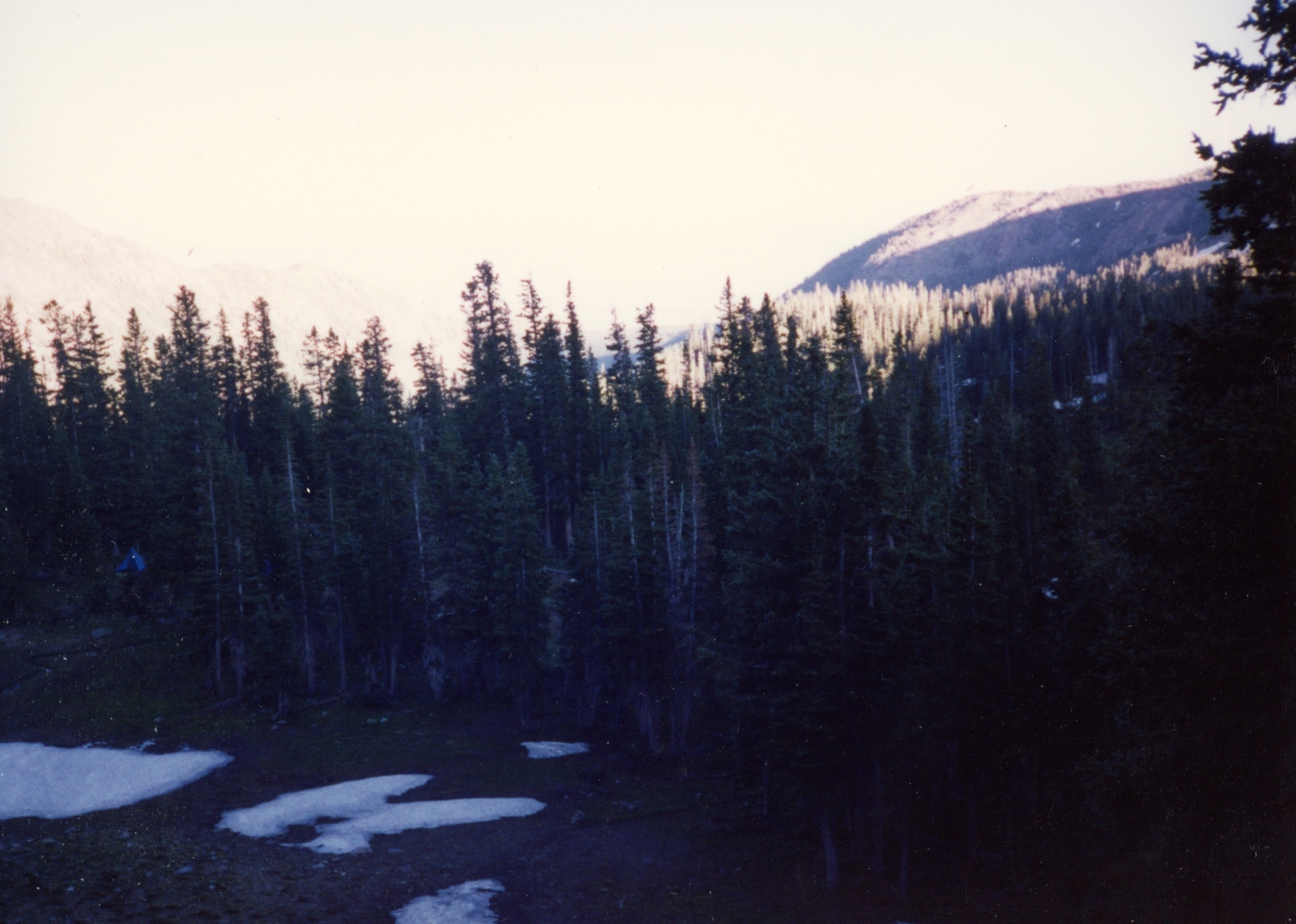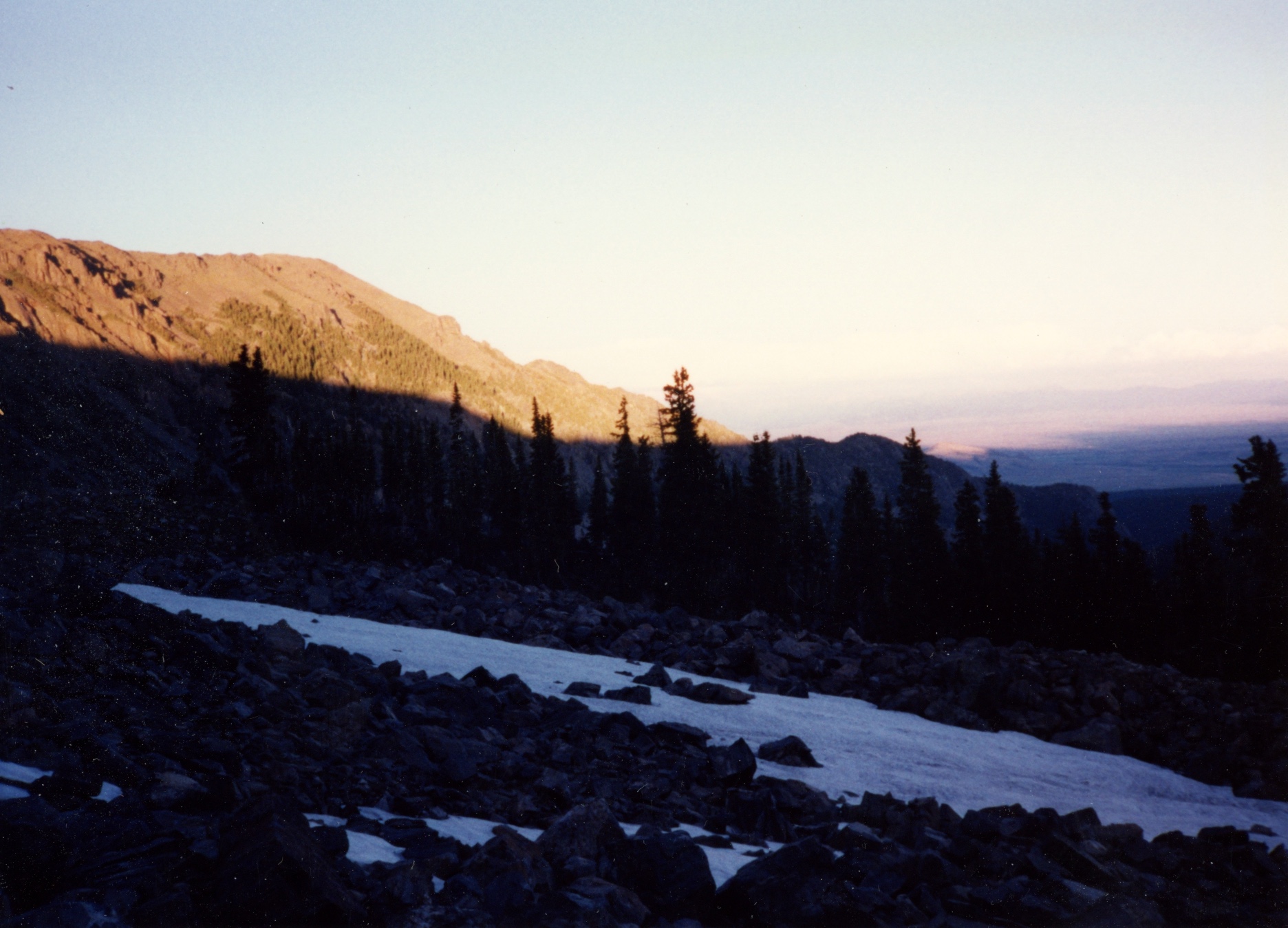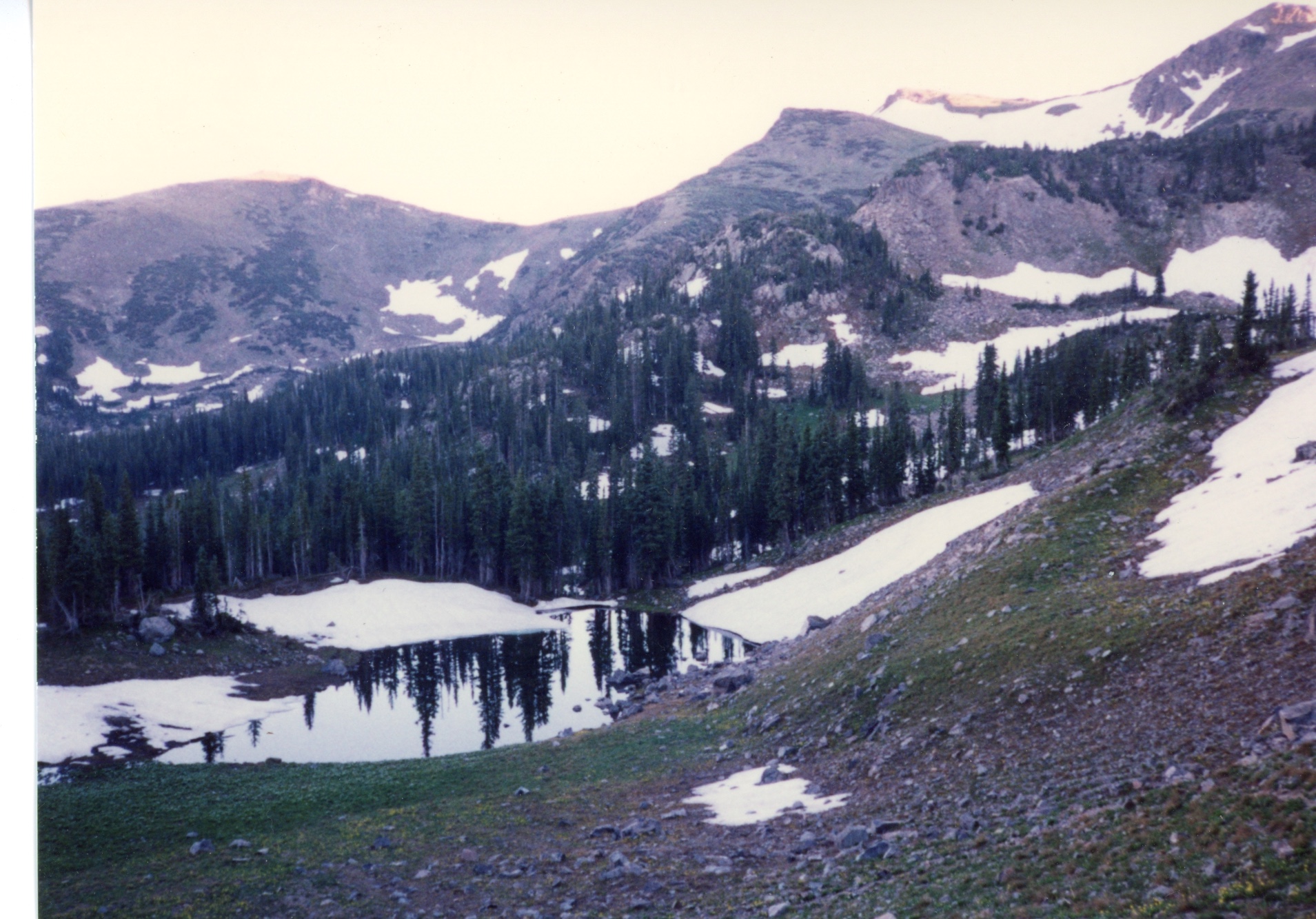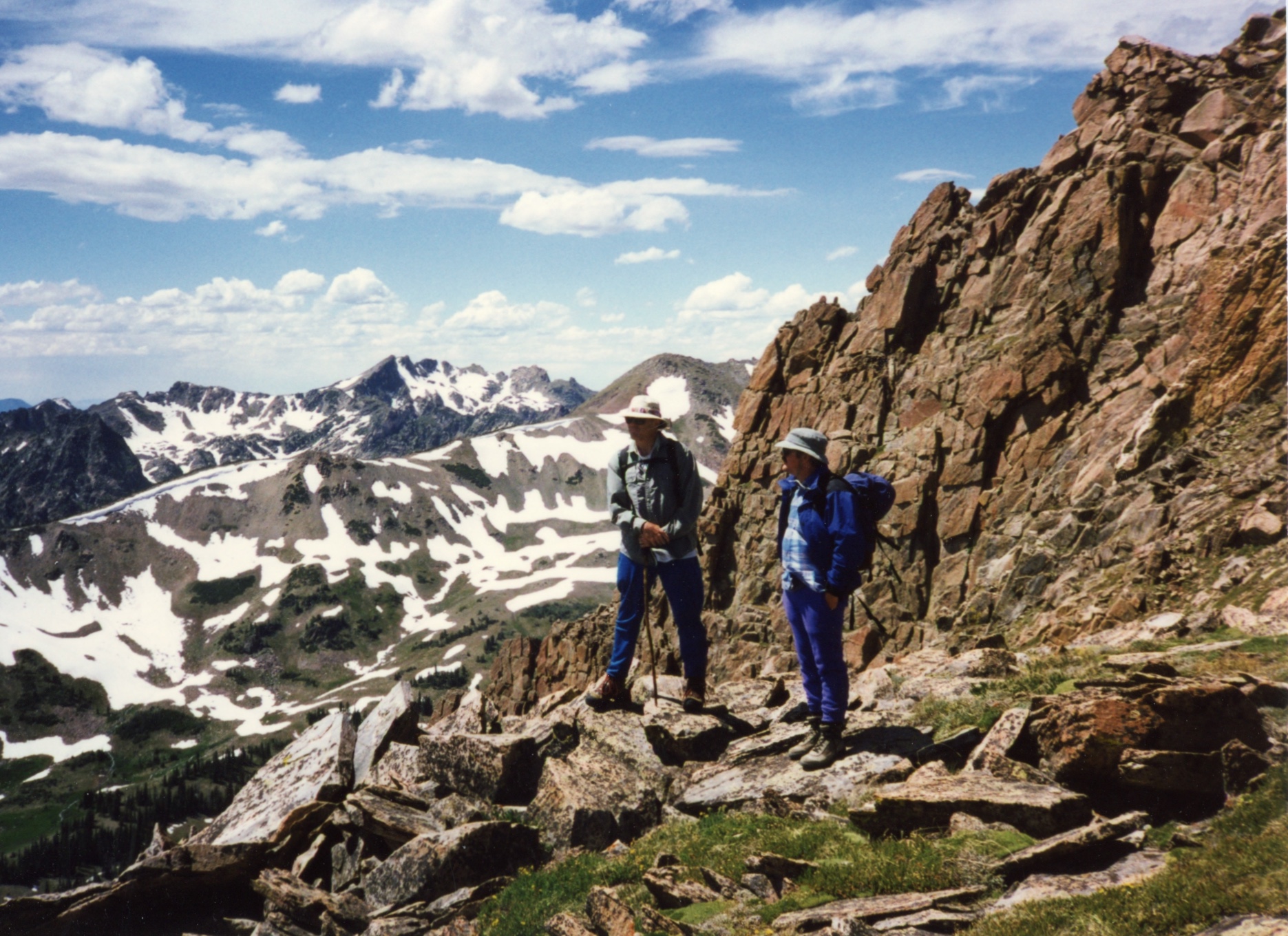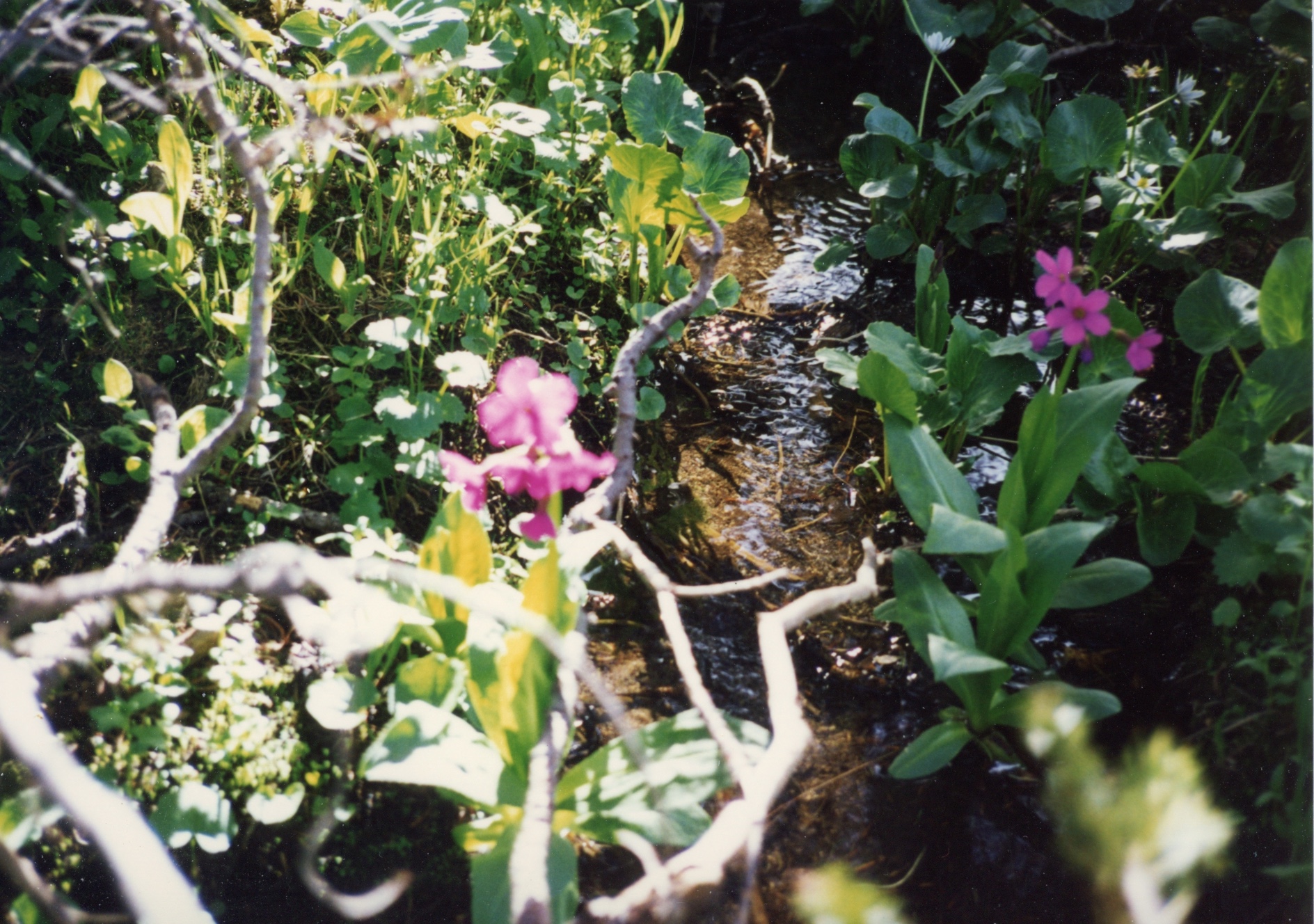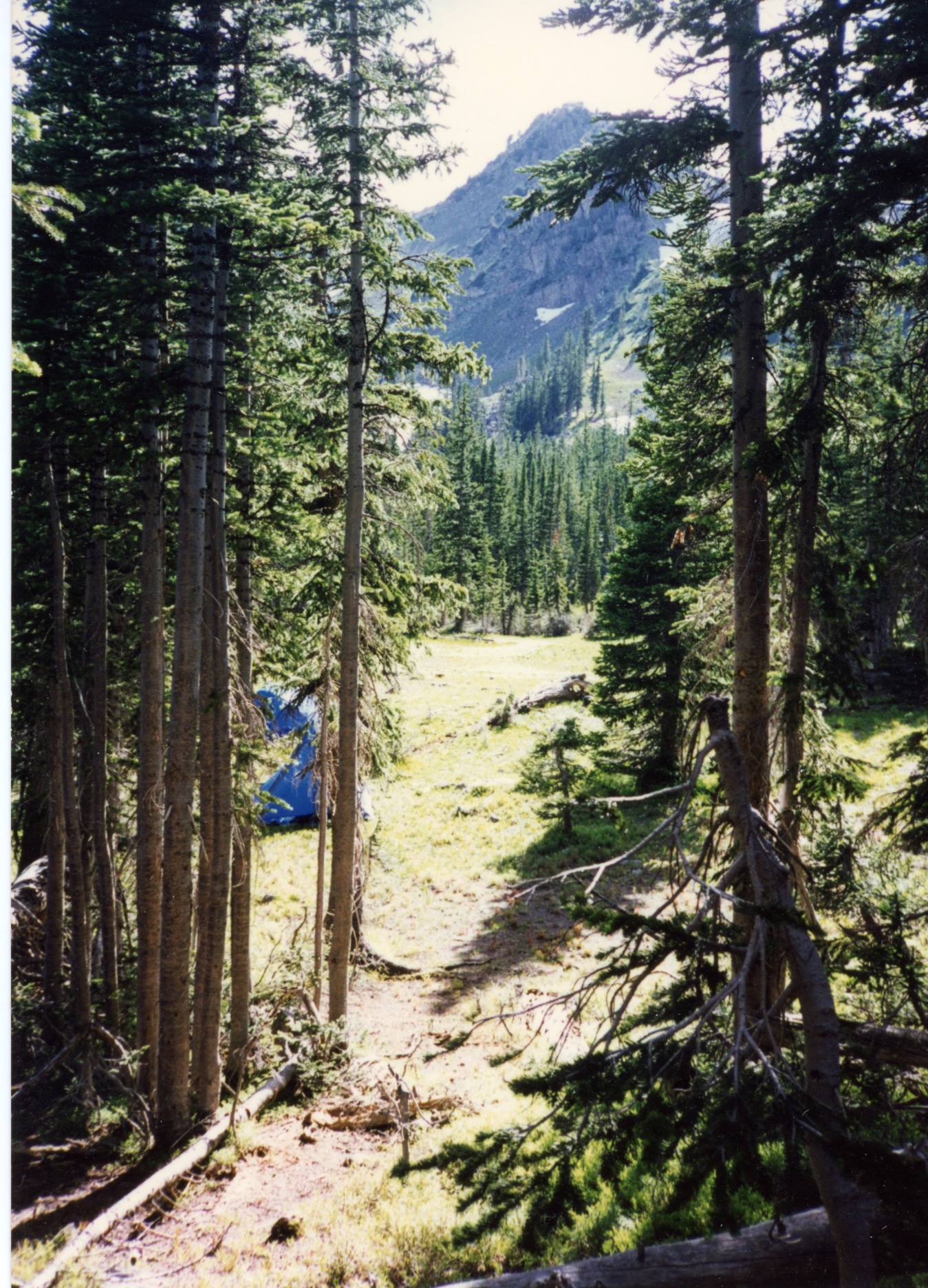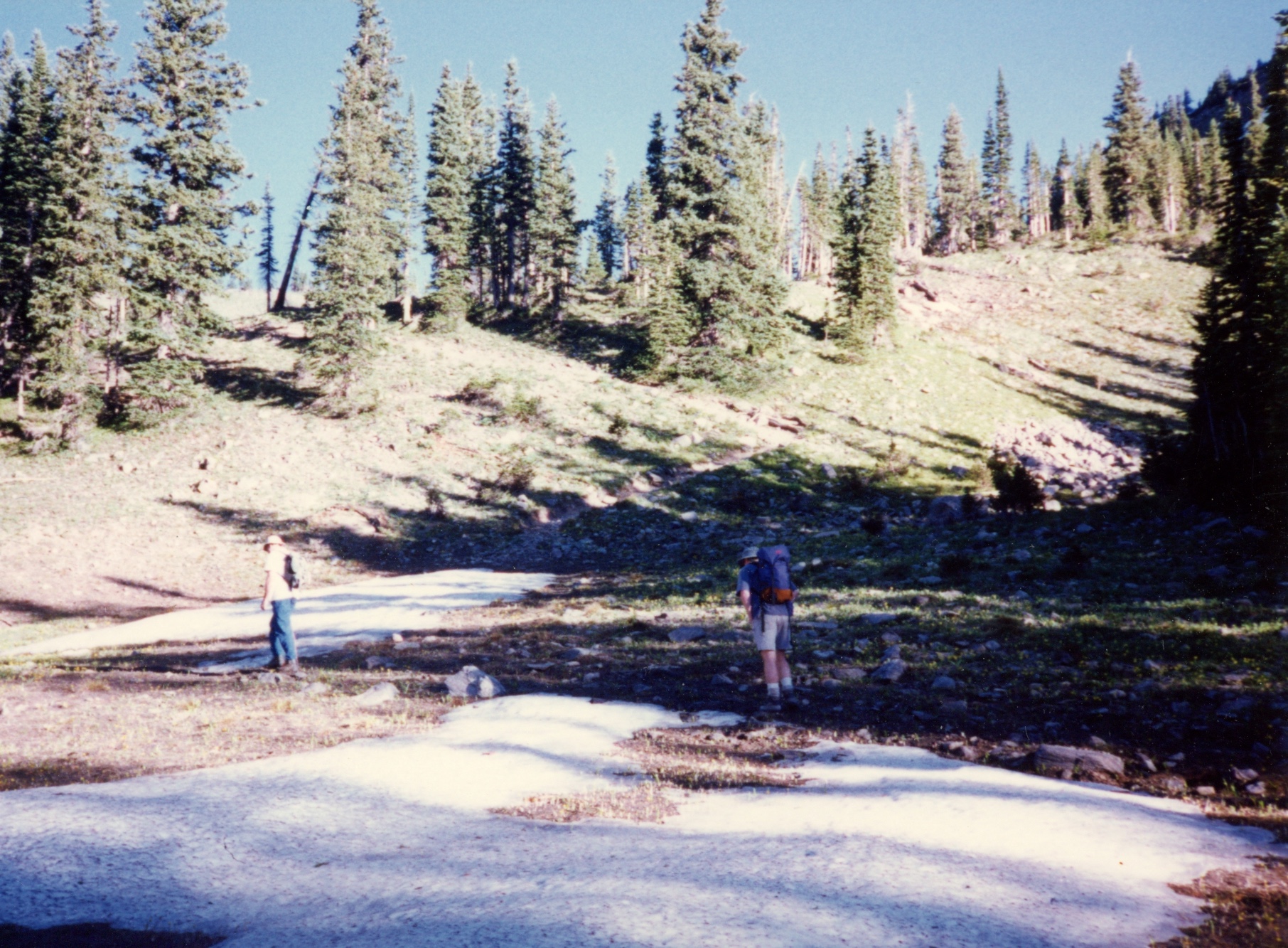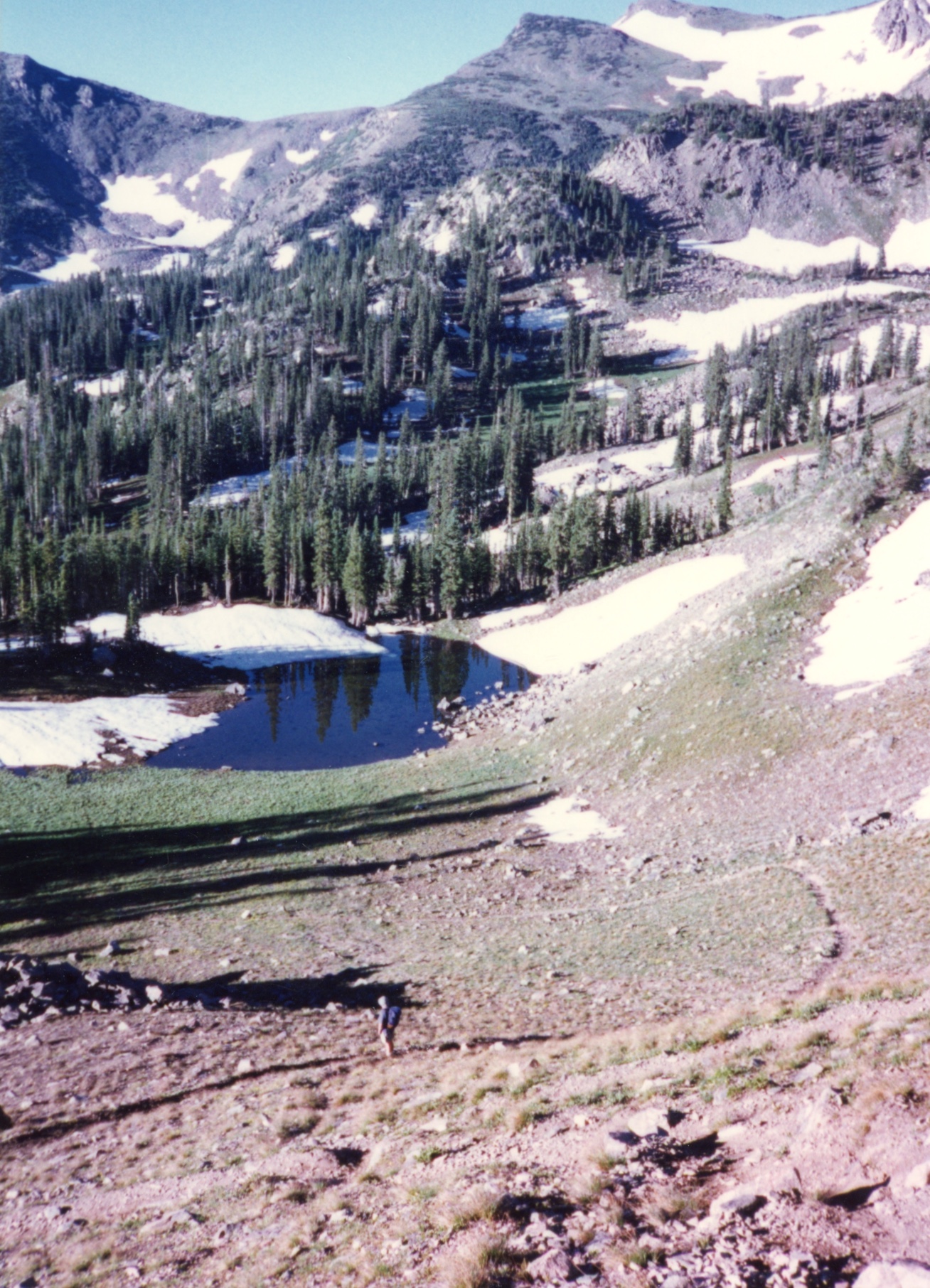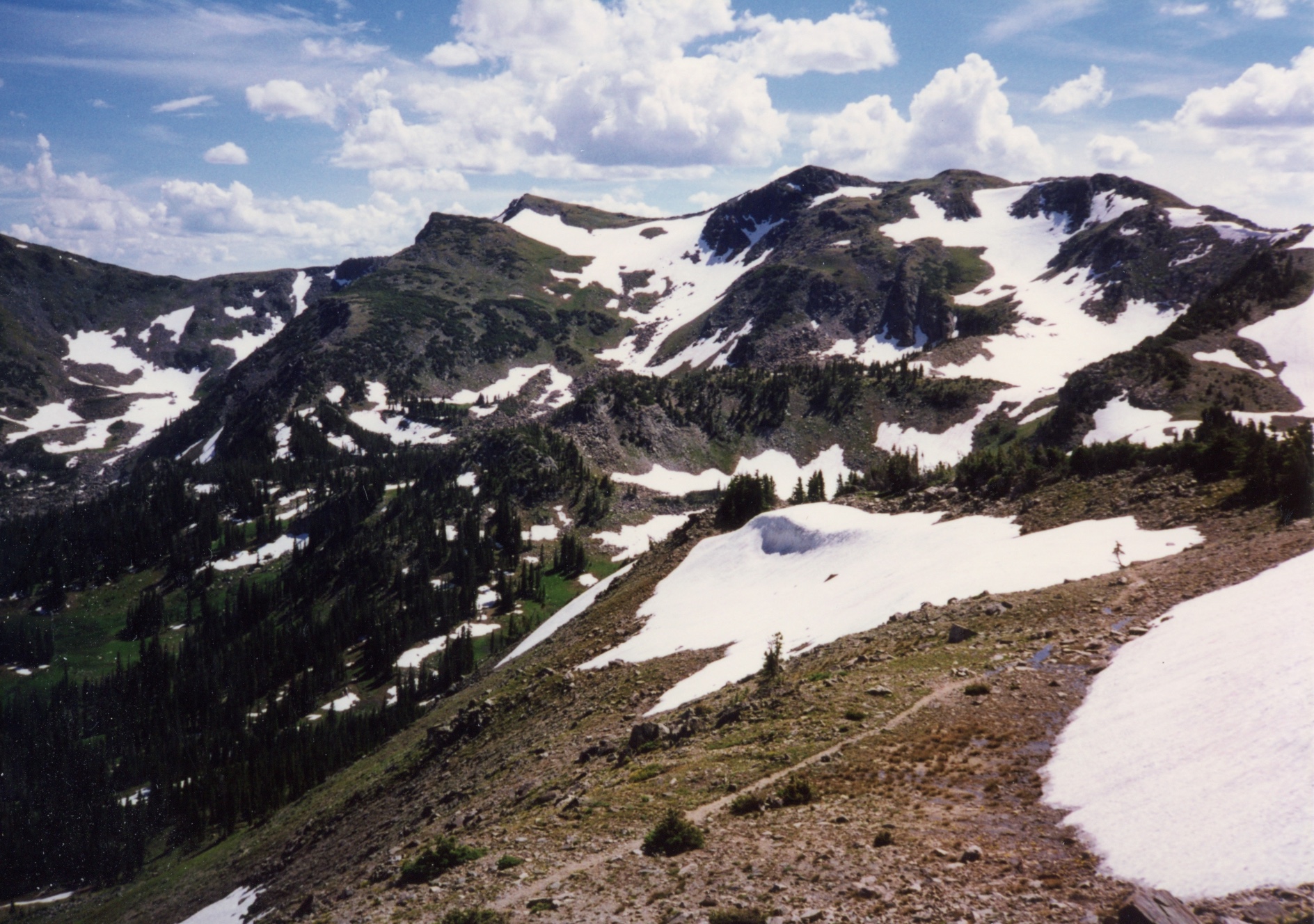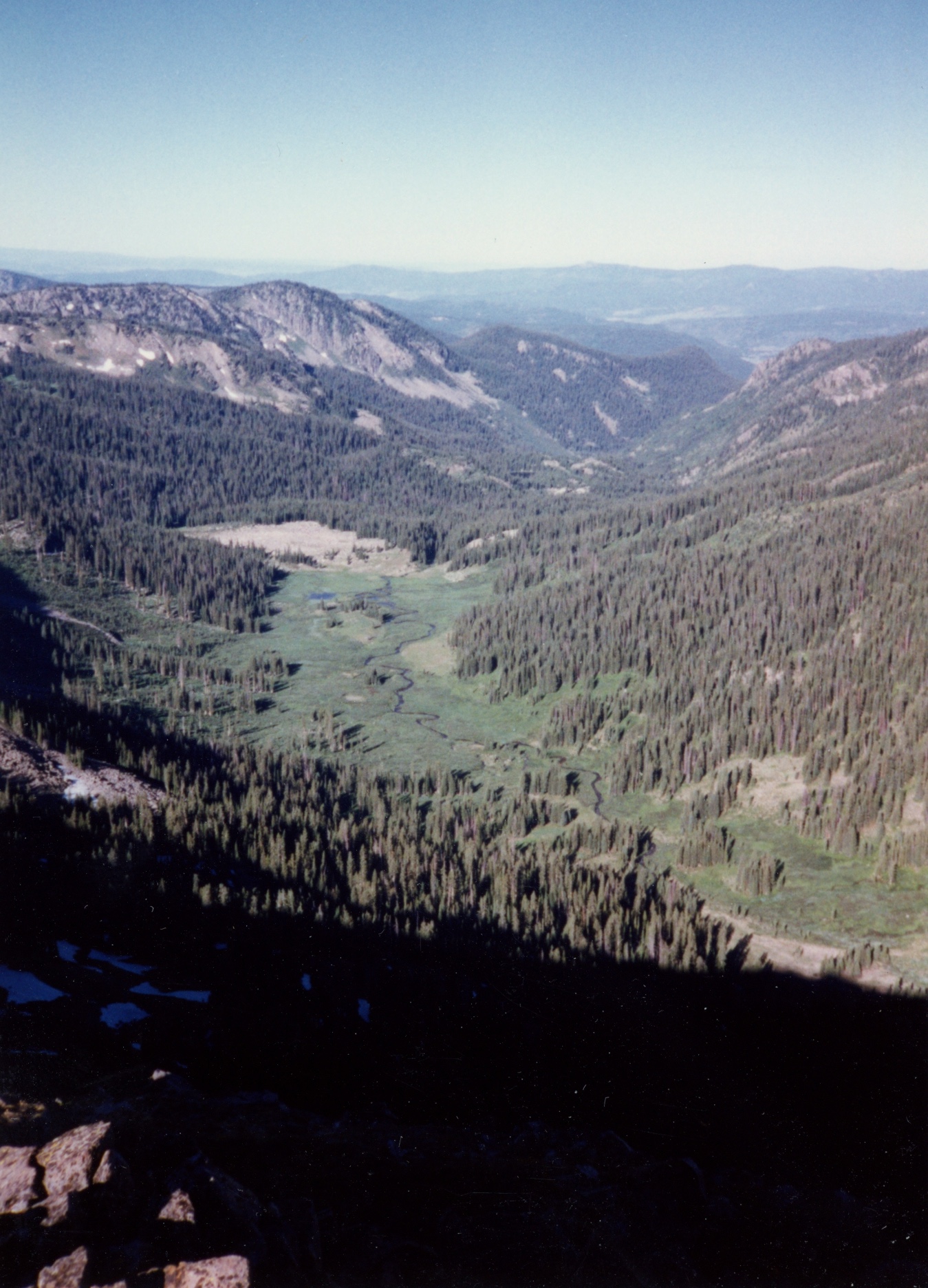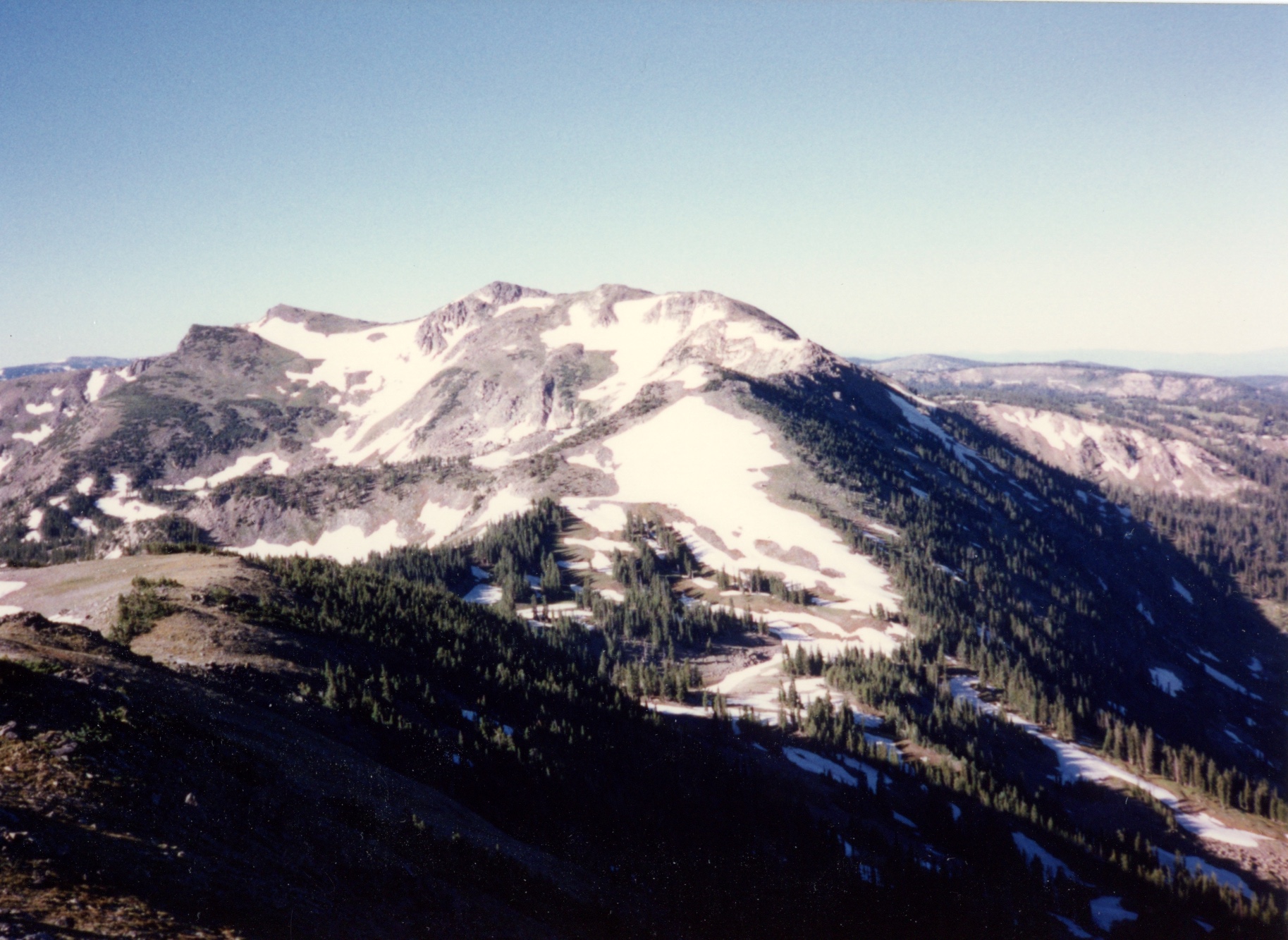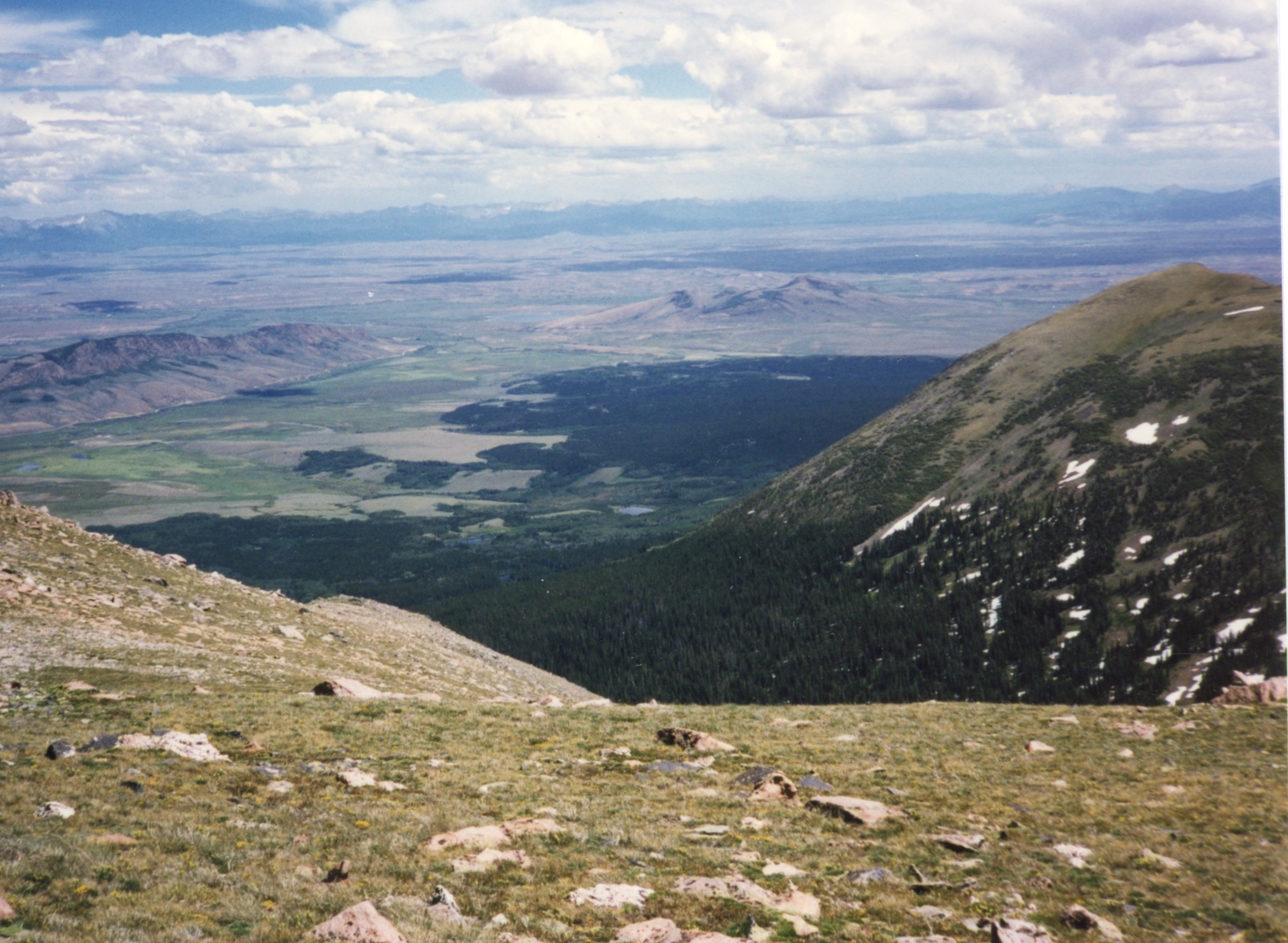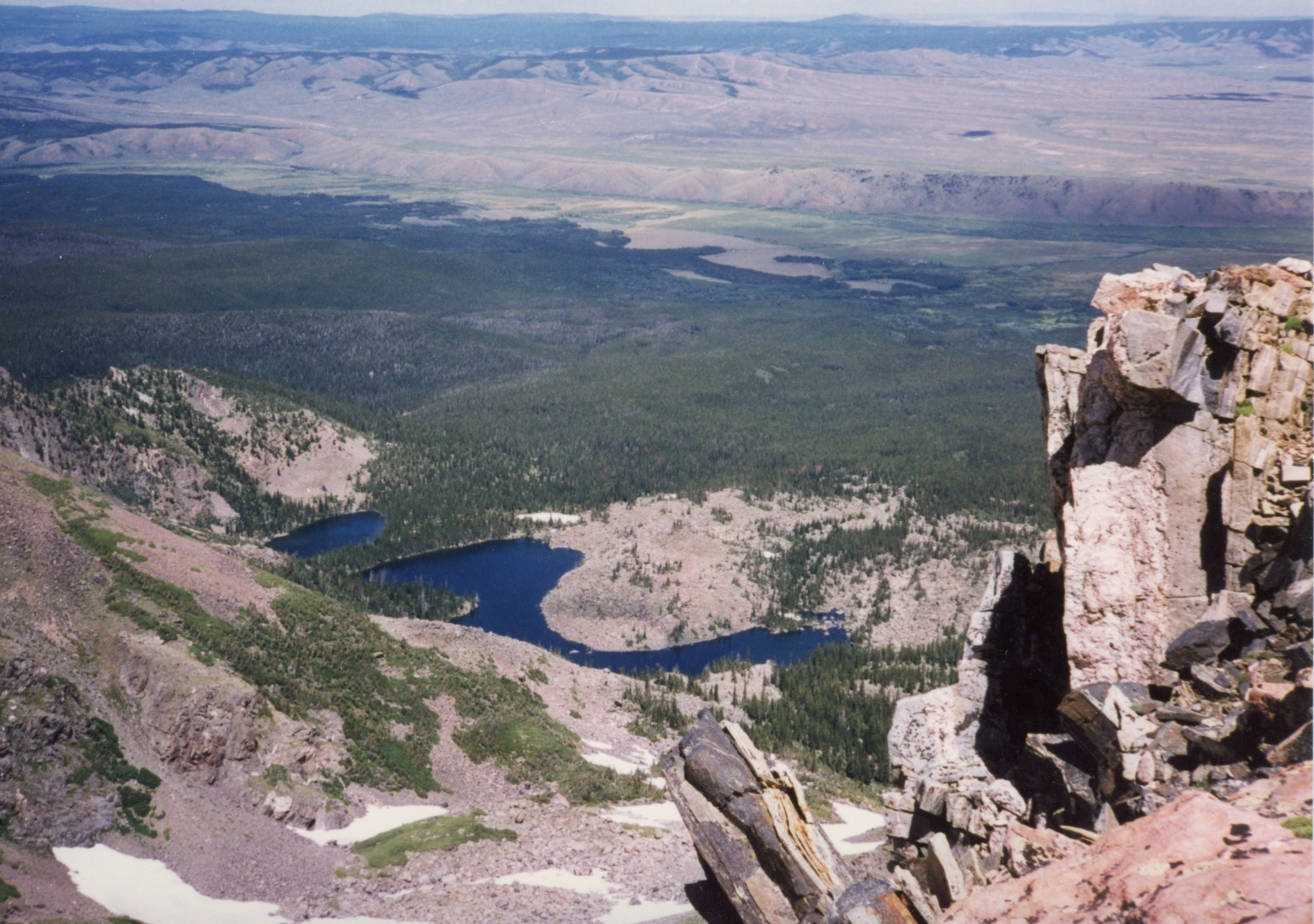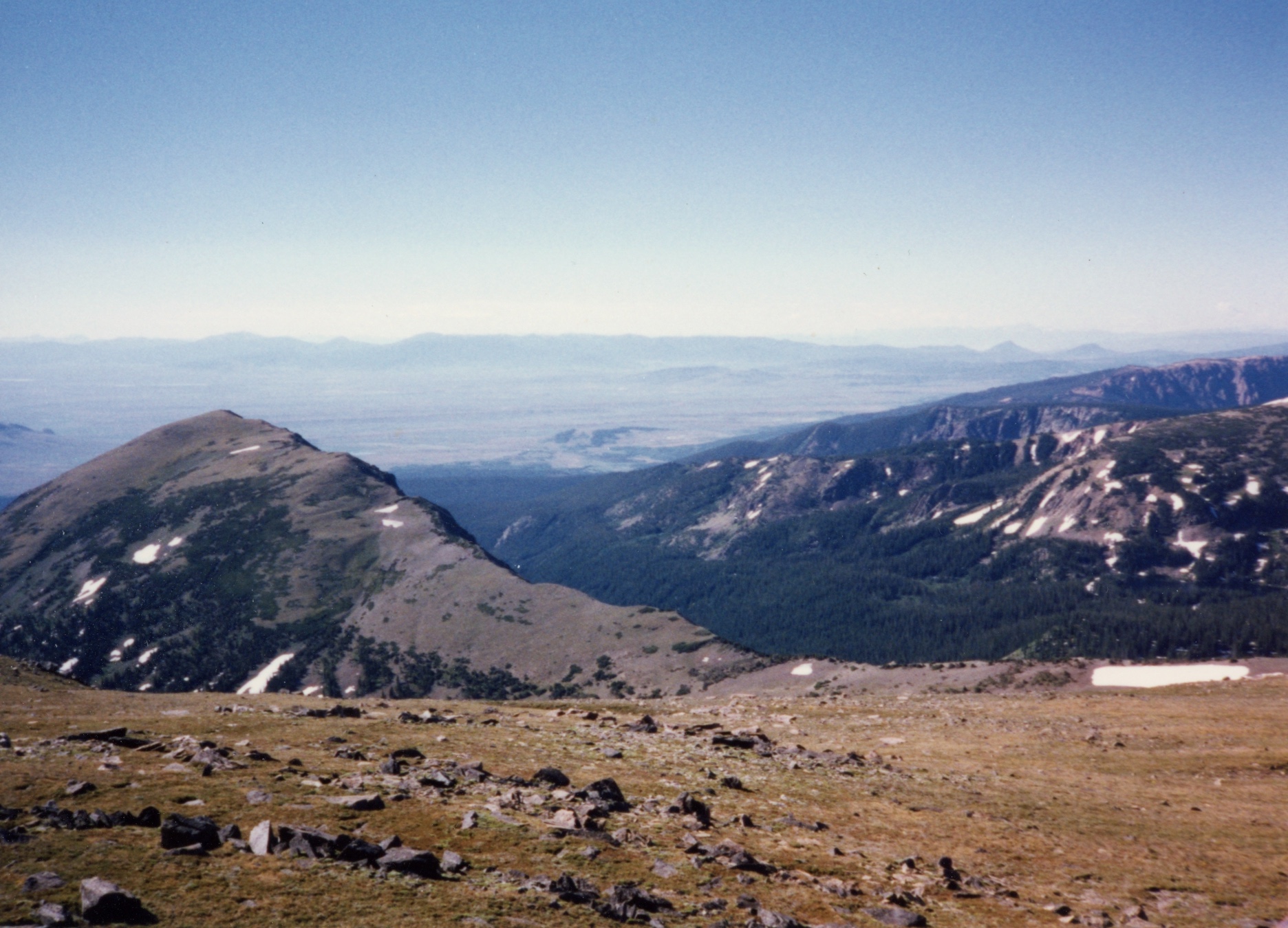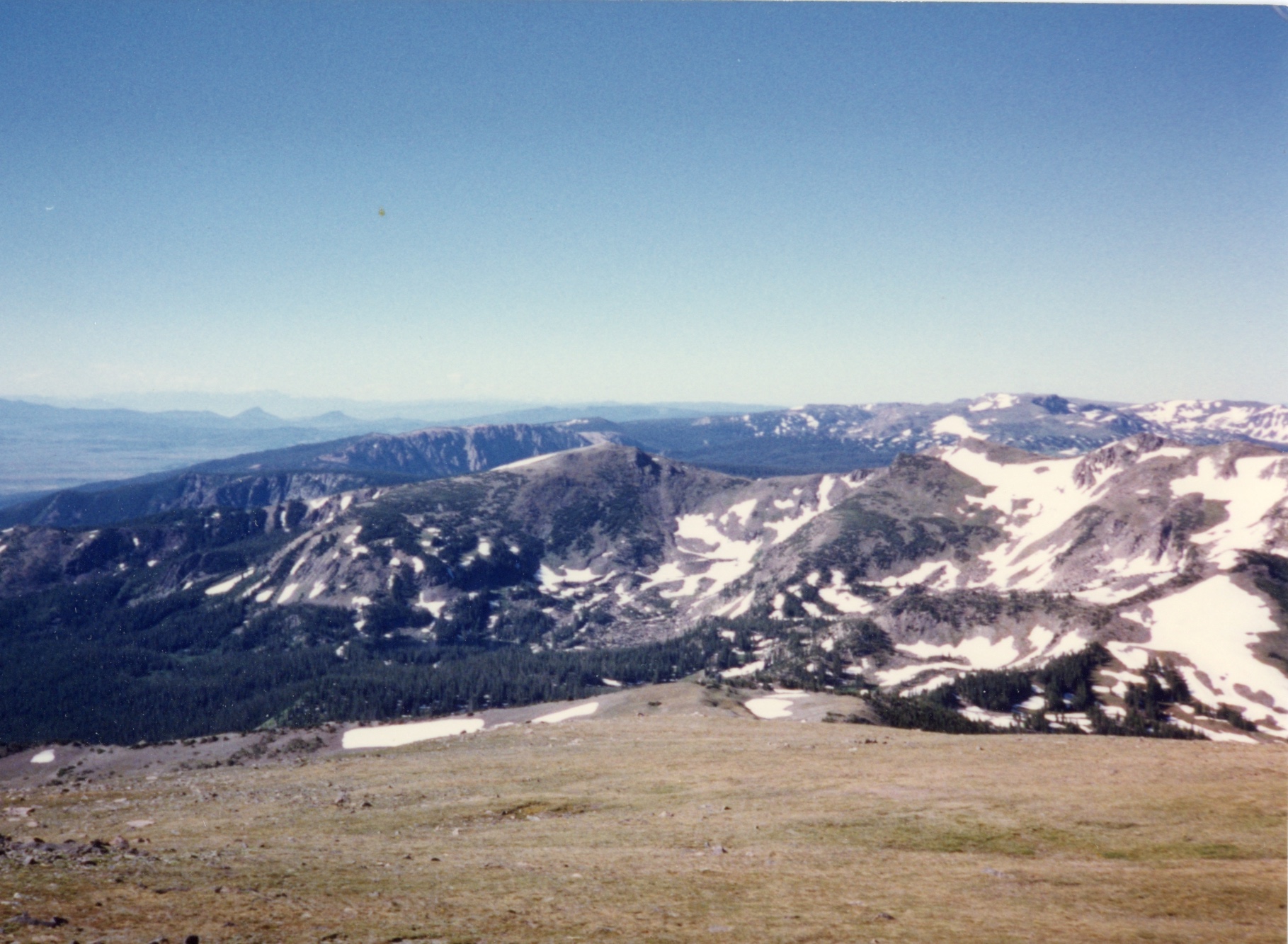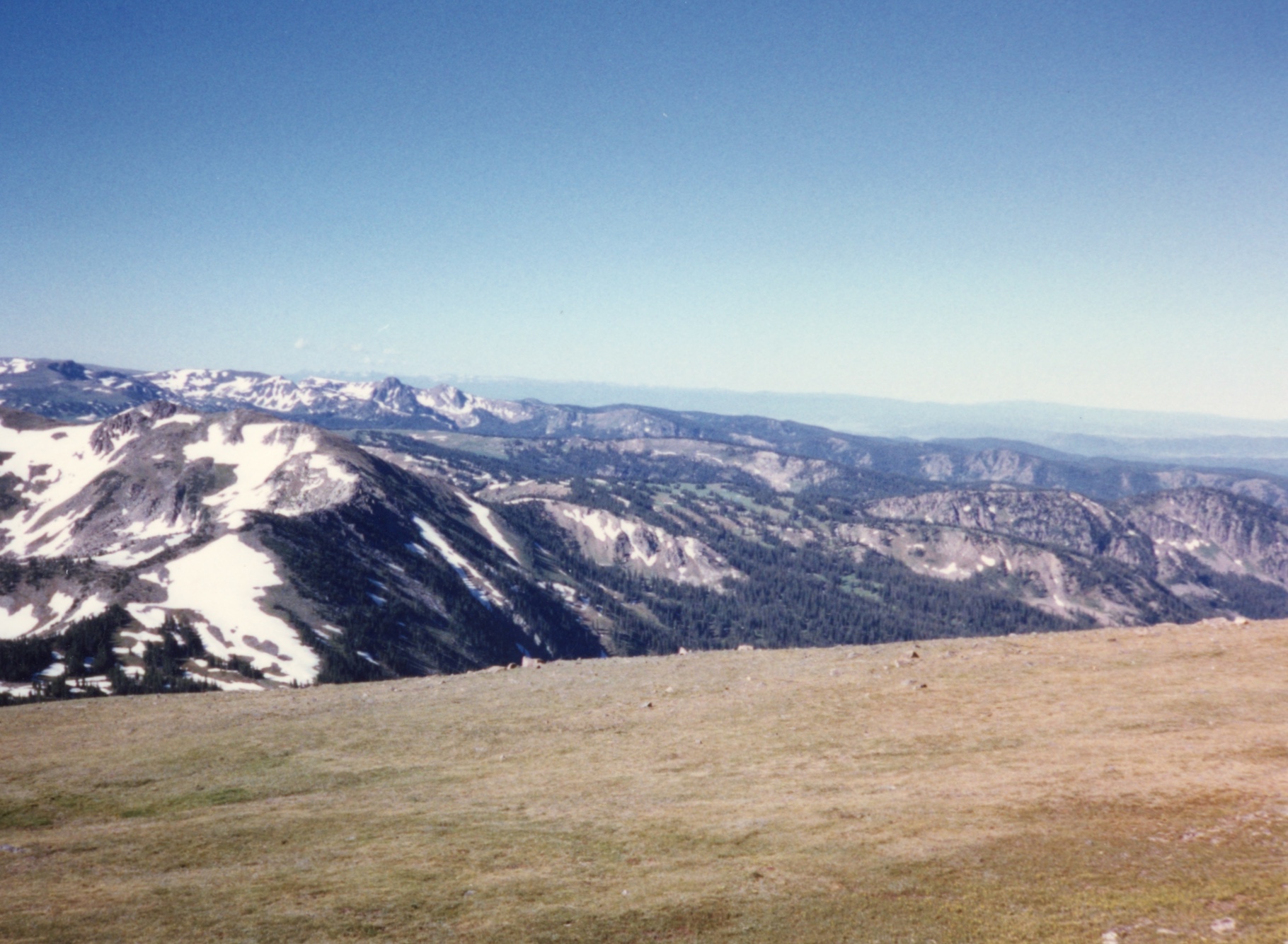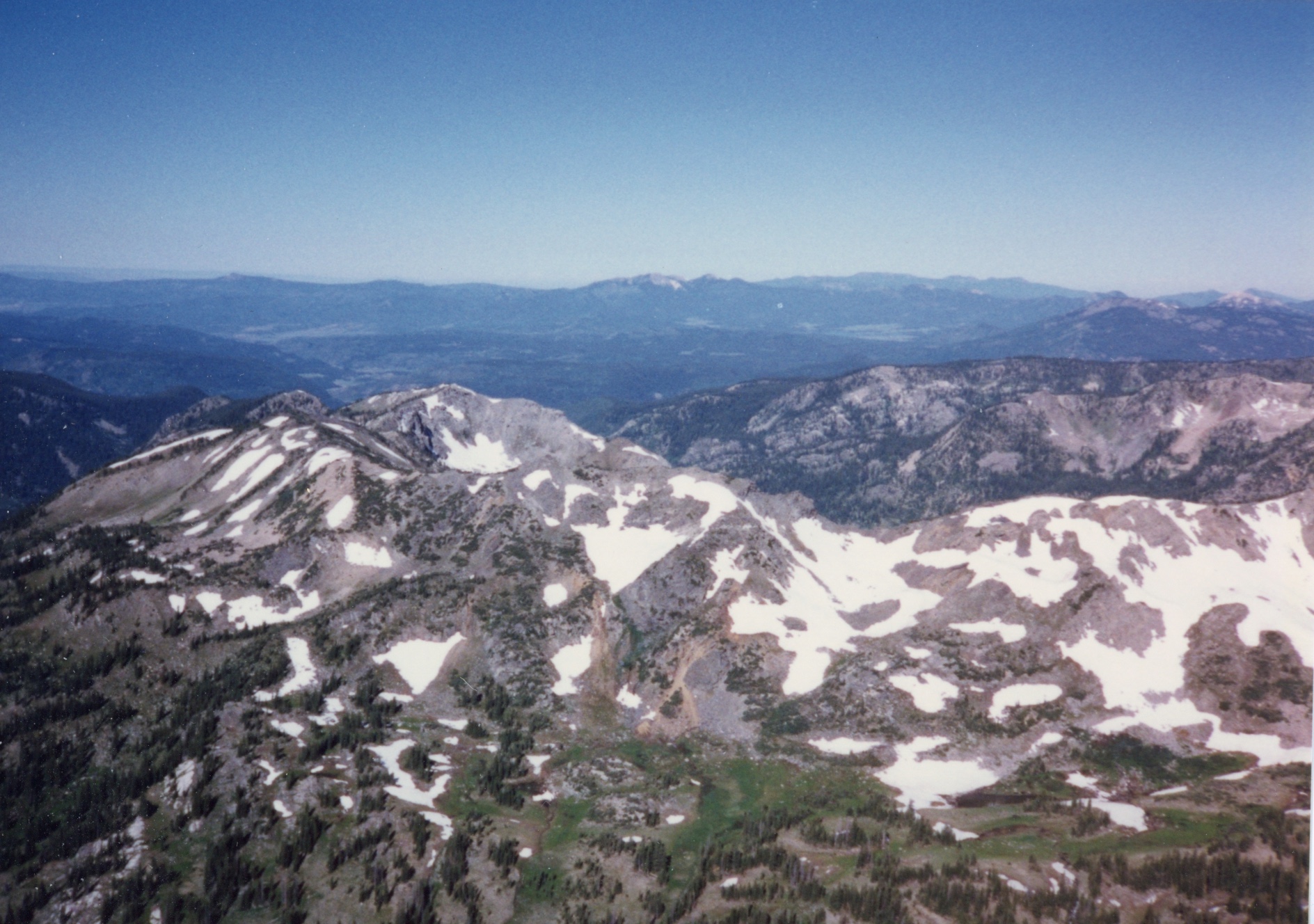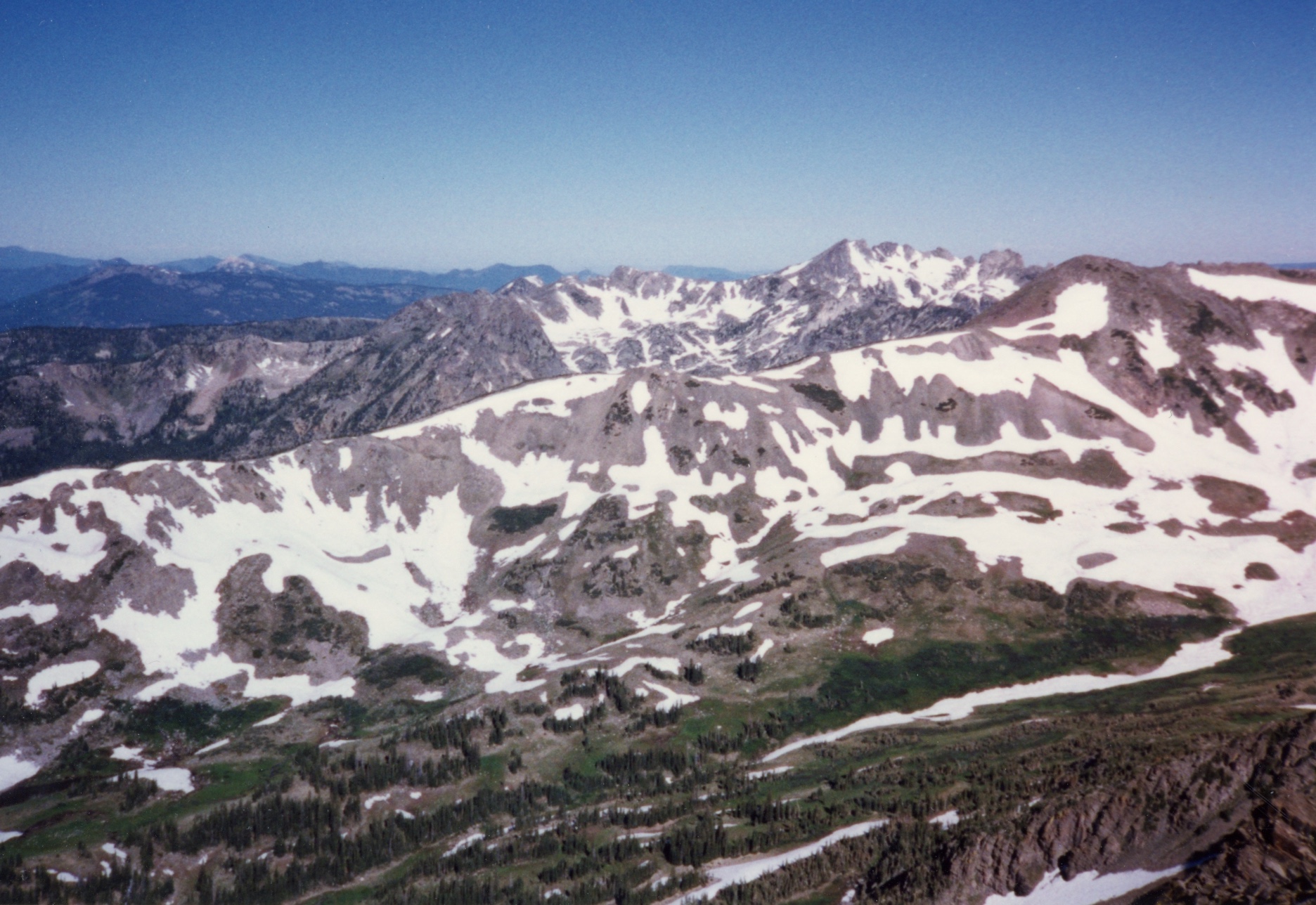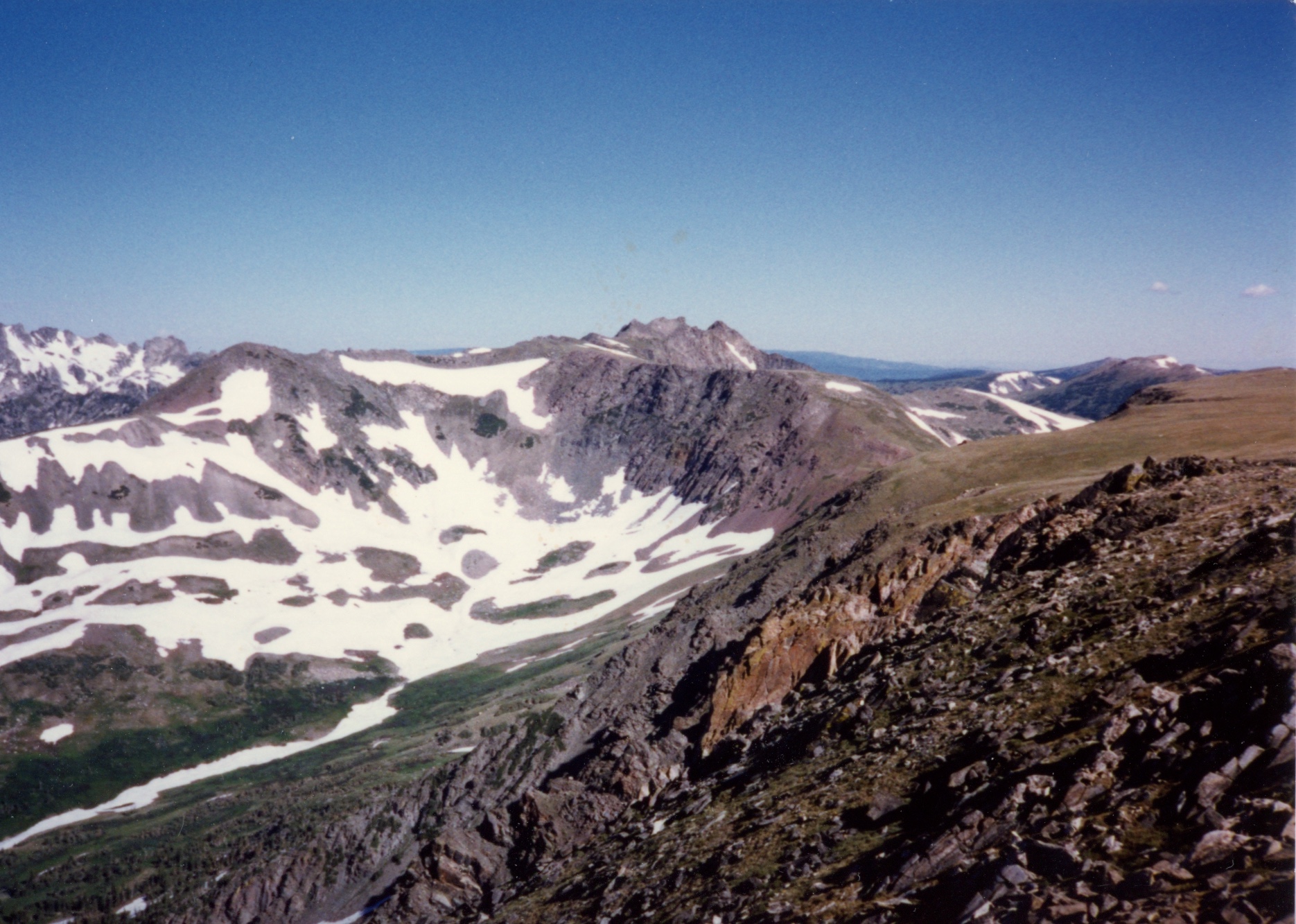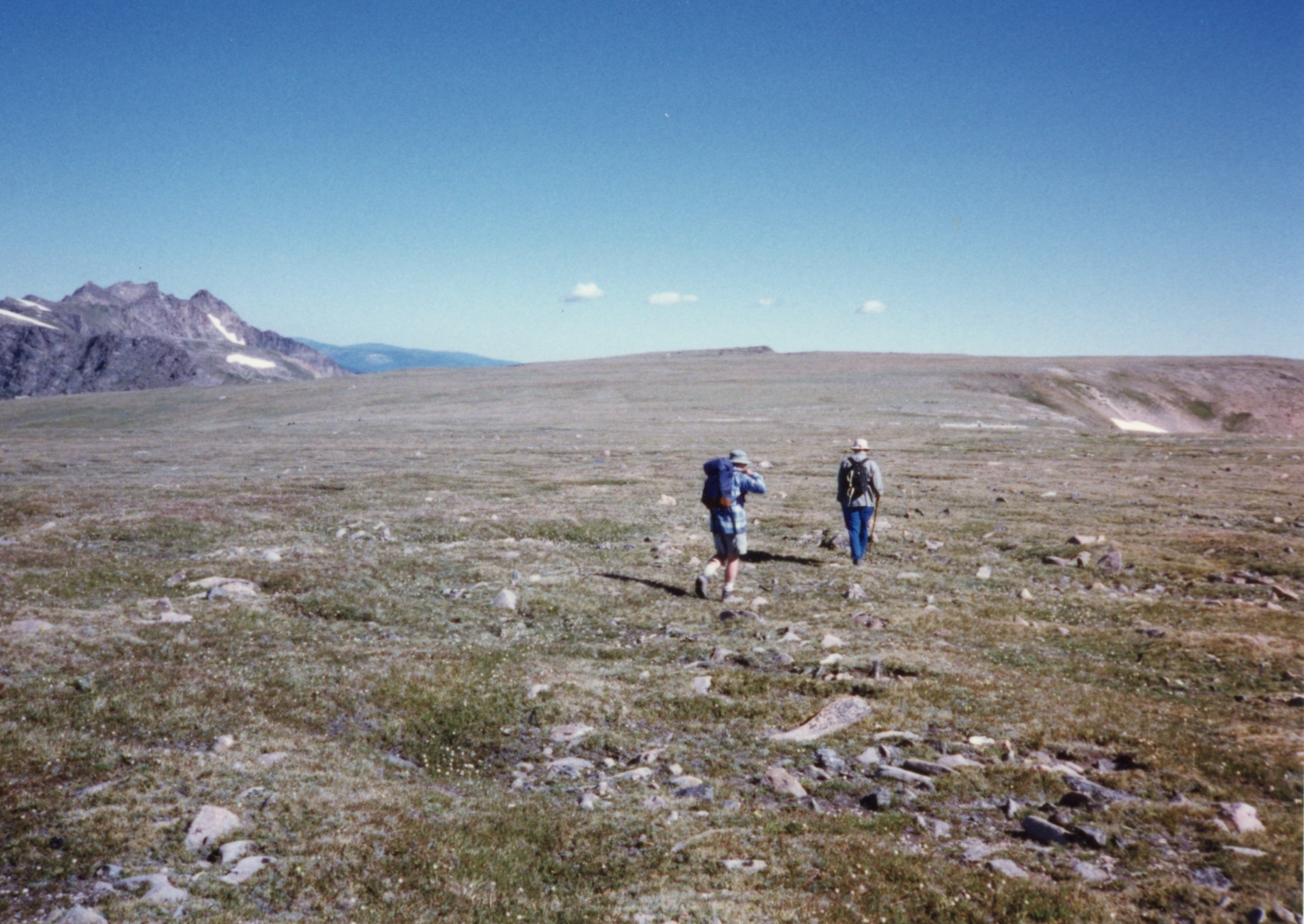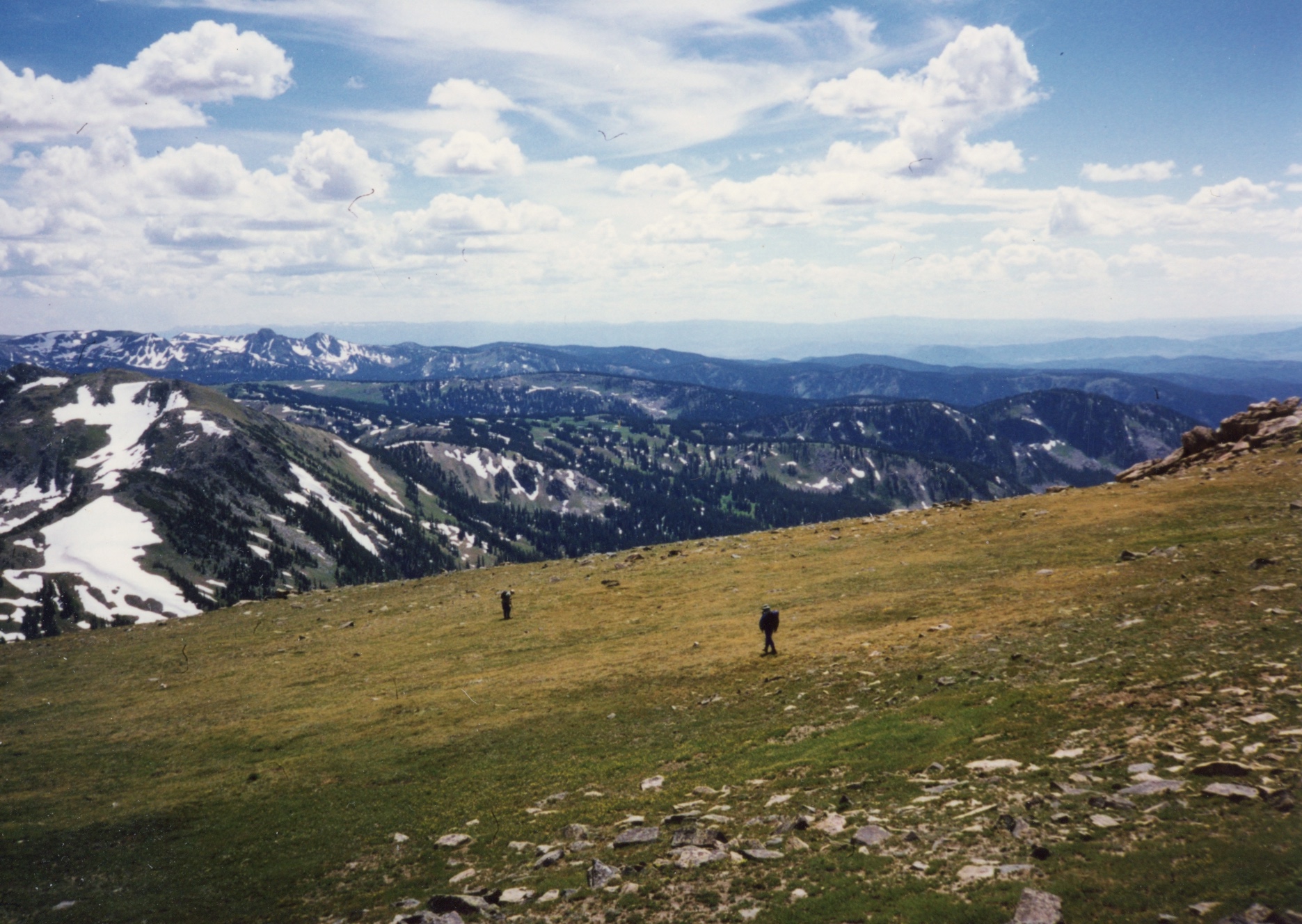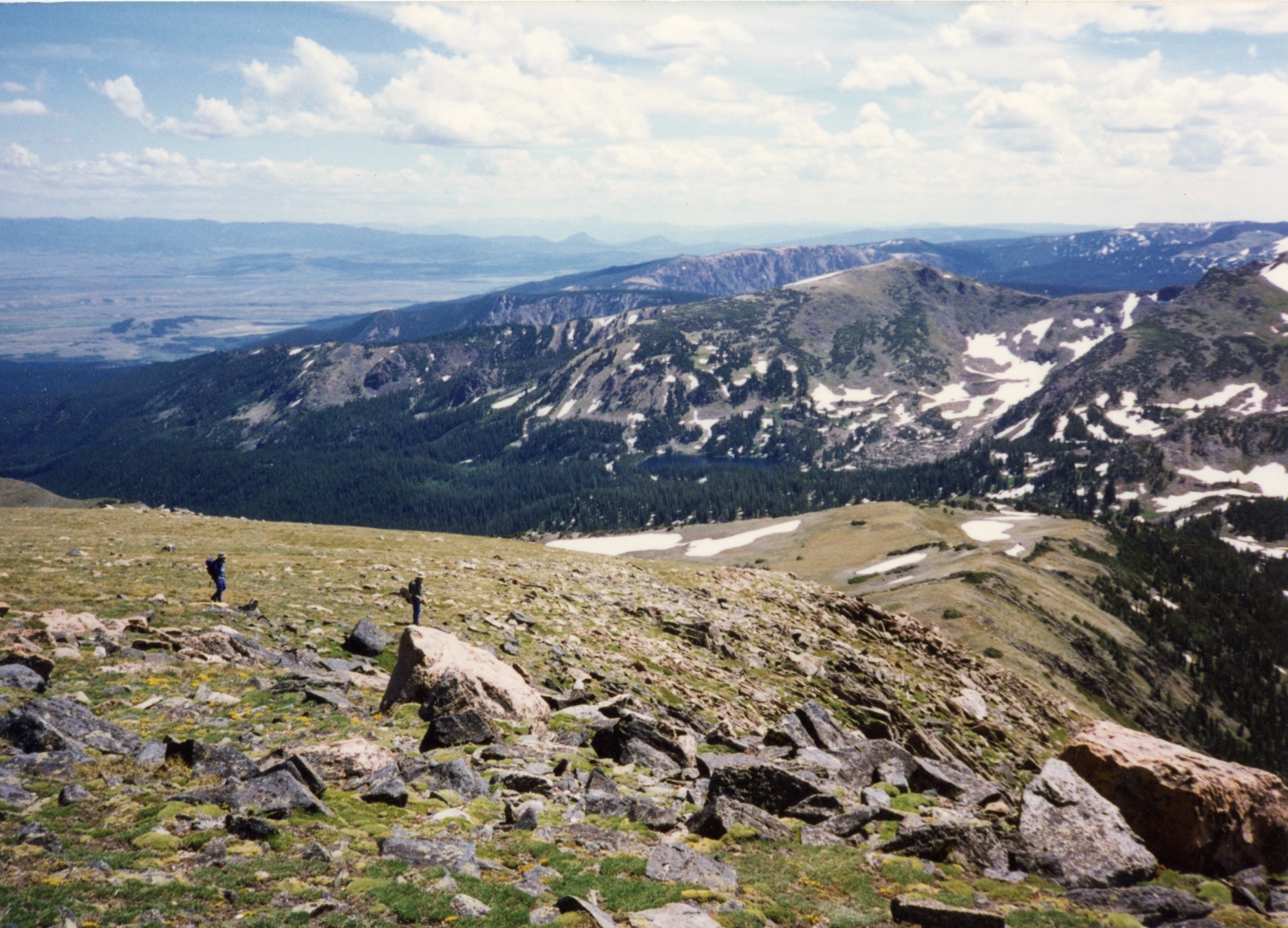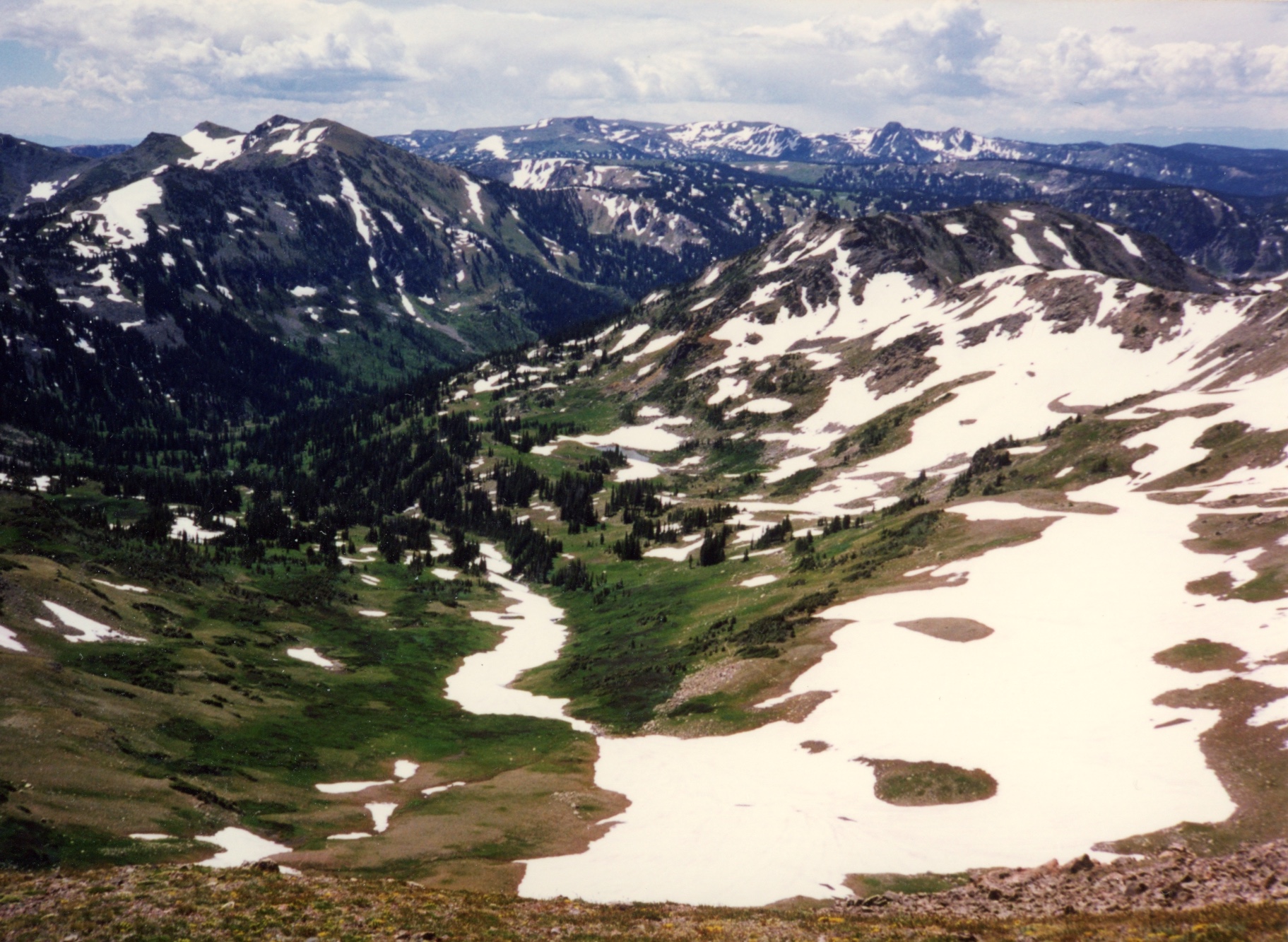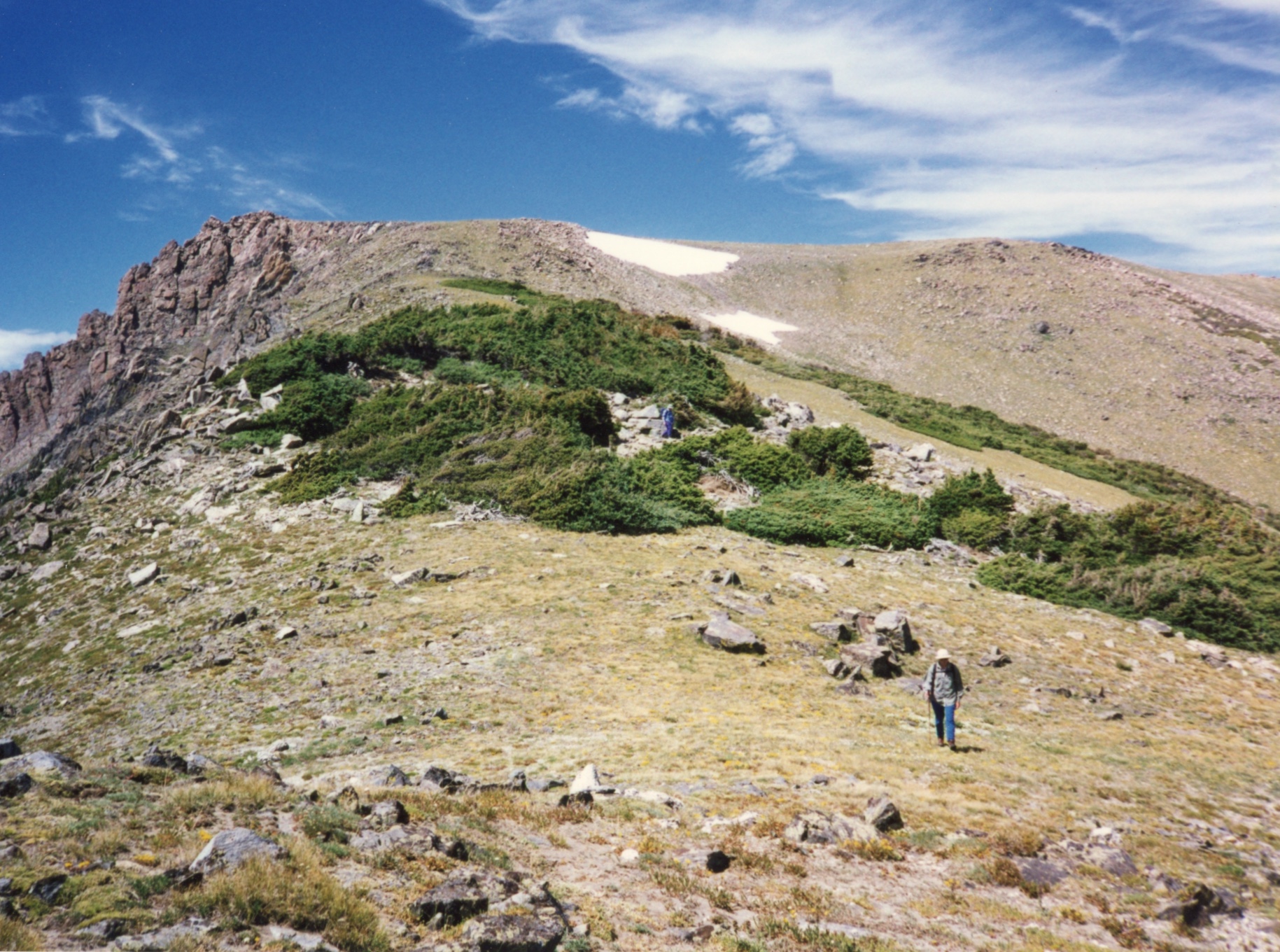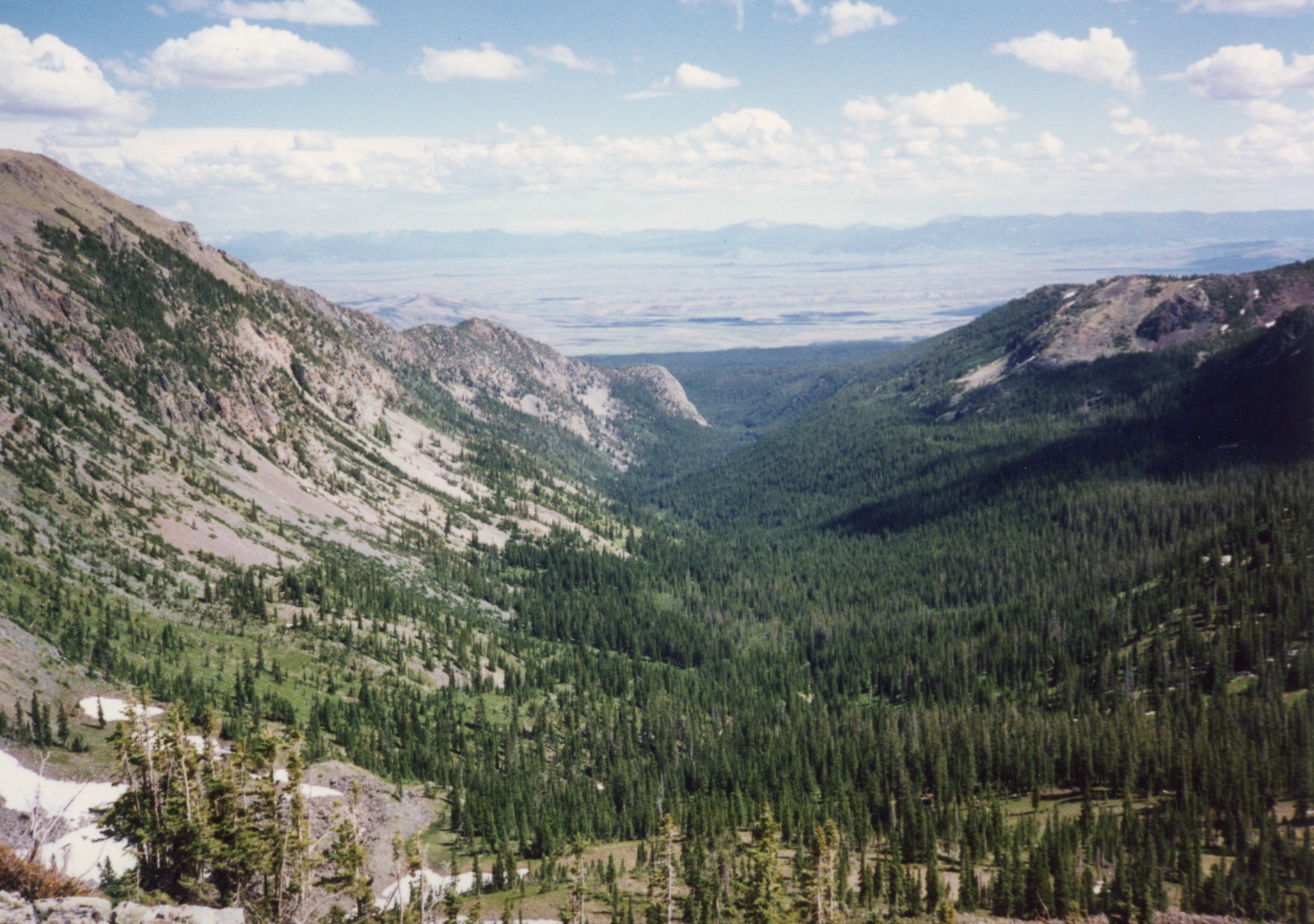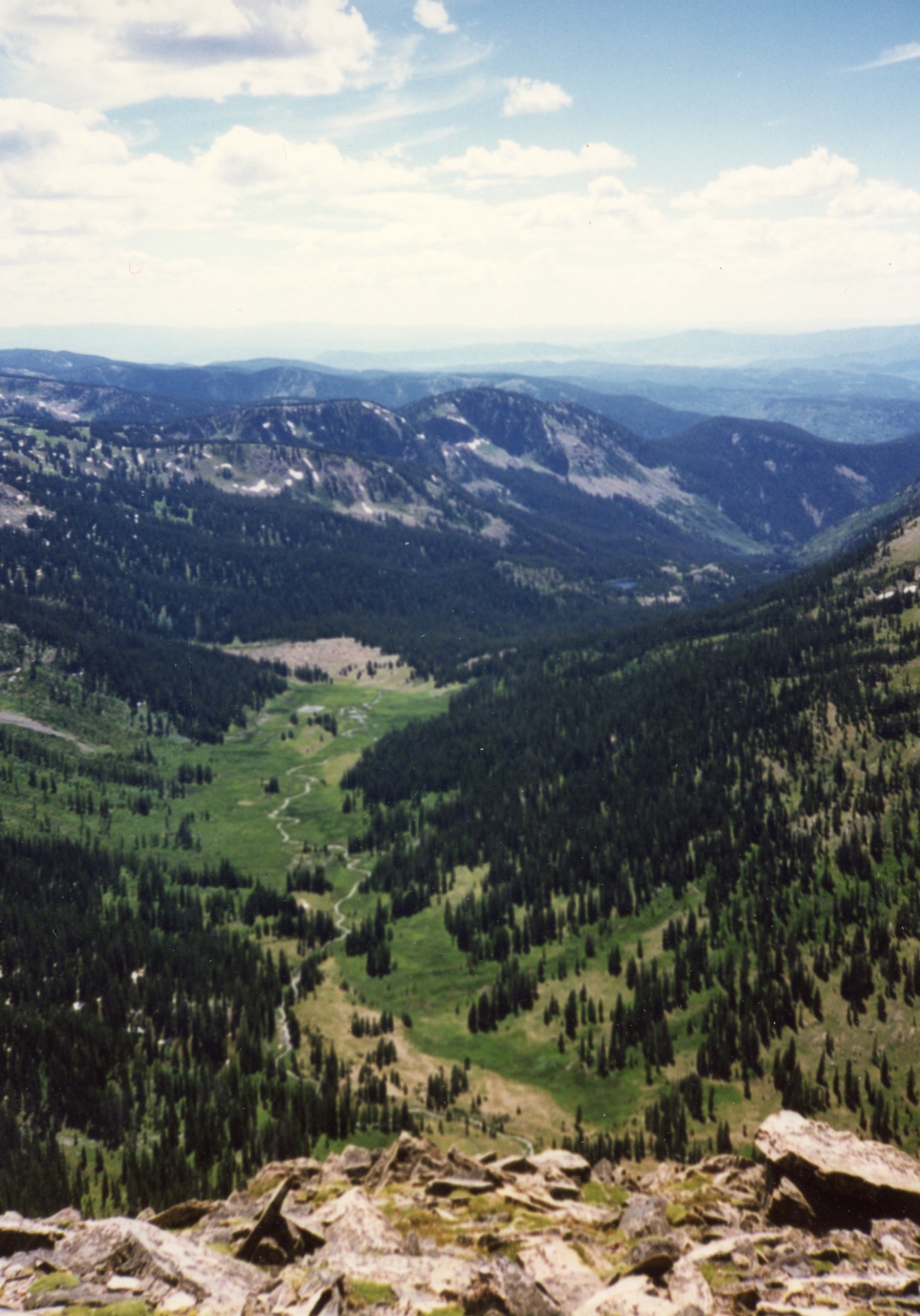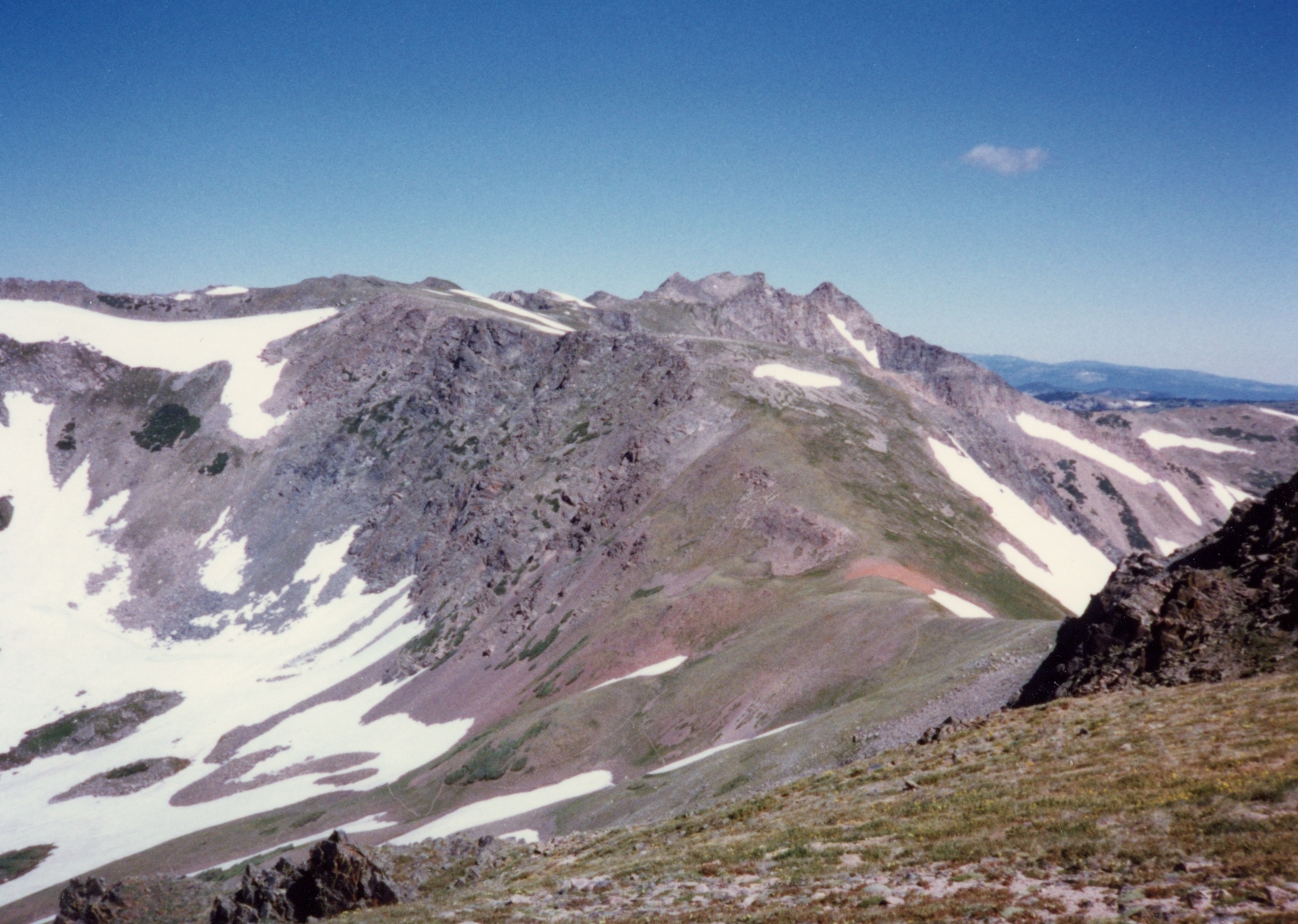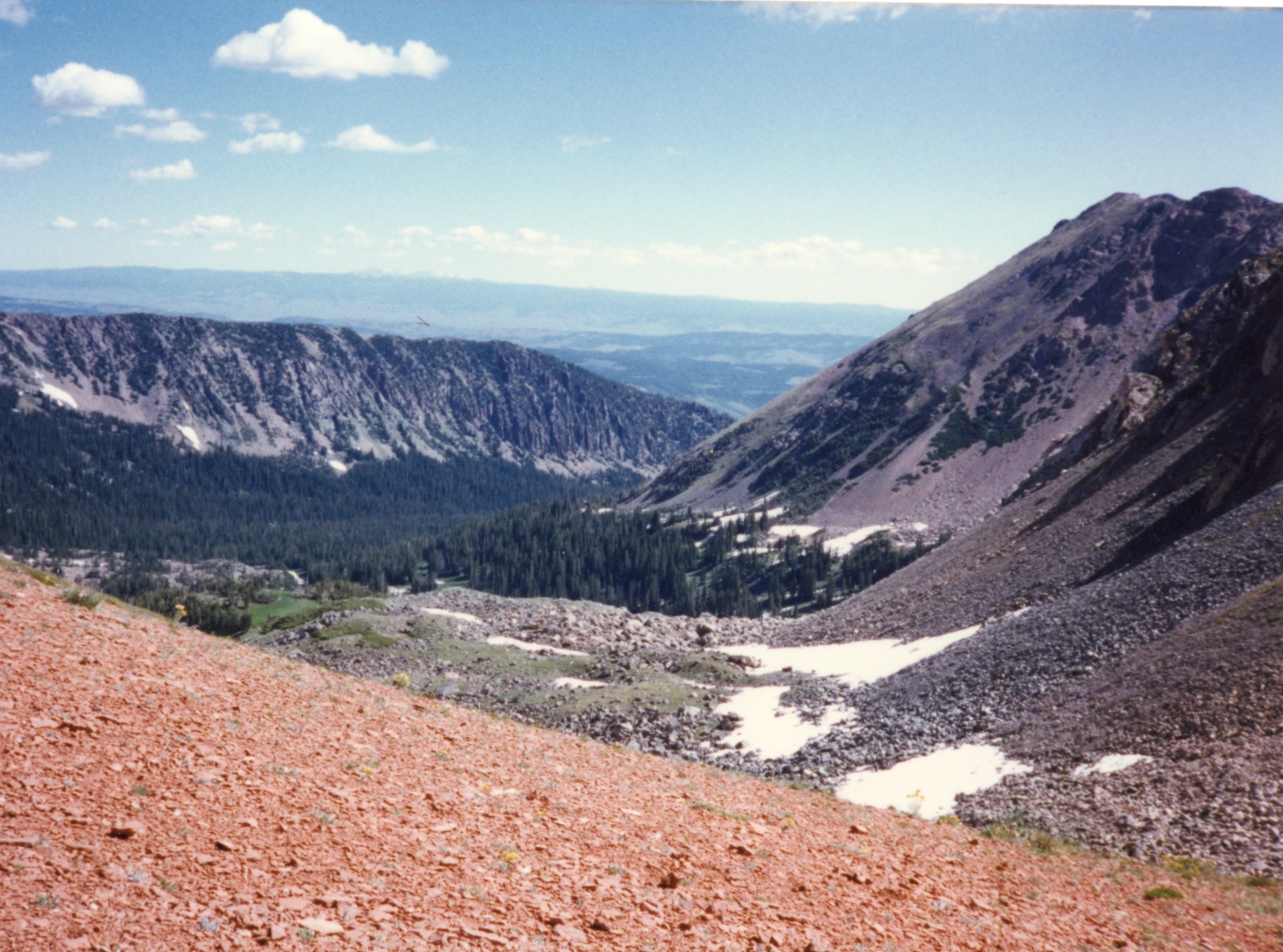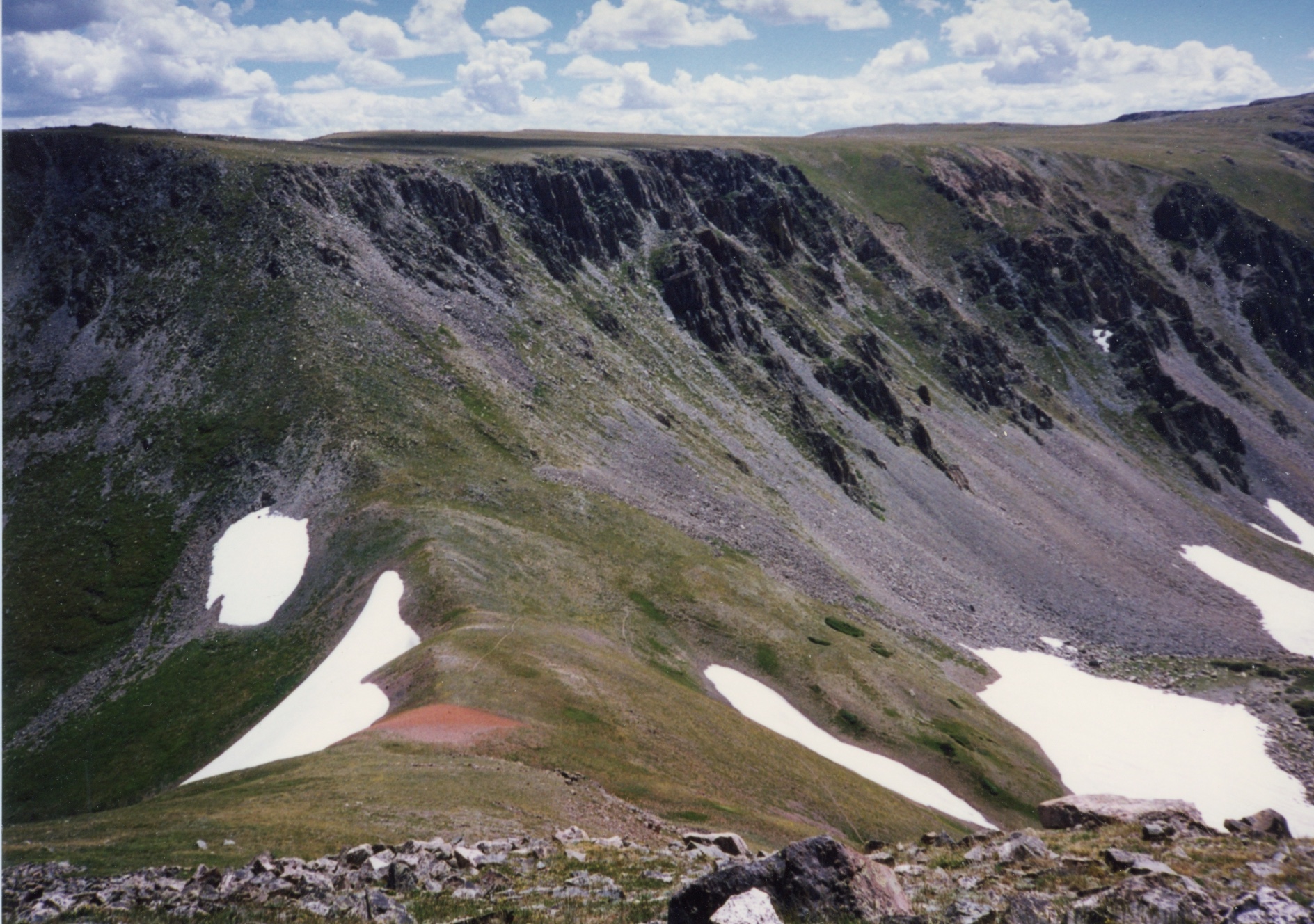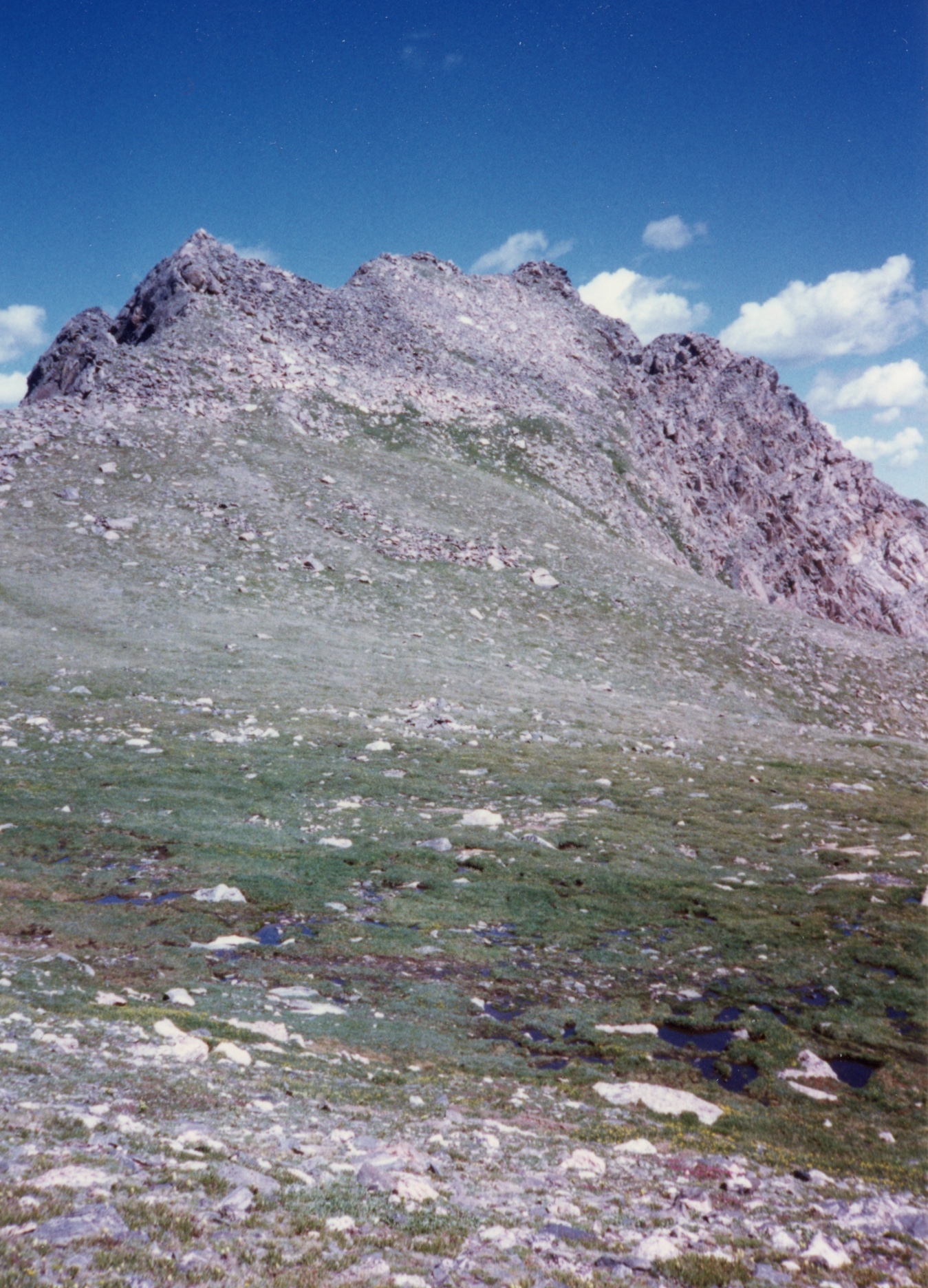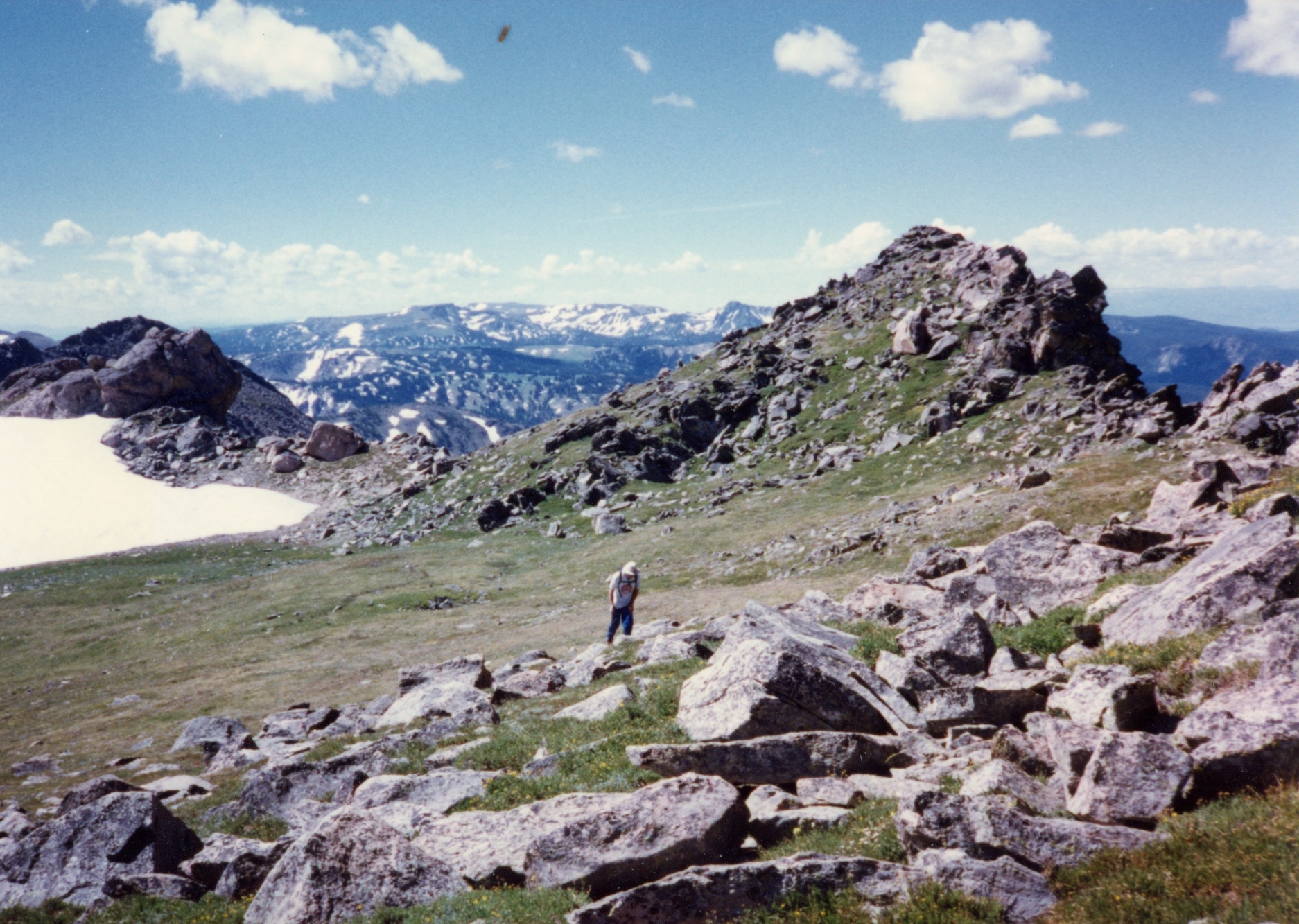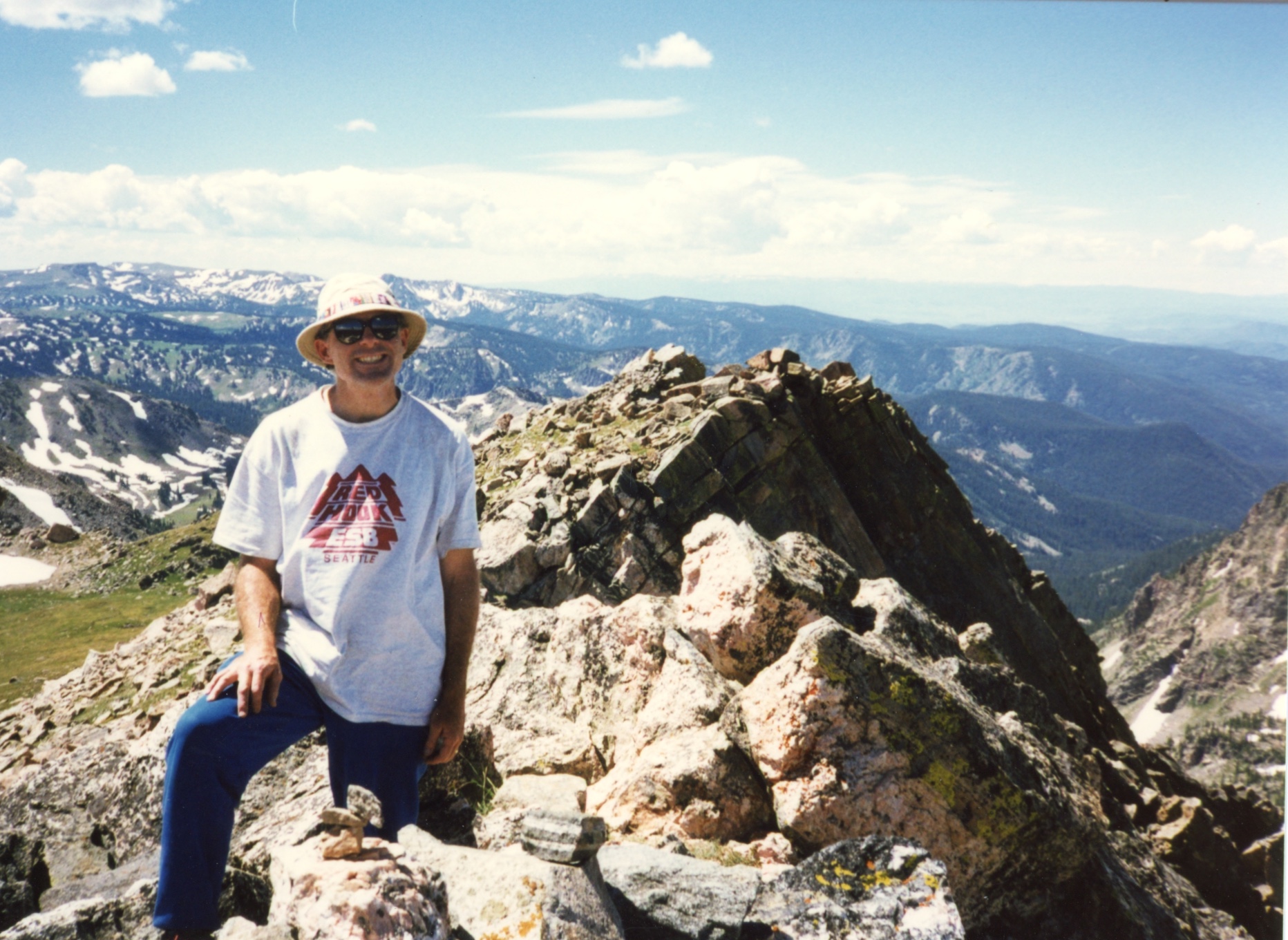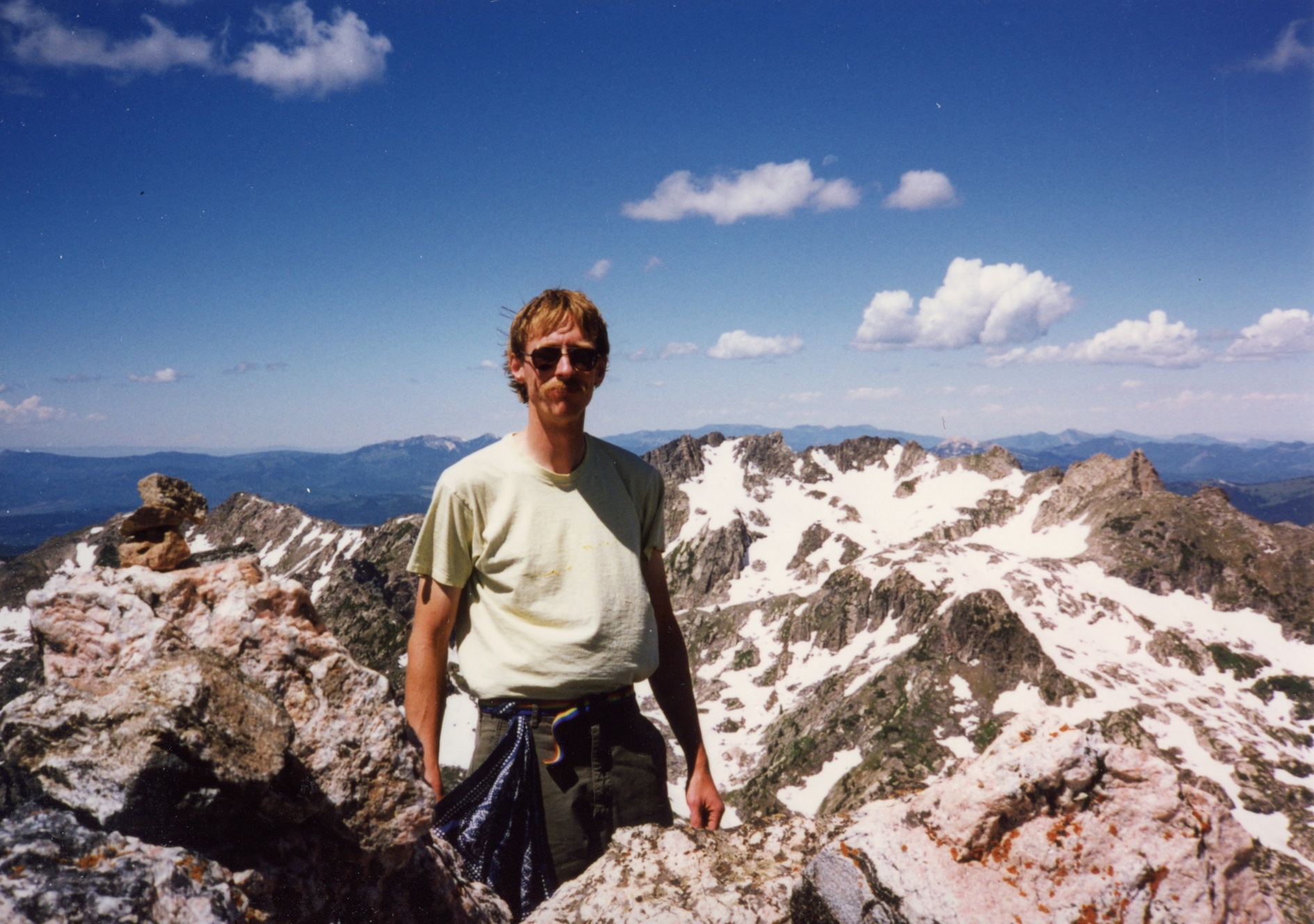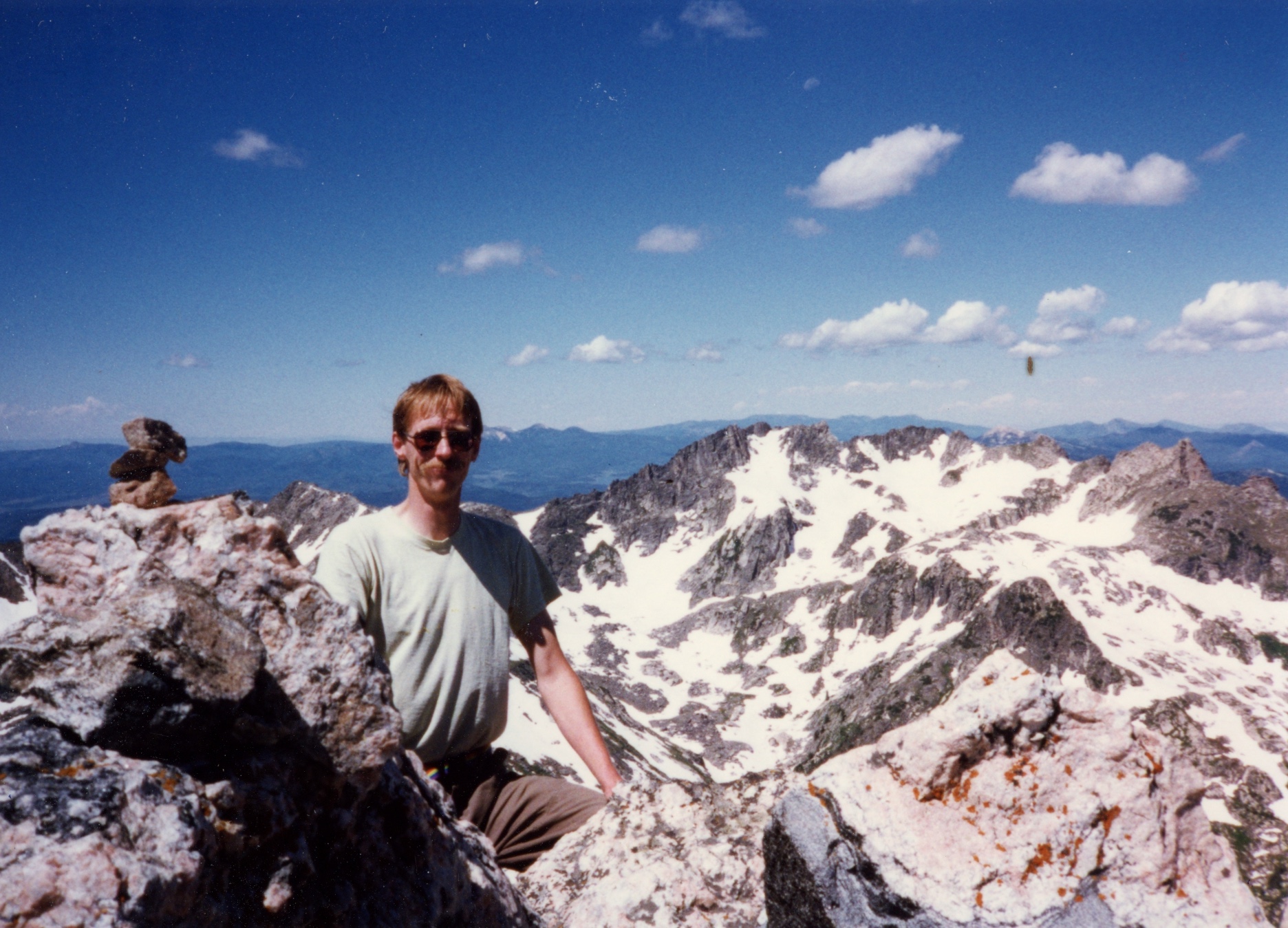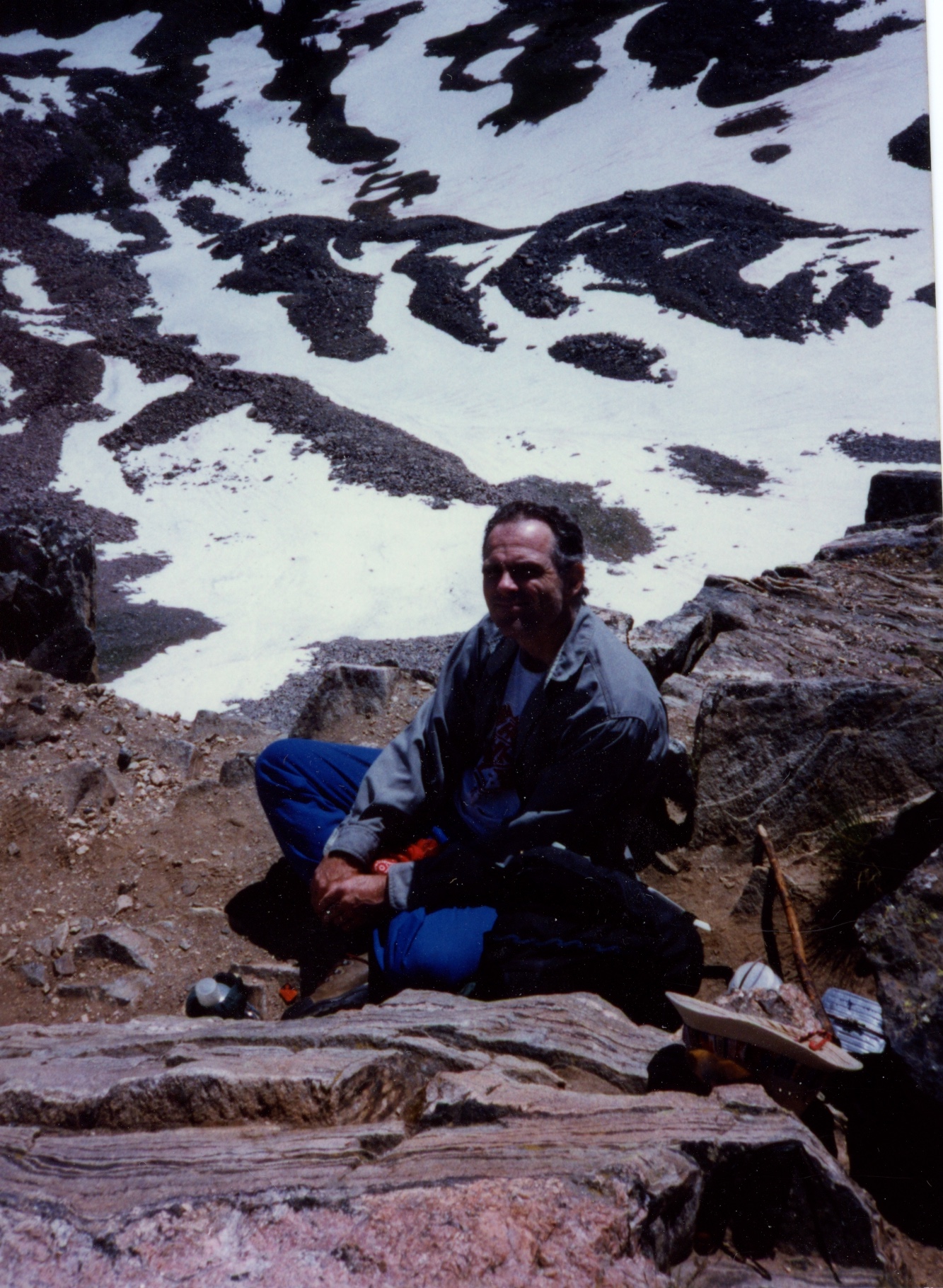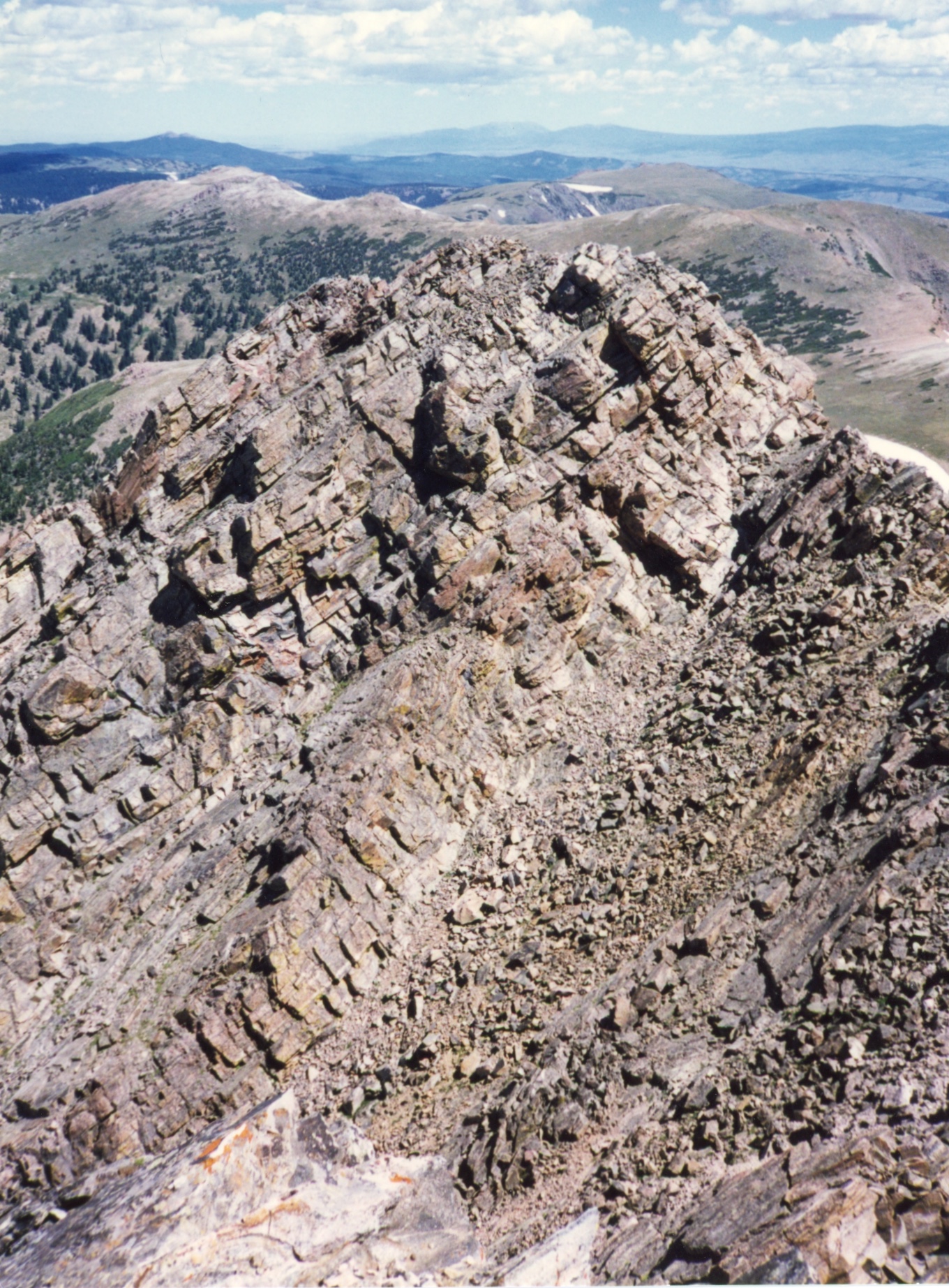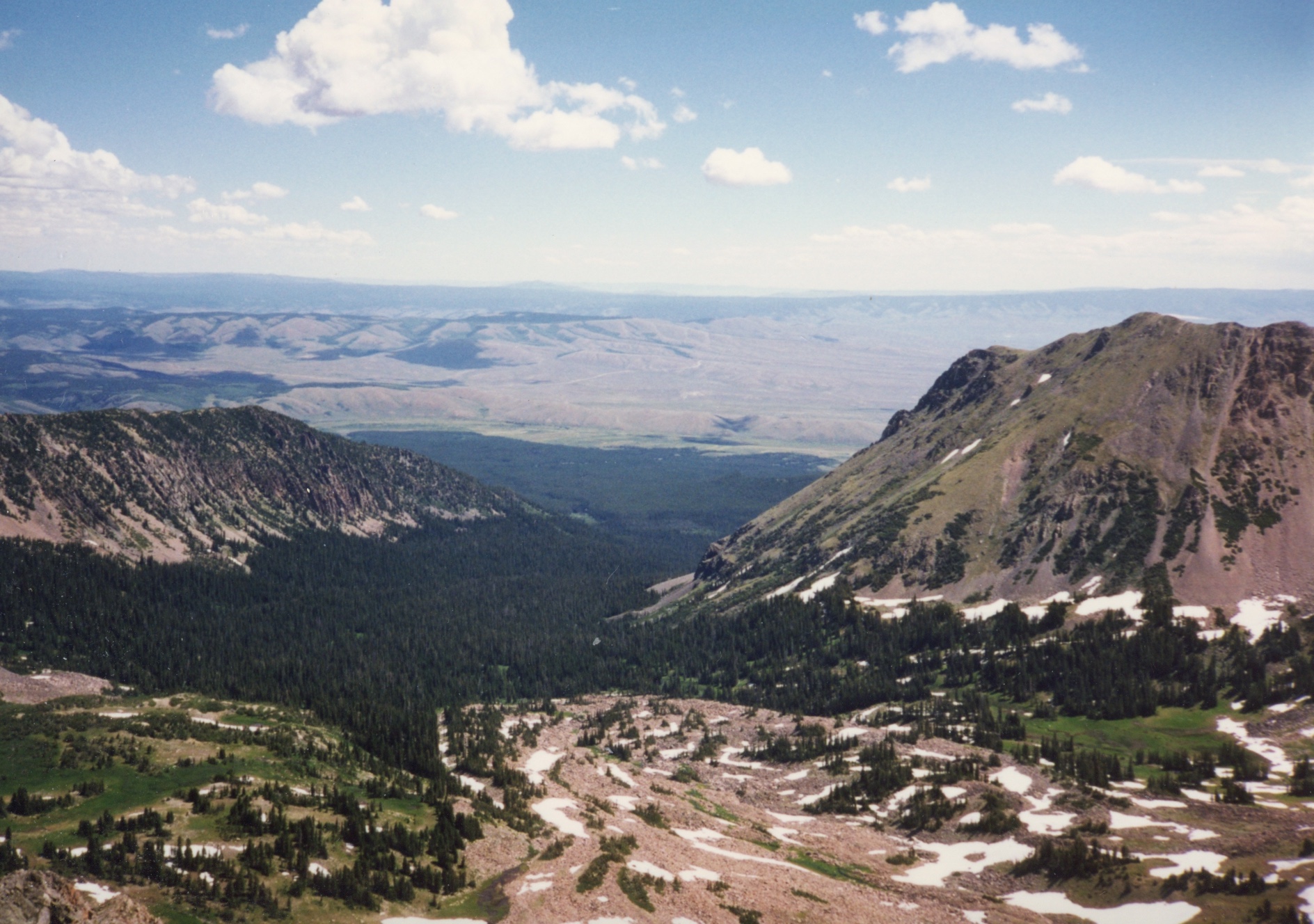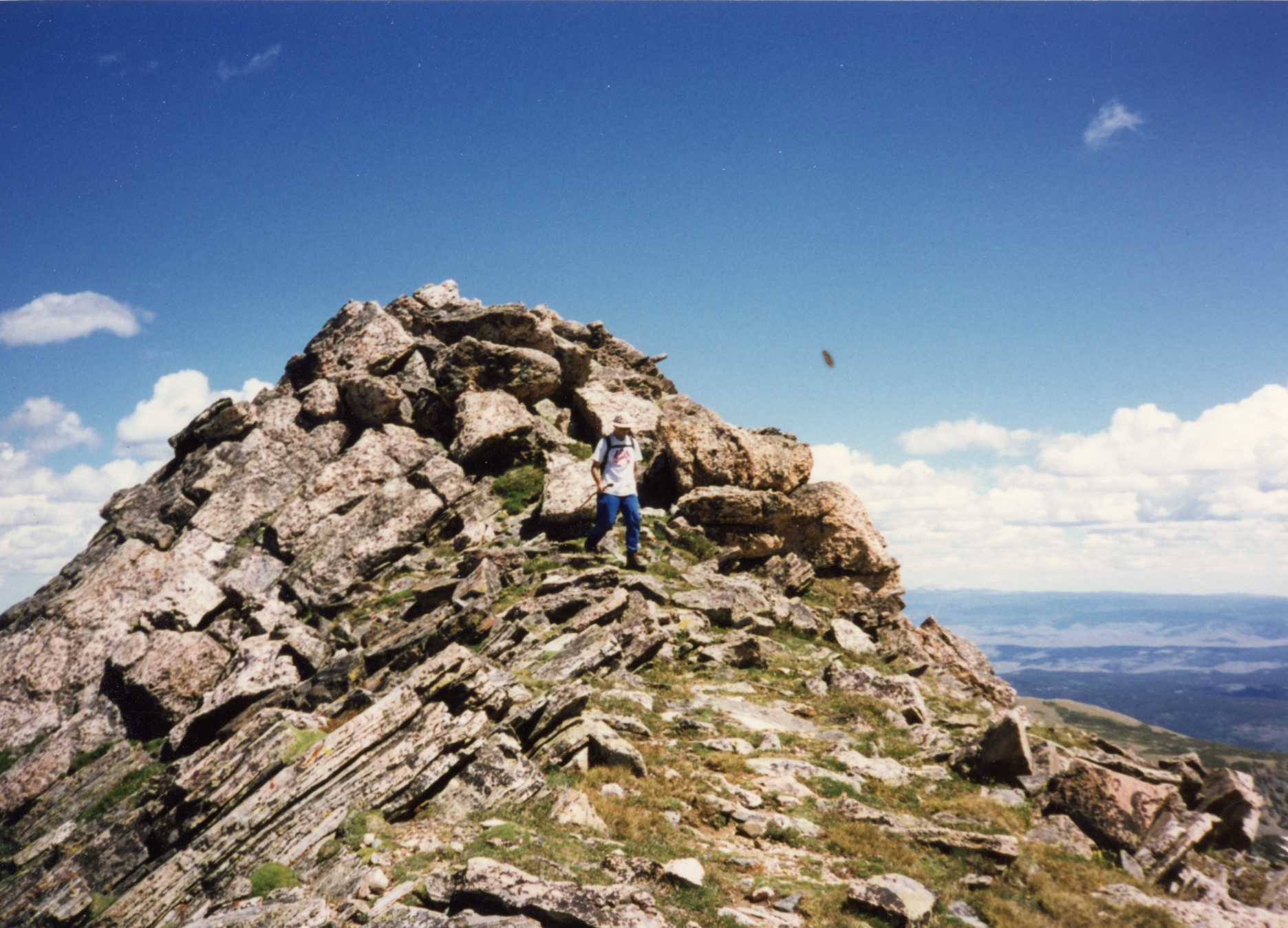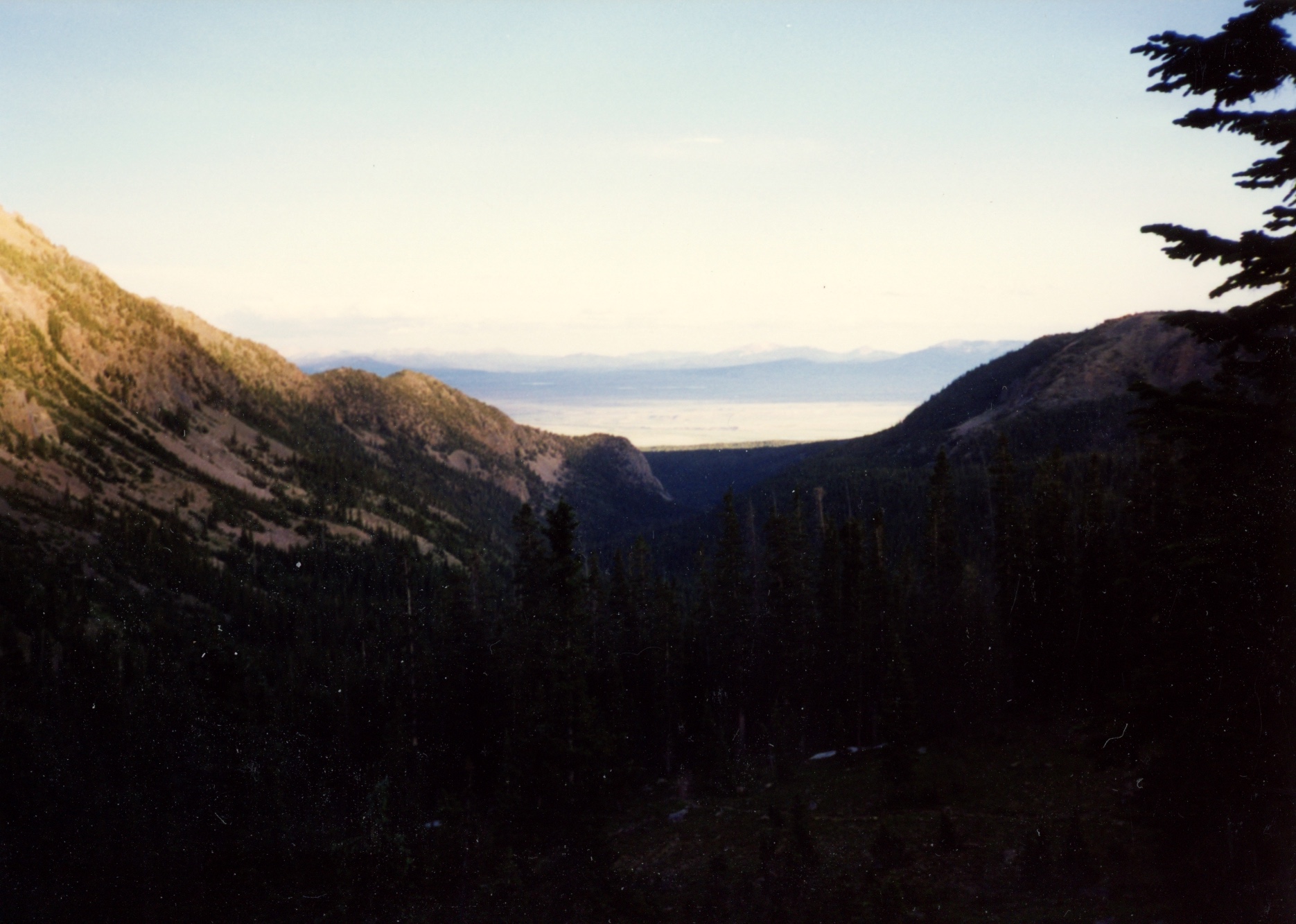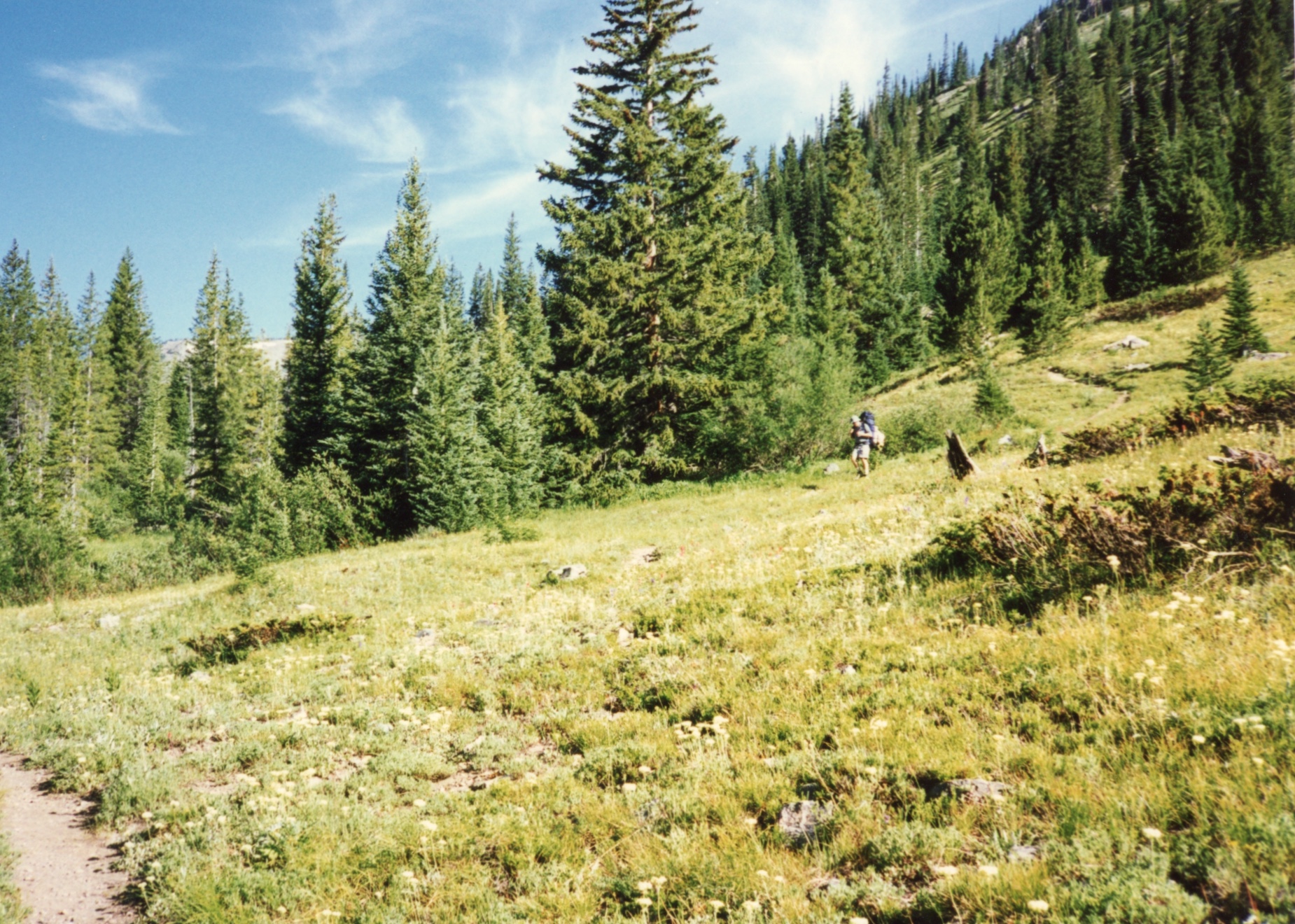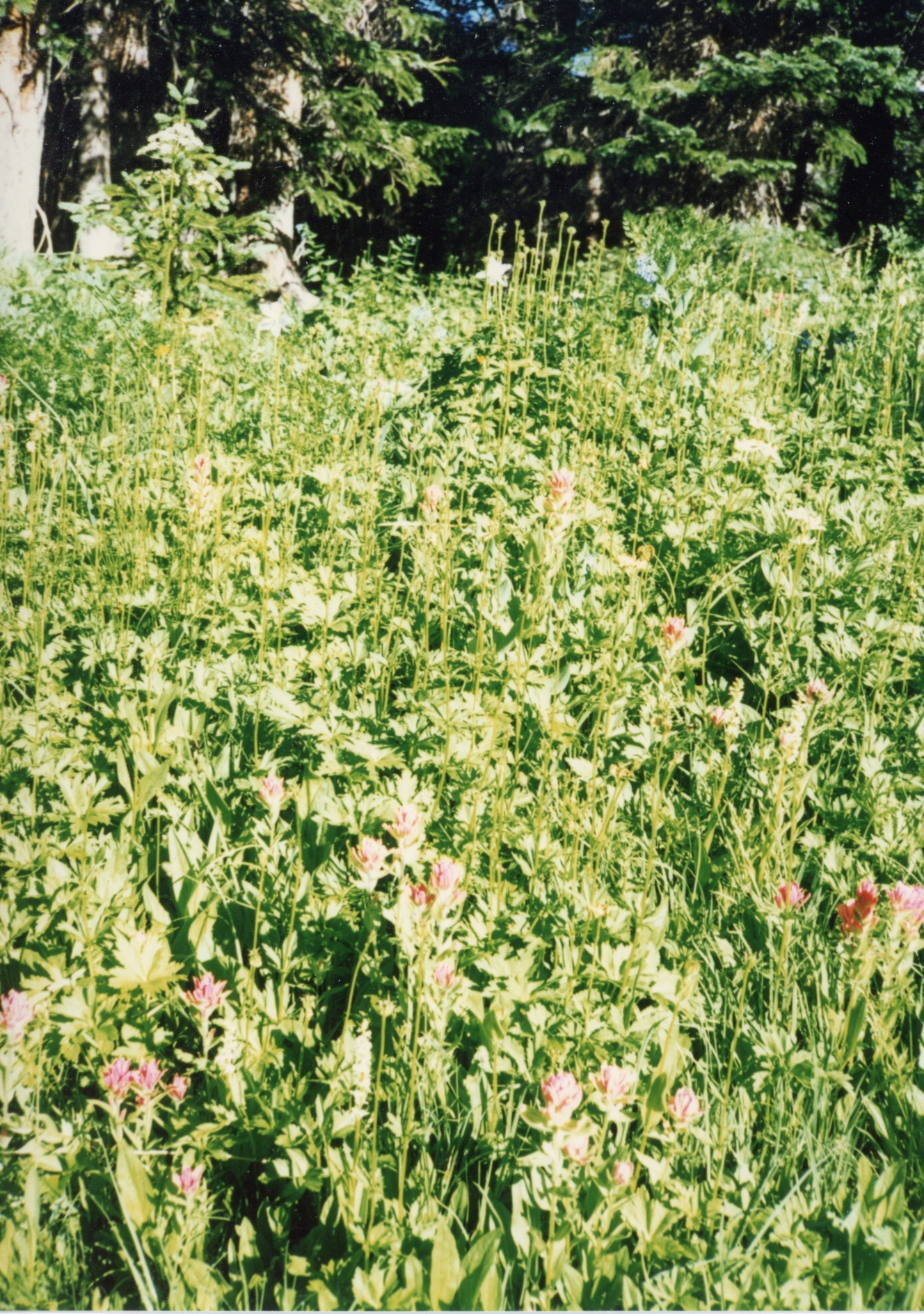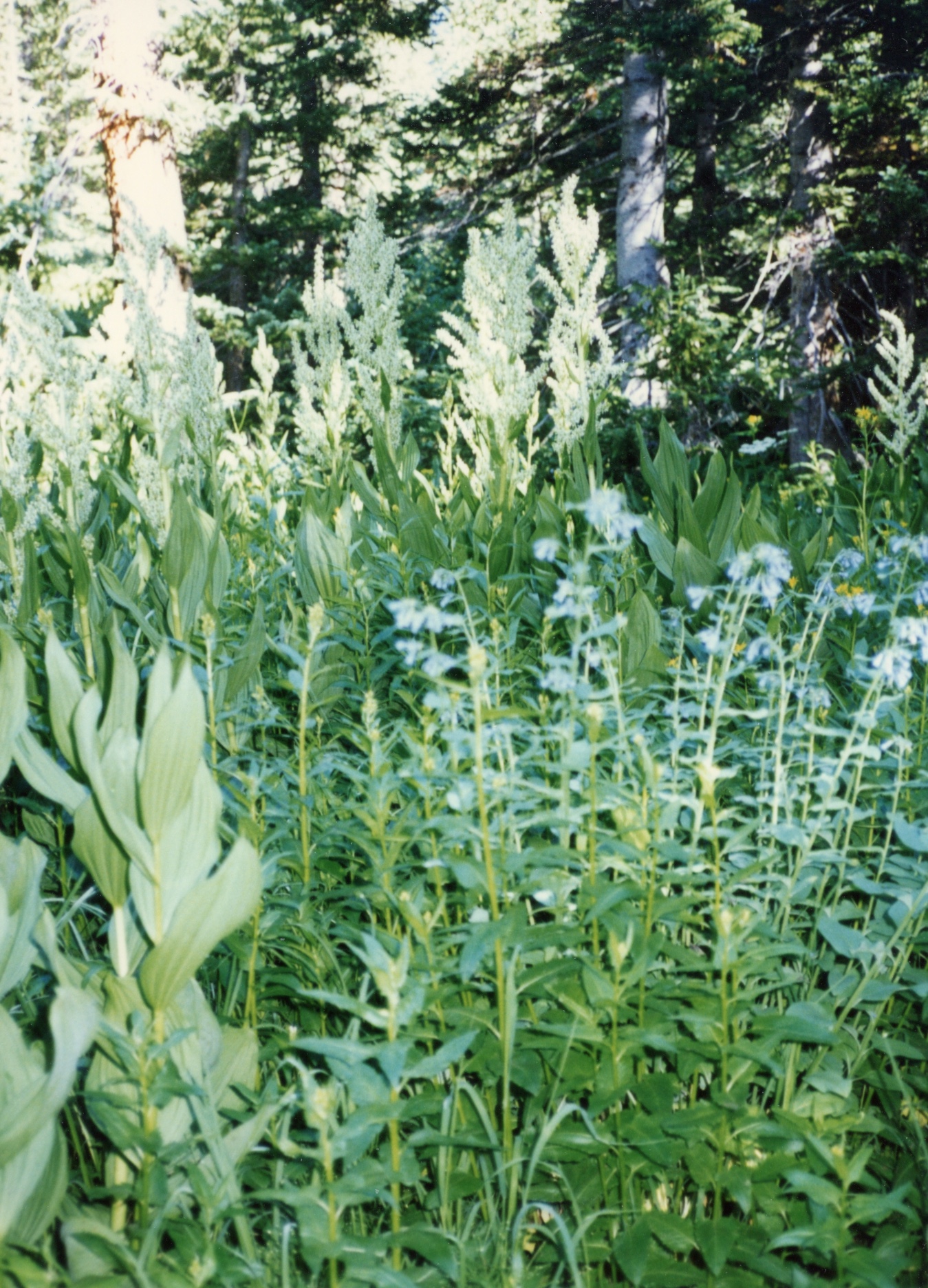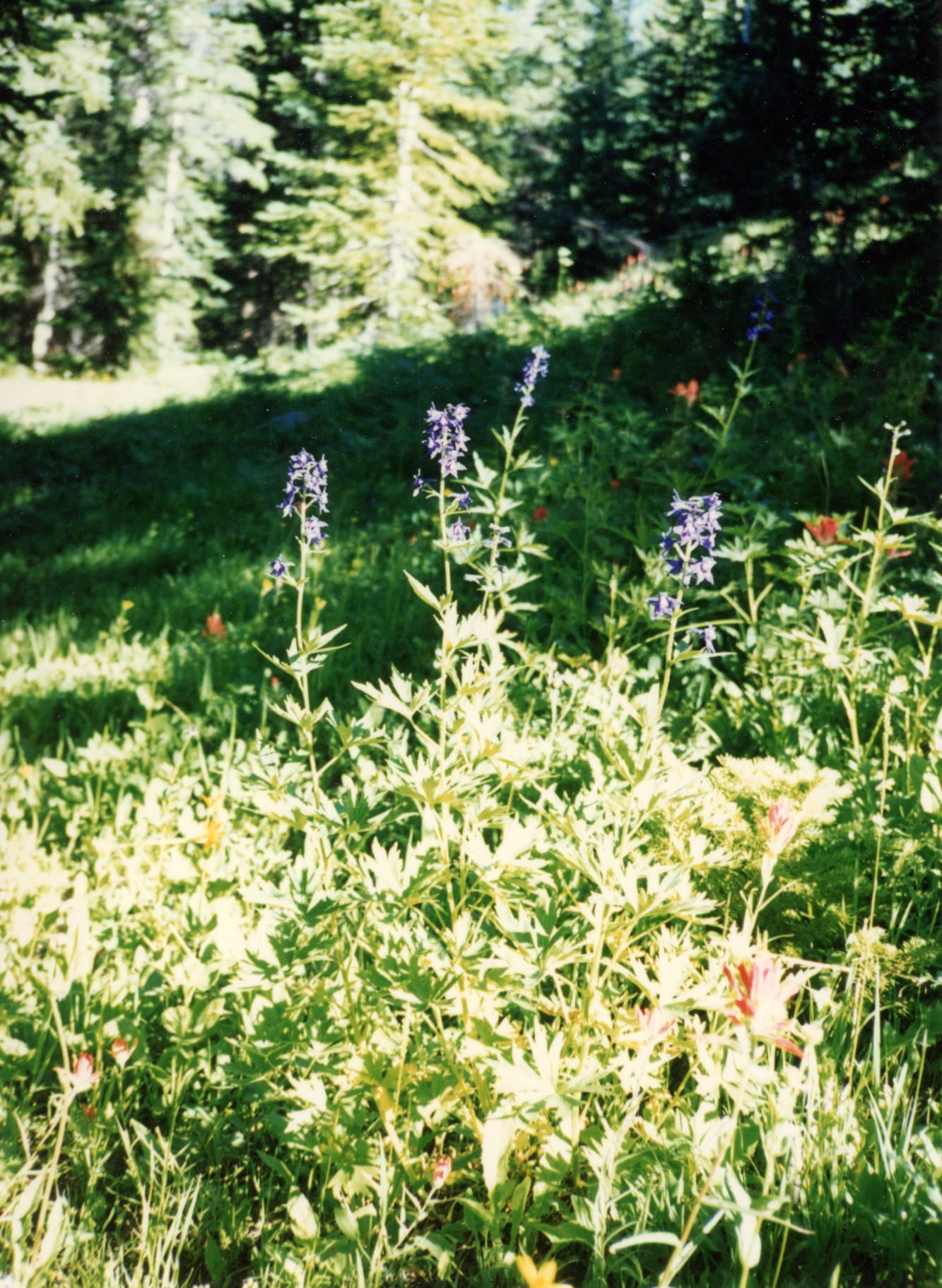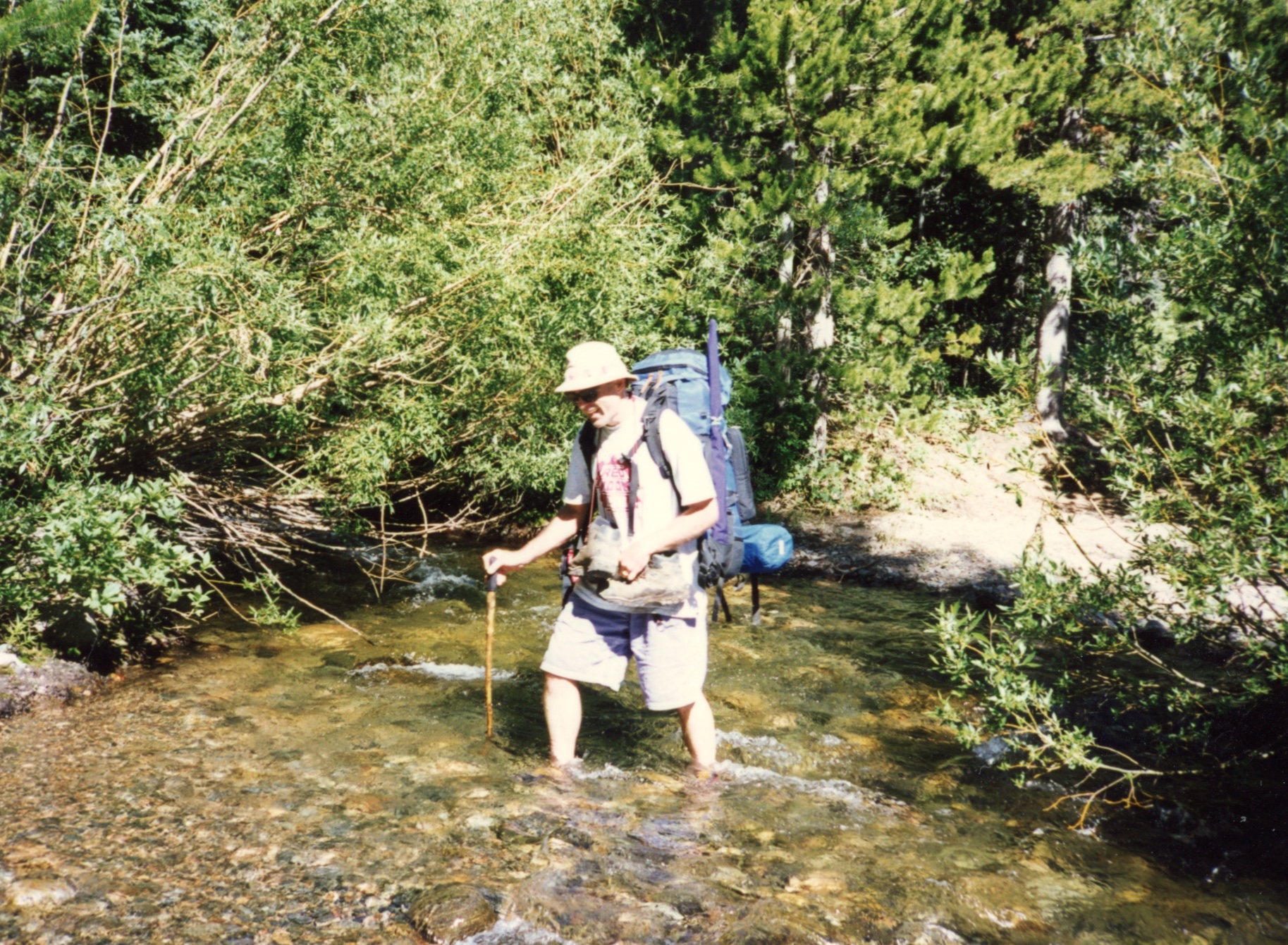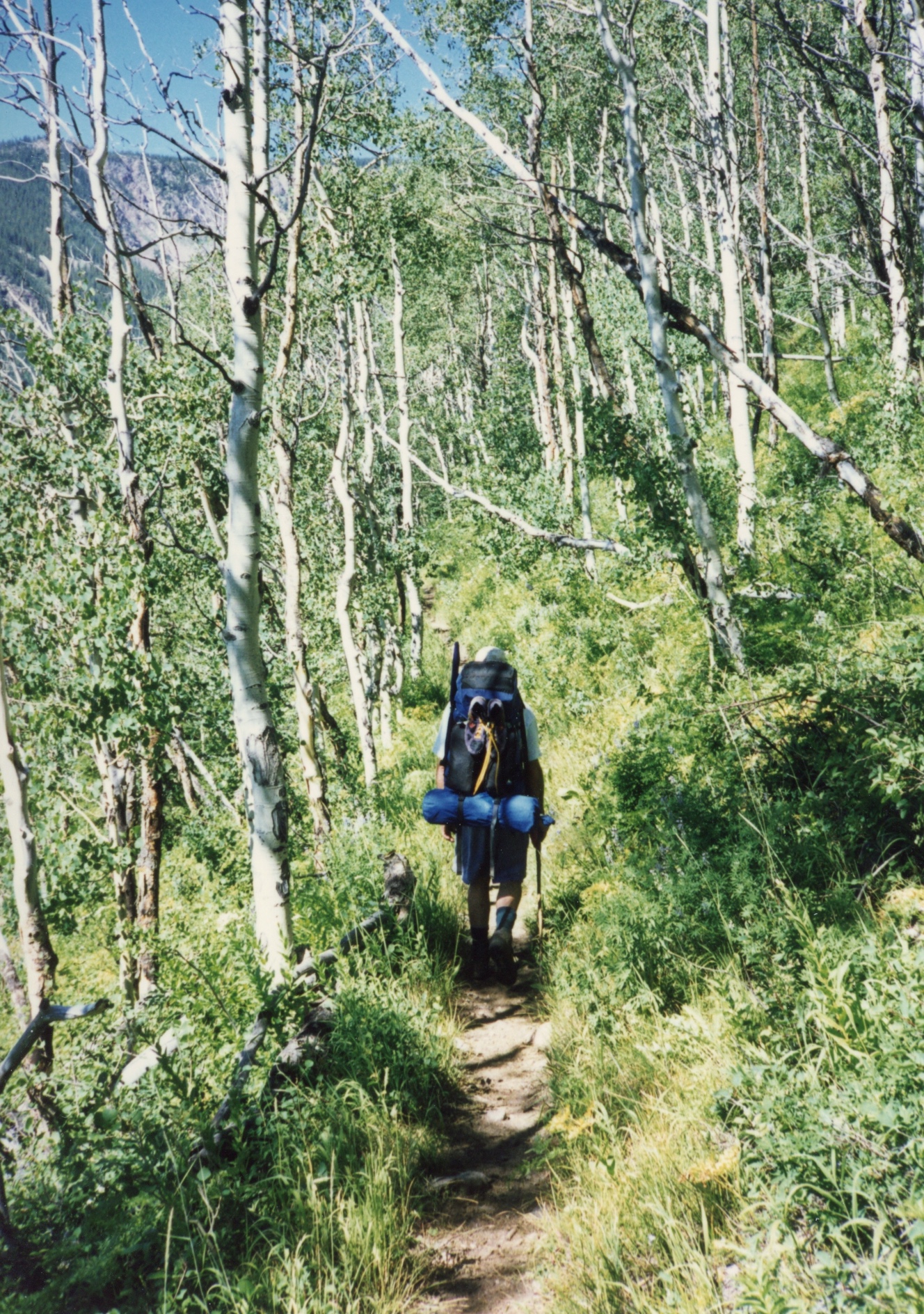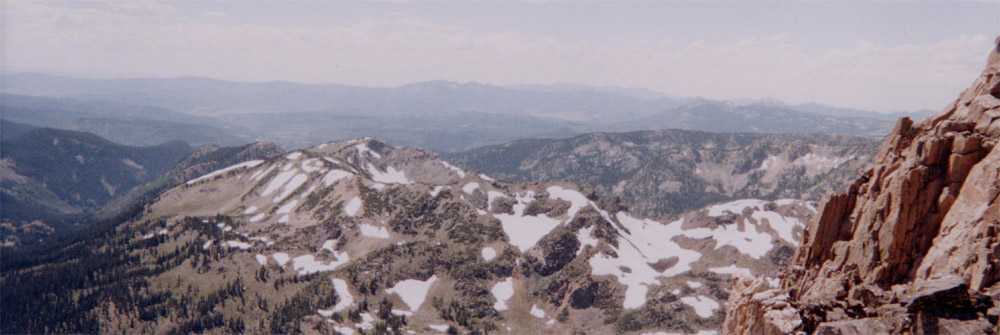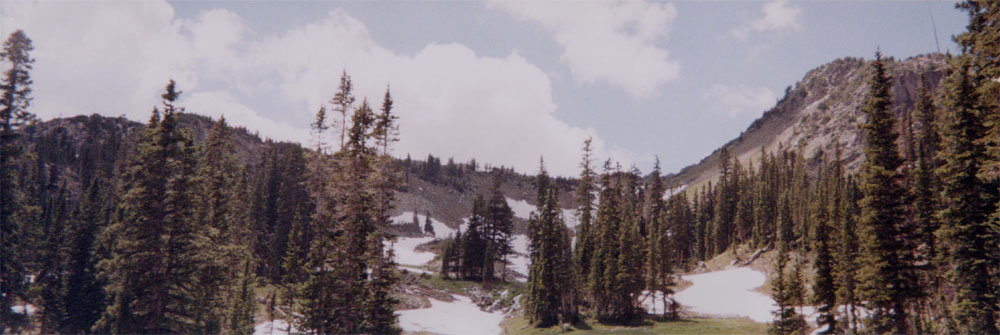Bear Lakes, Mt Zirkel Wilderness, Colorado
July 23 to 26 1997
"These fucking mosquitos suck"
Anonymous
Hike Information
Ted, Brian, and Bob made another trip to the Mt Zirkel Wilderness in 1997. Brian and Bob flew into Denver International and took a limo (!) to a motel near Westminster, CO where Ted picked us up the next day. Bob had been feeling poorly the entire morning.
We hit the trail head (which was extremely close to where we hiked in 1995 (Lake Katherine trail head)) and within a few miles Bob began to feel worse. Suddenly, it was a case of vomito negro. Brian and Ted set up a camp just off trail where we spent the night. Bob felt better the next day and we hiked up to our base camp.
There were tons of mosquitoes, it being July. This makes sense, since the last time we were in the Zirkels in July there was still tons of snow on the ground. One couldn't stop for a minute without a horde of mosquito's sucking precious bodily fluids out of your body,
And if having tons of mosquitoes was not bad enough, to make matters worse, our MSR water purifier clogged from silt in the stream we used as our water source. If only we had read the manual, as it was relatively easy to clean out in retrospect. Brian tried fishing again, once again no monkeys were seen. Our day hikes were nice and relaxing, being above the timberline and mosquito line.
We did a nice hike to the top of Flattop Mountain (12118), and Brian and Ted continued on the Red Dirt Pass and climbed Mt Zirkel (12180 ft).
This map shows three hikes in this area of the Mount Zirkel Wilderness. The hike described here is to Bear Lakes (1997). Other hikes have been done to Bighorn Lake (1995) and Mica Basin (2022).
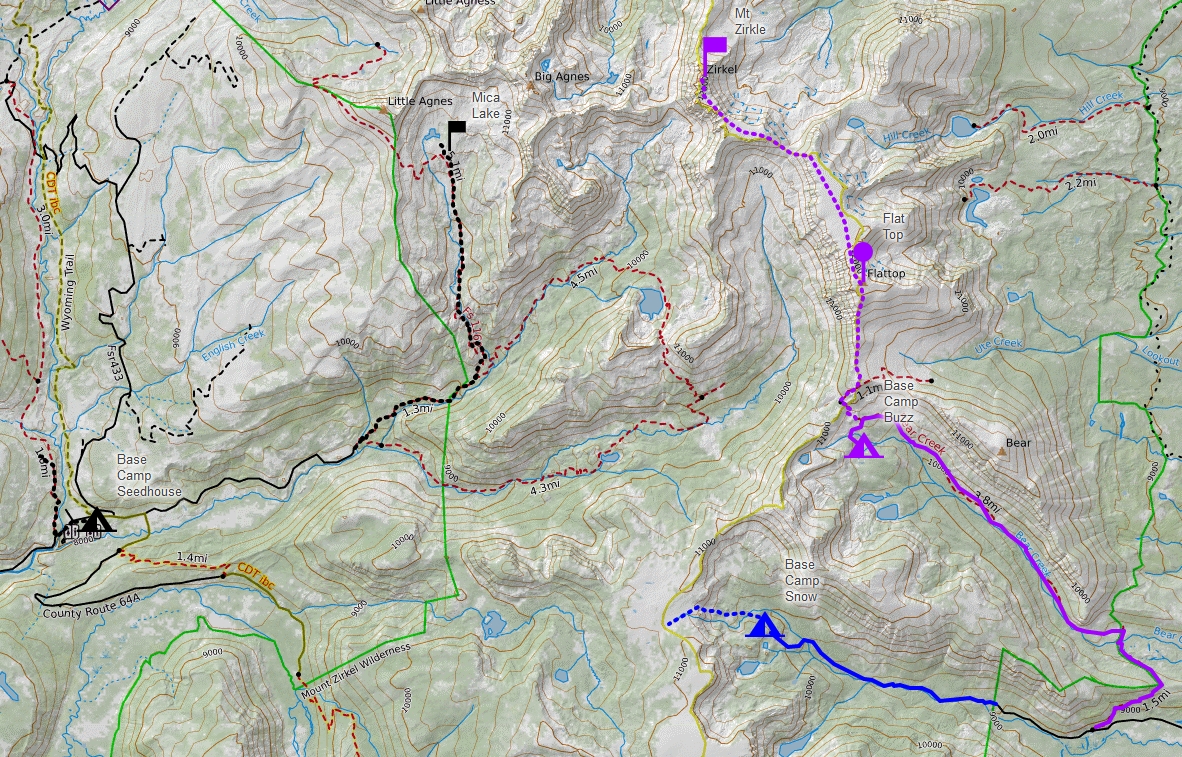
The Mount Zirkel Wilderness lies within the Routt National Forest in northwestern Colorado. It was one of the original areas protected under the 1964 Wilderness Act and has since been expanded twice to its present size of 160,648 acres. This Wilderness area is home to the headwaters of the Elk, Encampment and North Platte Rivers. It straddles the Continental Divide and encompasses the rugged Sawtooth Range, as well as portions of the Park and Sierra Madre ranges.
The Wilderness is named after Mount Zirkel (12180 ft), the highest peak in the Park range. Clarence King, one of the leaders of the Fortieth Parallel Survey named it after German geologist Ferdinand Zirkel (1838-1912), a pioneer in the study of the optical characteristics of thin slices of rock under a microscope (petrography).
The purpose of the Geological Exploration of the Fortieth Parallel (1867 to 1872; "Fortieth Parallel Survey") was to study and describe the natural resources within a 100 mile border around the Union and Central Pacific railroads from northeastern California, through Nevada, to eastern Wyoming. The comprehensive survey, under the direction of A. A. Humphreys (military general) and Clarence King (geologist), mapped the area along 40th parallel (they couldn't name it "What is right next to the railroads that we can mine, harvest, or shoot" could they?), studying the geology, looking for gold deposits, and collecting plants and animals.
